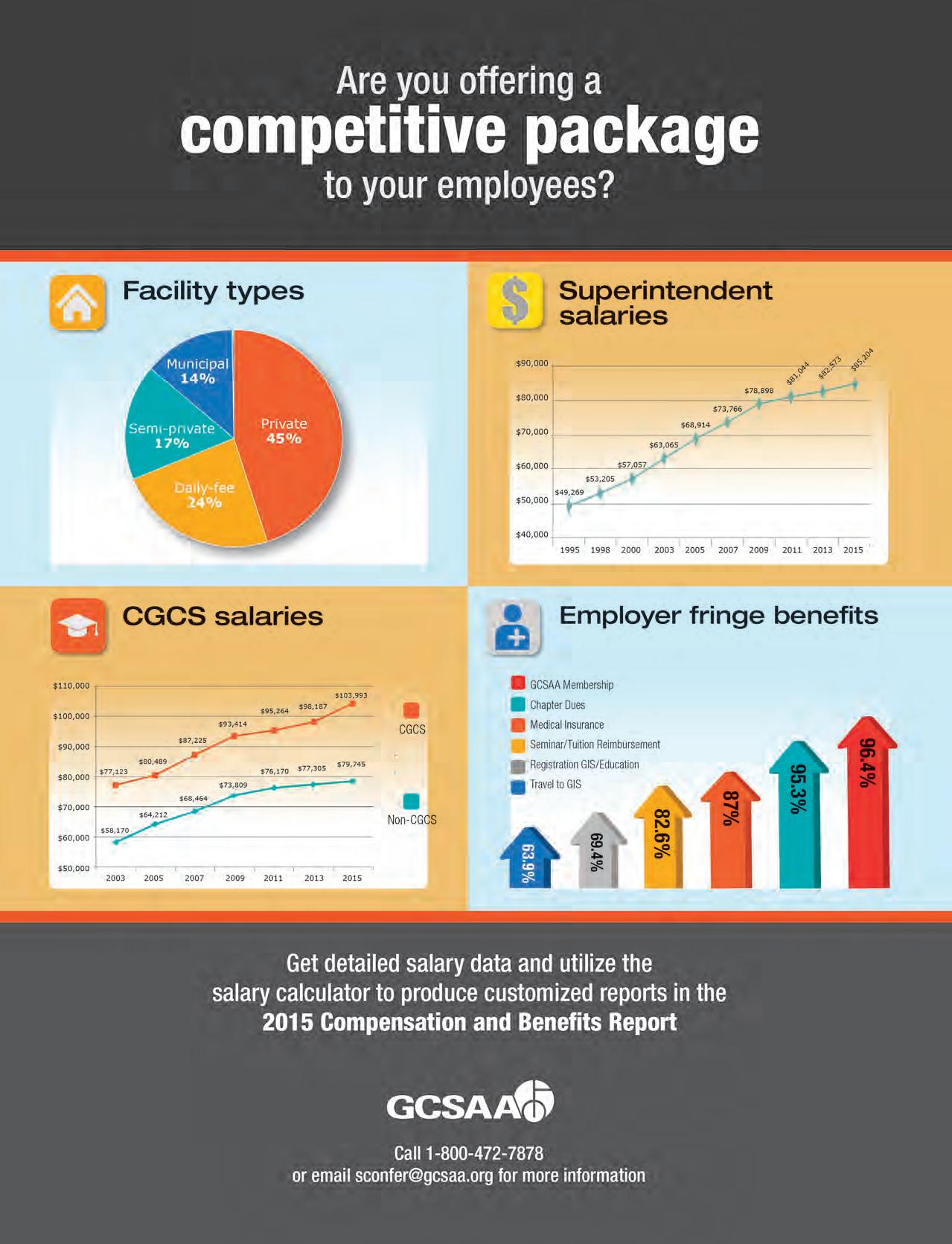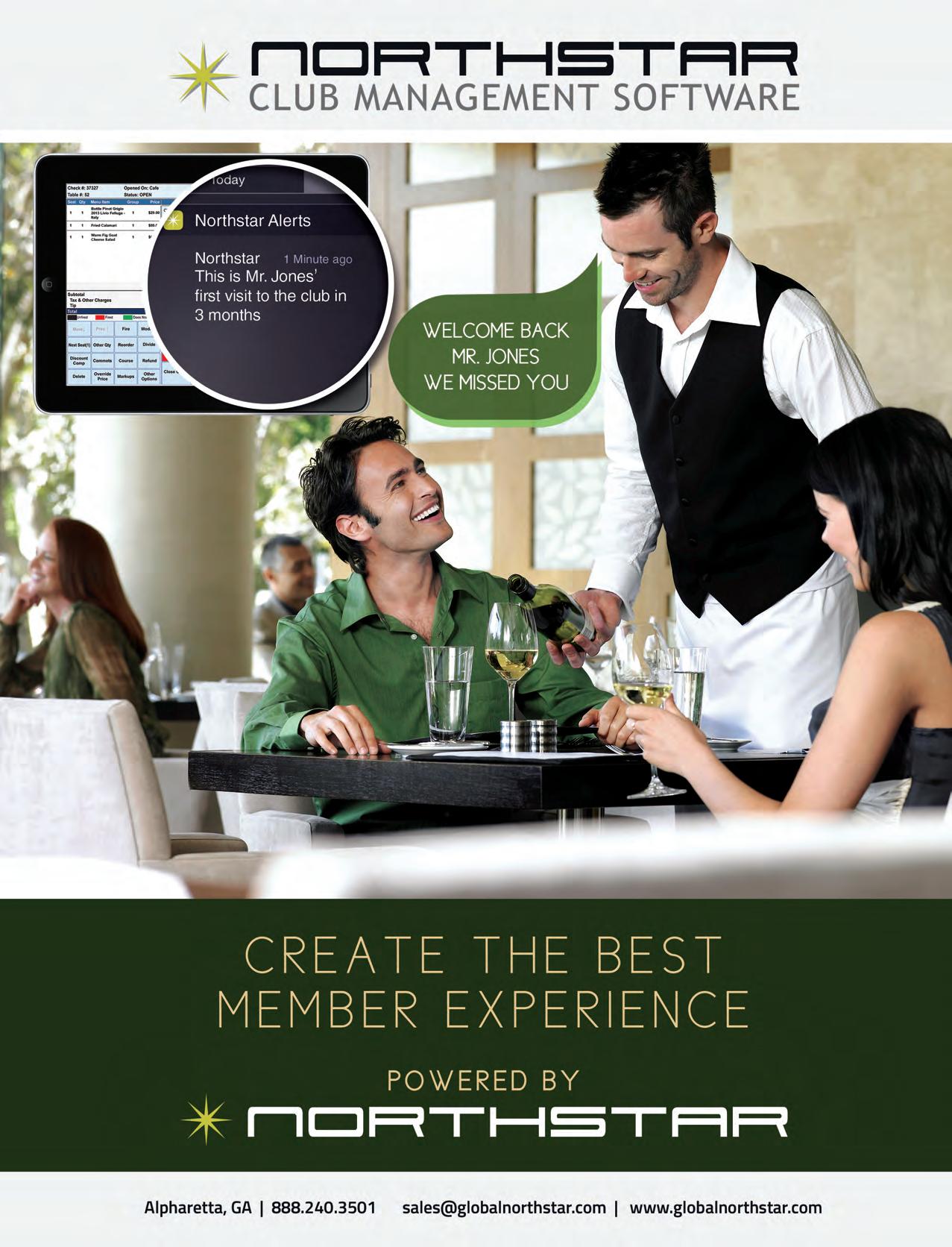







Pete Bevacqua now has several years under his belt as the Professional Golfers’ Association chief executive officer…and although some things have changed, one significant point hasn’t.
“Overall our mandate is to serve the members and grow the game,” Bevacqua reminds. With that in mind, the PGA is certainly going down a path Bevacqua feels confident will do just that.
The PGA with its long range strategic plan focuses on eight core areas – employment, education, properties, player development, PGA REACH, sections, championships and global.
For PGA professionals this means not only teaching private club members about the game, but also understanding the ‘club dynamic’ and making golf as enjoyable an experience for members as possible.
“Yes, our strategic plan places an emphasis on teaching, playing and the business of the game. But there’s no replacing the personal connections that the pro makes with members. That’s the best way to situate yourself within the club environment…know your customer base. People are busy and that can be more challenging at some clubs, but our professionals need to connect themselves to their membership,” Bevacqua stressed.
Yes, organizations evolve over the years, just as private clubs change, and sometimes adapting to a changing environment is the most enlightening aspect of the evolution. Certainly many private club members will agree with that assumption. ■ ■ ■
John Fornaro’s Publisher’s Perspective this issue focuses on the Second Distinguished Ideas Summit…a gathering of BoardRoom Distinguished Clubs for an exchange of ideas.
This idea exchange works because other clubs will ‘borrow’ the ideas and implement them with the objective of enhancing the member experience.
“These top club are the innovators and we’re the facilitator in helping move these ideas along to lower-tiered clubs. The ideas presented at the
Distinguished Ideas Summit in San Francisco have worked and we want others to learn from the experience,” John explained.
The Distinguished Ideas Summit is going to happen again… September 19 and 20, 2016 at the Union League Club of Philadelphia with host general manager and COO Jeff McFadden.
This is one of the most outstanding Distinguished Emerald Clubs of the World and while it’s still some time away, the summit is shaping up to be another interesting and enterprising exchange of ideas.
Bill Boothe in his Technical Perspectives column raises an interesting topic he first broached back in 2002…how do private clubs handle their information technology issues? For example, “Who at your club has the time – and expertise – to take care of all of the PCs, POS terminals, printers, servers, switches, cabling and software, not to mention the constant barrage of operations questions from the club’s personnel?”
Bill pitches his idea again, and in 2015, it makes a lot of sense…share an IT professional. Have a read, it might just trigger some action at your club and make everyone’s work just a little easier.
And finally, we continue with our series on BoardRoom magazine’s top private club presidents with stories about: Harald Elisson, General Manager, Black Mountain Golf Club, Hua Hin, Thailand; Gregory Kopan, President, Inverness Club, Toledo, OH; Pete Kujawski, President, Sarasota Yacht Club, Sarasota, Florida, and William H. Lichtenberger, President, Harbour Ridge Yacht and Country Club, Palm City, FL. BR
Got a comment?
Drop us a note: dave@boardroommag.com
Publisher/CEO
John G. Fornaro
Editor/Co-Publisher
Dave White
Associate Editor/Creative Director/Co-Publisher
Heather Arias de Cordoba
APCD Executive Director
Bill Thomas
Editorial & Marketing Director
Dee Kaplan
Account Manager
Dina Alleluia-Carr
Website and Subscriptions
Joshua Nuzzi
Contact Information
www.BoardRoomMagazine.com | www.apcd.com (949) 376-8889 or (949) 365-6966
Subscriptions
www.BoardRoomMagazine.com (949) 376-8889
Featured Columnists
Lisa Carroll
Rick Coyne
Henry Delozier
John G. Fornaro Bonnie J. Knutson Kurt Kuebler Whitney Reid
Contributing Writers
John Bartilomo
Jan Beljan
Bob Bodman
Chris Boettcher
Bill Boothe
Peter Cafaro
Ronald F. Cichy
Michael Crandal
Dave Doherty
John Embree
Michael Froese
Larry Hirsh
Eileen Korte MiRan Kim
Lynne LaFond DeLuca
Peter Nanula
Macdonald Niven
Gregg Patterson
Dennis Pearlman
Michael Phelps
Praneet Randhawa
Gary Sigel







Michelle Tanzer
Alex Taylor
Kaleena Weaver
Bryan D. Webb
Bruce R. Williams
Penelope L. Wong





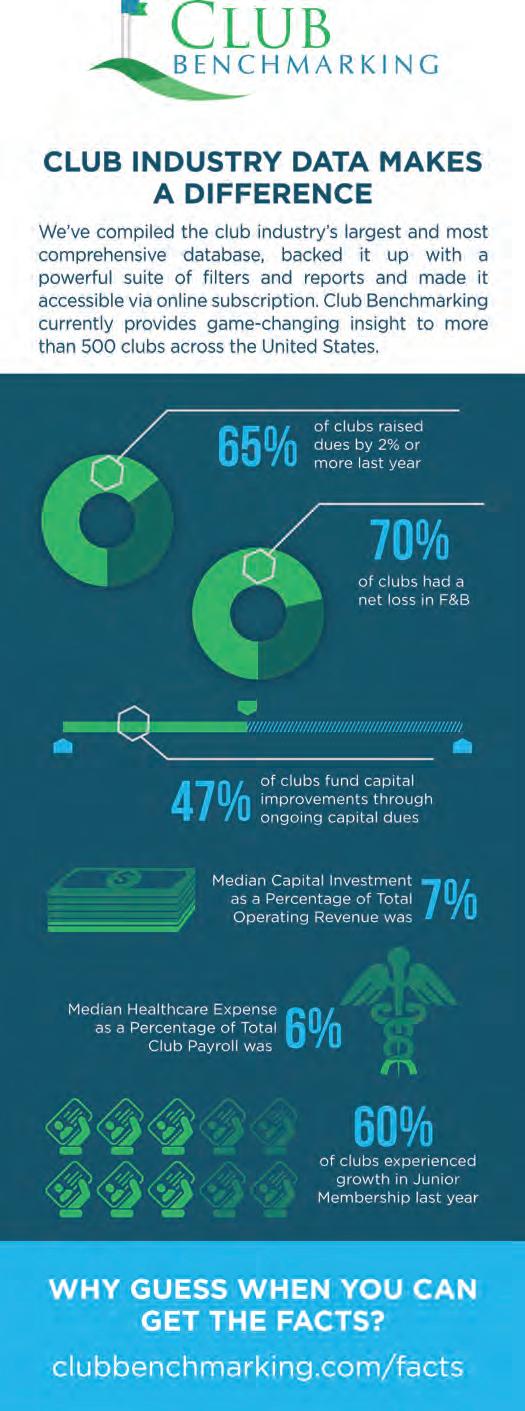

PUBLISHER’S PERSPECTIVE | 10

BY JOHN G. FORNARO
BoardRoom’s Distinguished Clubs are truly a special grouping of private clubs…exceptional clubs based on their extraordinary delivery of a first class Member Experience to each and every one of their members. CASE STUDY | 12
GETTING YOUR BOARD ON BOARD| 16

BY
WHITNEY
In a competitive marketplace, private clubs that do not have a unique value proposition find themselves trying to compete on price, resulting in cost cutting measures. This practice affects product and service quality and the club’s brand perception, unless the club’s business model is designed to be price differentiated.
GLOBAL PERSPECTIVES| 36

BY HENRY DELOZIER
Strategic planning requires strategic thinking. Most boards of private clubs are served by conscientious and capable souls with tremendous experience in the boardrooms of the world. For some reason, though, many clubs boards do not think strategically.

RICK COYNE
Unlike the Charles Dickens novel, this tale is about the private club and the two distinctly different communities it serves. Both are infinitely definable. Let’s start with the first community – the club’s existing members. Where do they come from? Depending on the club type, they can be from a variety of places.

BY BOB SALMORE
Several years ago, some of my colleagues developed “The Circle of Truth” to explain why a club’s food and beverage operation is not a restaurant. The concept provides eight operational realities that distinguish club dining from commercial restaurant establishments.
MEMBERSHIP MUSINGS | 74

BY BONNIE J. KNUTSON
If I’ve heard it once, I’ve heard it a million times. At CMAA World Conference. At chapter workshops. At BMI III. We are a family friendly club. Okay. So just what does that mean?
HFTP | 14

BY FRANK WOLFE
More service…more revenue…low cost! Yes, you read that correctly. Unless your club prohibits smart phone use on “campus,” there is a new technology that can provide previously unheard of membership amenities and revenue potential at a very low cost.
BOARDROOM BASICS & BEYOND| 24


SET
BY KURT KUEBLER & LISA CARROLL
A couple of years ago a candidate named Kyle Draper, an AGM at the time, submitted his resume for a general manager search. The club was interested in candidates who had strategic planning experience.
FOOD FOR THOUGHT | 84

BY BILL SCHWARTZ
All clubs have some type of computerbased accounting system. These systems have all the standard modules, such as general ledger, accounts receivable, accounts payable and perhaps many others. But few, if any have a food and beverage module.

By Dave Doherty
By Bruce R. Williams
Macdonald Niven
By
Penelope L. Wong
By Michael Froese
FEATURED SUPPLIERS
Hilda
Lynne LaFond DeLuca






By Michael Crandal
By Bob Bodman
Motivation By Chris Boettcher
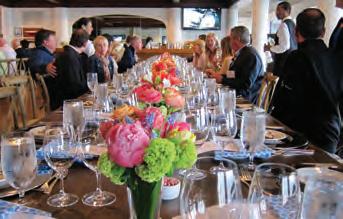
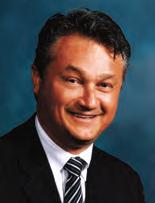
“by the end of the 2015 boardroom Distinguished ideas Summit i had more than 50 items and ideas i wanted to implement at the St. Francis Yacht club.”
And that, in a nutshell, describes Ron Banaszak’s experience at the second annual BoardRoom Distinguished Ideas Summit we hosted recently in Napa Valley and San Francisco.
BoardRoom’s Distinguished Clubs are truly a special grouping of private clubs…exceptional clubs based on their extraordinary delivery of a first class Member Experience to each and every one of their members.

Distinguished Ideas Summit is not just an event, but also a different way of learning about what works for private clubs. The Distinguished Clubs (Emerald and Gold) award program aims to vitalize and preserve private clubs by fostering a ceaseless drive to improve the Member Experience offered by private clubs throughout the world. With the Summit, we have to walk the talk. The club leaders are our members…our customers and we have to give them great service and a great member experience like they’ll create for their members. That’s our objective and that’s what we’ve accomplished.
We’ve realized what we’ve created by showcasing the most outstanding private clubs across the country. It’s a model with a message that can help clubs grow and enhance their member experience.
General managers of the top Distinguished Clubs across the country gathered for an exchange of ideas and discussion. The fact that every club has unique ideas and ever club is absolutely unique, the Distinguished Ideas
Summit brings out some of those ideas in a format that has worked. It’s quick and it’s a meaningful learning environment.
The fast-paced Summit allowed us to host the distinguished club representatives at the ‘Taste of Oakville”, a special wine tasting event hosted by the Oakville Winegrowers of Napa Valley, featuring some of the country’s most outstanding wineries.
A second day of presentations at San Francisco’s Olympic Club attracted attention as managers in 20-minute segments, presented ideas they’ve implemented in their clubs…ideas which other managers now are able to adopt at their clubs.
To wit: “After assembling my board report, I proudly showed my board the value enhancements our members will receive, as well as showcasing the high quality of the clubs with whom I was able to network,” added the enthusiastic St. Francis Yacht Club general manager.
“The Distinguished Ideas Summit accomplishes a great exchange of information, with the premiere private clubs, in the shortest period of time, and for the least expense.”
Banaszak’s Distinguished Emerald Club of the World also hosted the summit participants at a gala dinner, featuring another unique member experience – a sterling performance by the Sons of the Season (SOTS), a St. Francis all-male singing group.
SOTS is a very special volunteer group, with a special memberships that allows these members to gather and participate at St. Francis…a unique membership experience, indicative of what this club offers its members.
While this is our second Summit, (the first happened in Florida last year) it seems some people just don’t get what distinguished clubs program is all about. They’re wondering why we’re helping the country’s top clubs.


unlike the charles Dickens novel, this tale is about the private club and the two distinctly different communities it serves. both are infinitely definable. let’s start with the first community – the club’s existing members.
Where do they come from? Depending on the club type, they can be from a variety of places. A yacht club’s members may come from 30 minutes drive time or more. A city club may draw from companies less than six blocks away. A second home community may attract members from all over the country. But for this tale, let’s stick to the urban country club whose member community usually lives within roughly 15 minutes drive time.
What’s the population in that 15 minute drive? How many households can afford membership? What’s the family make-up in the drive time? Unfortunately, for most clubs, these are largely conjectural questions with purely notional answers.
Yet, devoid of these rudimentary market realities prices, categories of membership, programs and events are all seemingly working at your club. It happens in part because you develop a sense for what your members want and what they are willing to pay. Some clubs that do surveys actually have the quantitative means of determining exactly what members want and need.
That brings us to the second community served by the club – the next generation of potential members. Where do they come from? The same place as the existing members.
Why aren’t they already members? The answers are varied. They may be young families without time because of commitments to the children’s activities, maybe growing into salaries capable of affording membership, or maybe just moving into the area. Again, this second community is infinitely definable.
As a side note, both communities are markets for what your club is selling – memberships and services. Both communities are within the same drive time radius. Most importantly both communities are essential to your survival. And here’s where it gets interesting…
Everything you do to serve your first community sends a message to your second community about who you are and any relevance you might have to them. It’s called brand relevance.
Let’s take for example the club with an advanced membership age that programs itself specifically to this age group. If your 15-minute drive time is mostly senior citizens you may not have a problem, but if it’s made up of mostly younger families you have a major issue.
The second community sees and hears that you are mostly older people with nothing for the younger family. You have no brand relevance. So, in this case, while the first community is well served, the second community is not. It’s an unsustainable model.
There are several relevancies that need to be considered by all clubs. Age and the cultural diversity within generations is only the tip of the iceberg. Females today are making 85 percent of discretionary decisions and women over 50 control 75 percent of the nation’s wealth.
Roughly translated, this means that even if you have the most incredible golf course in the city, without something for her and her kids, there’s a good likelihood this family will continue shopping for a club that meets more than the husband’s needs.
Time is the new commodity. Nobody has enough. What does this mean for how we program activities and events, or even dining opportunities?
Young families have sports practices and events that would make an inexpensive “after practice” buffet an attractive way for the family to have the time together and relieve mom of the chore of cooking.
Golf could plan shorter, less competitive events and even promote golf to the non-golfing members of the family. I’m talking fun stuff, not just lessons. It’s growing the game from within your own four walls.


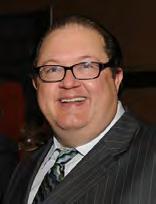
More service…more revenue…low cost! Yes, you read that correctly.
Unless your club prohibits smart phone use on “campus,” there is a new technology that can provide previously unheard of membership amenities and revenue potential at a very low cost.
To fully disclose, I’m not a salesman and have zero financial interest in beacon technology. However, since my contribution to BoardRoom is to help create awareness of potentially beneficial club technologies, it would be a disservice not to point this new technology out to you and/or your board of directors.
Beacon technology operates kind of like a lighthouse. Rather than throwing out a big beam to guide a boat to shore, it throws out a very small beam of specialized information to a device, like a smart phone or a tablet, and hopefully reels in our customers, or in this case, members.
A physical beacon is a hockey sized puck device that can be put practically anywhere…the ones I have seen look like smoke detectors.
Imagine if you were able to put 100 staff members around your club that could whisper things to your members like,
• A severe thunderstorm is minutes away, seek shelter now!
• Next weekend is the father/daughter dance, have you made your reservations?
• The club’s board meeting is tomorrow night.
• Your club F&B minimum has several dollars left for this month, would you like to buy your foursome a round of drinks? Or,
• The top places in this month’s member charity drive are…
Beacon technology could “say” these things for you every time your members came to your club. These “whispers” could be as individual or as general as you and your membership want them to be.
For example, if a member wanted to opt in and provide you their personal cell phone informa-
tion, you could customize messages specifically to them and as they move around the club within a few feet of a beacon they could receive these messages.
So as not overload your members, the beacons could be programmed to deliver one message per visit to the club or one message per visit to a specific area of the club (i.e. once inside the parking lot, once in the clubhouse, and once on the golf or tennis courts OR even more).
If a member did not want to opt in, but had their Bluetooth on, you could still send them generalized information, which could be sent to any smart device within the broadcast range.
There are many good providers of this technology in the marketplace. Since HFTP uses RoamingAround for our HITEC location engagement solution, I asked CEO Michael Garvin for some other ideas on how this technology could be used. (Again to disclose, Michael’s company currently does not market to clubs).
“Beacon technology also has the capability to save lives,” Garvin said. “If a golfer is at the 15th hole and suddenly passes out, this technology can help a club member find the nearest location to get them the quickest assistance.
“The technology can also help members find their way around your club. ‘Wayward’ employees that might be ‘lost’ during their shift and the technology can even remind staff members of assigned duties.”
This new technology might not be for every club, but there are many clubs that will find it could have some very positive advantages. br
As HFTP’s CEO, Wolfe CAE oversees the association’s operations, as well as represents the association worldwide at industry events, on industry boards and committees and via the news media. As the spokesperson for HFTP, Wolfe frequently speaks on hospitality finance, technology, social media and travel issues to varied audiences and has presented in more than 20 countries.
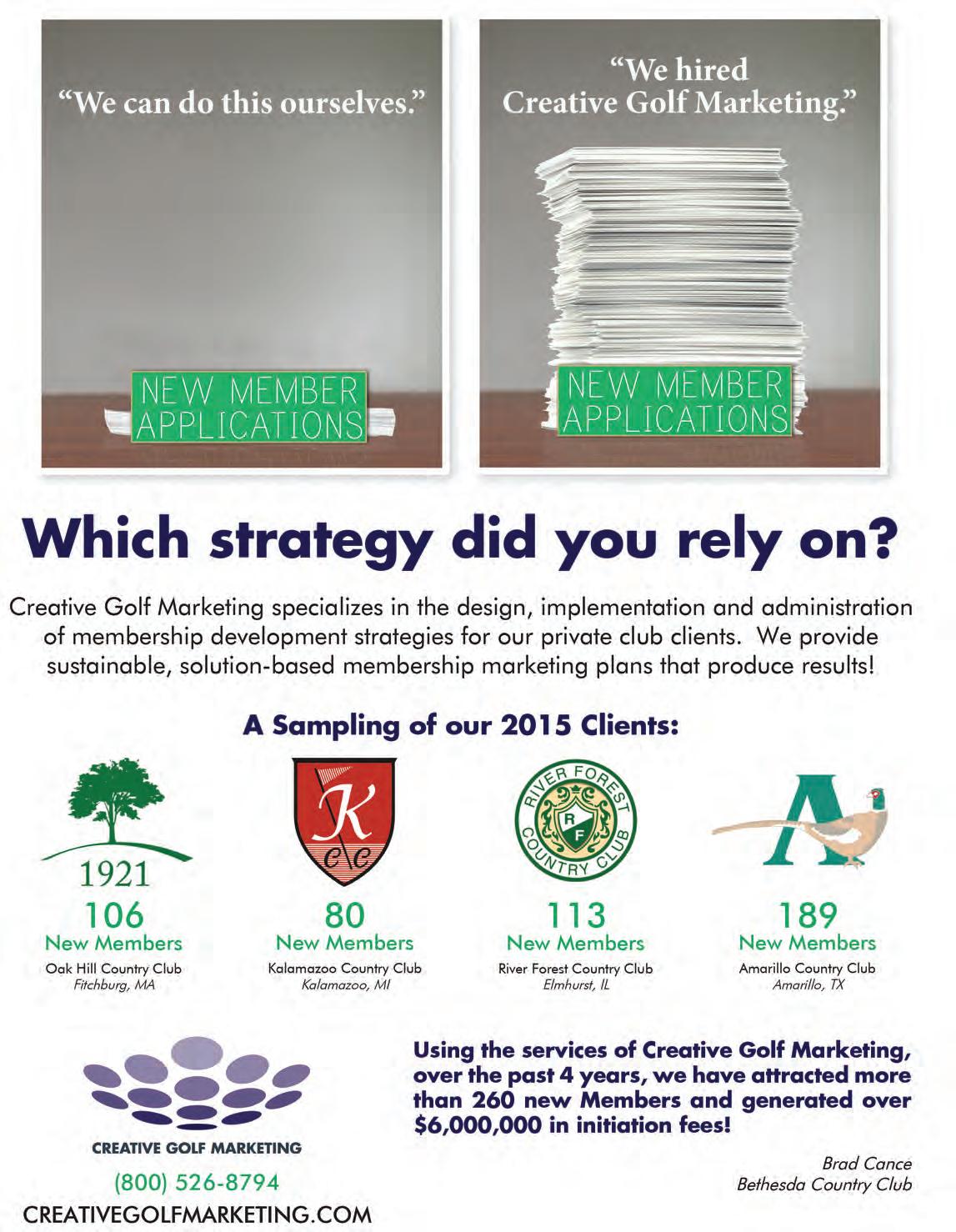
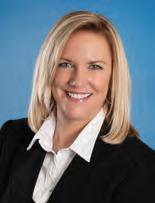
in a competitive marketplace, private clubs that do not have a unique value proposition find themselves trying to compete on price, resulting in cost cutting measures.
This practice affects product and service quality and the club’s brand perception, unless the club’s business model is designed to be price differentiated. Yes, value is important, but it doesn’t make up for the experiences at a club.
It’s the combination of goods, services, products, amenities, and the experiences that create a unique offering that cannot be easily duplicated. In short, the people, systems and procedures create the competitive edge. Creating memorable experiences in a private club requires commitment to a strong service culture of ‘members first’ and a management culture of accountability with a solid understanding of the nuances of private club service. Few can deliver outstanding experiences consistently. Since food and beverage is the social hub of the club, members often comment on experiences in this department.
Leadership sometimes wrongly focuses on singular items such as food quality, menu items, and lack of training, staff turnover, pricing, or lack of participation. The truth is, these all feed into the bigger issue – members want to feel good when they come to the club and it is a combination of systems, procedure, training and quality management that deliver this feeling.
The ‘feel good’ feeling is the single biggest desire expressed from members in our focus groups and on membership surveys. Perhaps you have heard this feedback at your club:
“I want to have a reason to eat at the club. I want ‘chef quality’ food, not standard fare, at a fair price. I want to feel comfortable; that doesn’t mean the newest furniture or trendiest décor. I want to go where people know my name, I’m treated nicely, and I feel welcome. I want to go where I don’t have to make a reservation or change my clothes before I can be seated. I want the club staff to understand my needs and treat me like I matter. I want to be proud to bring my guests.”
Since private clubs serve a finite customer base, it’s imperative to create experiences members will
want to replicate over and over again to keep participation levels high, which leads to membership retention. If you want to improve your food and beverage operation in any way, achieving these consistent experiences that members look forward to is critical. Here are a few items that are crucial for a club food and beverage operation:
• Experienced management –saving salary money using an inexperienced person ends in lost trust by the members, lost revenue and increased costs. An experienced manager knows how to manage food and labor cost, which are the most controllable costs in food and beverage.
• A point of sale (POS) system set up for speed of service and accurate statistics collection. POS systems provide valuable data for decision-making and historical information.
• Menu item recipes with costs, kitchen portion control and menu training for the servers.
• On-going wine and beverage training.
• An effective member profile system that’s used daily.
• Training checklists and resources with time dedicated to training every day.
• Adequate tools and resources to work efficiently: china/glass/silver, equipment, linens, menus, etc.
• A creative and well-trained chef either by experience or formal education.
• A strong ‘presence’ on the floor at all times. An engaging, dynamic personality, who can make members feel welcome, comfortable, understood and important, will make a tremendous difference. The manager should be capable of teaching the staff how to do the same.
If you have these items ingrained in your operation, delivering outstanding experiences will follow, assuming you have a clear mission/vision, values and goals. br
Whitney Reid, president of Reid Consulting Services, Inc. (RCS) is a celebrated management consultant, educator and speaker. RCS specializes in operations consulting, strategic planning, clubhouse design review, food and beverage management, executive recruiting, and training programs. For more information, phone (623) 322-0773 or visit the RCS website at www.consultingrcs.com.
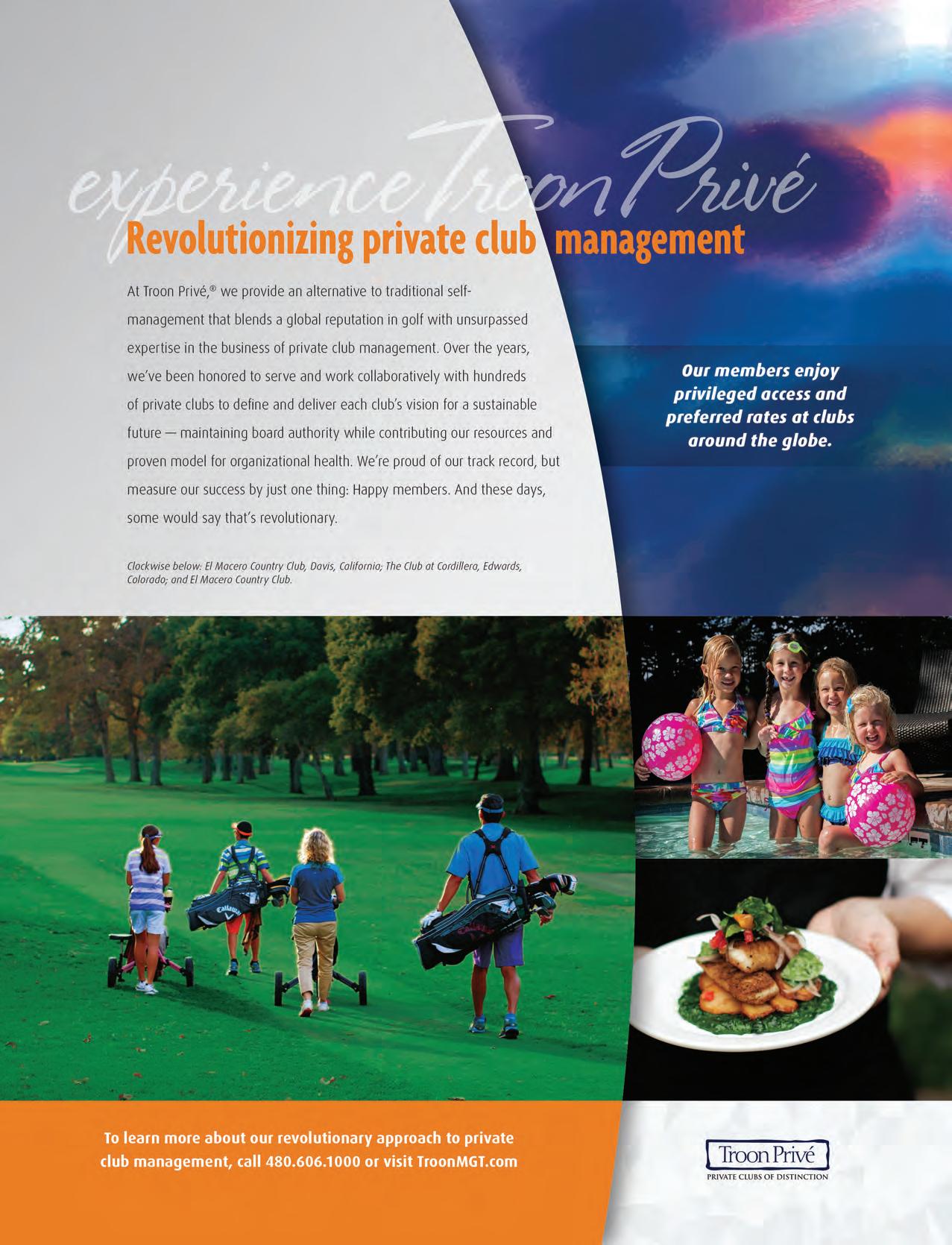
going beYonD the circle oF truth

Several years ago, some of my colleagues developed “the circle of truth” to explain why a club’s food and beverage operation is not a restaurant.
The concept provides eight operational realities that distinguish club dining from commercial restaurant establishments. Here are those operational realities:
• Private clubs are not open to the general public so the potential customer base is limited to its membership. Some of those members may not regularly patronize the club.
• Private clubs attempt to be “all things” to all members all the time. This may involve multiple and possibly competing outlets, which require more staff and supervision, more perishable food inventory and more menu offerings than the size of the membership base justifies.

food and beverage operation are the centerpiece of a club’s sports and social activities. national surveys continue to show that club dining operations represent one of the club’s most popular member amenities. This should not be terribly surprising given the simple fact that more people eat than swing a golf club or tennis racquet.
• Private club members’ expectations for food quality and quantity are very high. The result is the use of higher quality product and possibly larger portion sizes, particularly in the beverage operation.
• Private club policies are possible revenue barriers – casual versus formal dining, dress code limitations, smart phone and tablet restrictions, family friendly dining limitations.
• Private club menu pricing doesn’t always keep pace with product price increases.
• Private club dining requires more specialized positions both in the kitchen and on the service side of the operation. Most private clubs don’t permit cash tipping, which is preferred by professional servers.
• Private clubs are generally a “one seating” operation while commercial dining operations rely on “turning their tables” several times in a typical shift.
• Private clubs don’t have the “optimum” mix of food and beverage sales to contribute to the higher gross profit of commercial dining establishments.
In spite of continuing dialogue between club management, well-informed boards and their memberships, speculation about mismanagement of club dining operations continues unabated. For this reason, it is worth the effort to go “beyond the circle of truth” to discuss the important membership benefits a private club’s dining operation provides and create some additional dialogue between club management, boards and membership.
Food and beverage operation are the centerpiece of a club’s sports and social activities. National surveys continue to show that club dining operations represent one of the club’s most popular member amenities. This should not be terribly surprising given the simple fact that more people eat than swing a golf club or tennis racquet.
Well-managed private clubs position the food and beverage operation at the center of their sports and social activities. Whether it is golf, tennis or other organized member events, the food and beverage department is usually part of the event.
Such events are a critical part of any club membership experience, representing a significant percentage of the club’s total food and beverage revenue. At the same time, it’s typically more heavily subsidized than other elements of the club dining operation.
annual planning anD buDgetS
Club food sales generally consist of, at least three distinct components – club events, ‘a la carte dining and banquet events, each with its own pricing philosophy. Clubs that operate with sound business principles have formal documented pricing philosophies and an annual business plan for the food and beverage department.
The annual business plan is aligned with the club’s strategic goals and mission statement. The food and beverage department will have its own mission statement and goals as well as its pricing philosophy for each “line of business.”
Its mission statement might read something like this: “To provide a superior dining experience to club members and their guests; exceeding their expectations at a price that will encourage their patronage.”
Food and beverage departmental goals should address possible threats from local commercial establishments. The goals should include plans for a creative culinary alternative, which attracts members to their club for a much superior product/service than that offered by the local dining alternatives.
Keeping the membership engaged is probably one of the most important objectives in the club food and beverage operation. Clubs with multiple dining venues will offer a specific cuisine in each venue, each “branded” differently to offer as many different options as there are venues.
Smaller operations still have the option to offer the same variety through steak night, family night and perhaps a selection of ethnic themed menu offerings. Sales budgets should reflect the pricing philosophy consistent with the club’s food and beverage mission statement.
Since clubs generally have a good history of meals served by day and shift, budgets should use that information in developing sales goals. Meals served are also referred to as cover counts.
Procedures for accumulating cover counts should be reviewed periodically to determine that they are accurate and that the cut off between shifts is proper. There should be three separate food sales budgets for each dining venue, namely, club events, ‘a la carte and banquet events. Likewise, there should be individual budgets for cost of sales for each venue and sales category.
Club labor budgets should be similarly constructed by shift and venue. A “staffing guide” should be developed for both the front of the house and back of the house positions. Clubs that historically have had a significant level of detail will find it easier to update this information. Of course, any changes in days or hours of operation should be factored into each new annual budget.
Other departmental expenses should be modeled after the “Uniform System of Financial Reporting for Clubs.” In our experience, some clubs will include expenses here
that are not direct departmental operating expenses related to food and beverage. Some of these expenses should be more appropriately charged to the clubhouse department. Whereever they get charged, they are still operating expenses and their budgets should begin from zero each year.
Budgeting for club events: The best practice for budgeting club events is to have individual budgets for each planned club event. All revenues, costs and expenses should be included for each event. The level of detail is important to determine pricing for each event and for comparison with the actual results when the event occurs. It’s worth mentioning that the “Uniform System” referred to earlier provides a separate department for social events.
The annual business plan is aligned with the club’s strategic goals and mission statement. The food and beverage department will have its own mission statement and goals... Its mission statement might read something like this: “To provide a superior dining experience to club members and their guests; exceeding their expectations at a price that will encourage their patronage.”

At this point you might ask, “what’s the big deal about having a well detailed budget” for a club’s food and beverage department. Well, it’s no different than any other club department, except that it does seem to have more “moving parts” and require more analysis to prepare a good budget.
When the budget is complete, it will more than likely reflect a “deficiency of revenues over expenses” or “departmental loss.” The reasons are explained in the “Circle of Truth” but the projected operating results are supported by the well-crafted budget.
The amount of subsidy is a matter of the club’s philosophy and not mismanagement since for most private clubs the food and beverage operation is an amenity supported by dues and not a profit center. The last piece of the puzzle is how to communicate this fact to the membership. That’s the hard part. br
Bob Salmore, senior director, are members of McGladrey, LLP, a national professional services firm with a focused industry practice that provides accounting, tax and consulting services to hundreds of private clubs throughout the country. He can be reached at (800) 966-0428 or via email: bob.salmore@mcgladrey.com
by DavE WhITE, EDITor
the pga’s vision and mission hasn’t really changed in recent years since pete bevacqua took over as the chief executive officer several years ago.
but the 28,000 member professional Golfers’ association certainly has refined how it wants to do business.
In past, critics have suggested the pGa’s direction has changed every couple of years to meet the changing requirements of different boards and presidents, that’s there’s been a disconnect between the pGa headquarters and its troops on the ground, who perpetually send in their annual dues.
“We’re really here as an organization for two primary reasons…to serve 28,000 members and grow the game.
Every decision we make and action we undertake is tied into those fundamental principles. So, as part of our long term strategic plan, the eight core areas of focus are employment, education, properties, player development, pGa rEaCh, sections, championships and global. overall our mandate is to serve the members and grow the game.
and the feeling has persisted since bevacqua’s appointment that, whether rightly or wrongly, he’s taken control as the organization’s power broker. although the pGa can be viewed as a changing organization, bevacqua isn’t necessarily onside with that power broker assessment.
“I’m not sure I agree with this,“ bevacqua related in a recent interview. “I never let a day go by that I
don’t report to the board and our officers. It’s absolutely critical…we’re a membership-based organization and the elected officers are the leaders as voted in by our members. I report to them.” undoubtedly what it has spawned is a more collaborative approach to the pGa’s governance.
“This has allowed us to become more effective and efficient, with a productive working relationship between staff, officers and board along with development of a long term strategic plan.
“I very much see the president as the head of the organization and me really as the lead staff person charged with implementing the operational direction that’s been set forth.
“We know our marching orders,” he exclaimed. one of bevacqua’s first moves as CEo was to seek change that comes through a long-range strategic plan. The organization looked for certain changes during bevacqua’s first couple of years at the helm, followed by more substantial goals and objectives established through a three to five year strategic plan that followed.
The pGa vision for the future is, ‘Simply that the pGa professional is at the heart of golf.’
“We’re really here as an organization for two primary reasons…to serve 28,000 members and grow the game. Every decision we make and action we undertake is tied into those fundamental principles.
“So, as part of our long term strategic plan, the eight core areas of focus are employment, education, properties, player development, pGa rEaCh, sections, championships and global. overall our mandate is to serve the members and grow the game.
“The pGa pro is the tangible connection between the game and the people who play the game. It’s a pGa pro who connects you,” bevacqua explained.

So has the pGa addressed concerns to make the organization more relevant for club professionals, including pros at private clubs?
“absolutely,” bevacqua insisted. “We want to make sure members know we are here for them. our key priorities are a focus on education and on employment and we want to make sure there’s a dialogue between our pGa headquarters and our membership.
“for example, as part of the pGa’s theme of ‘Driving the Game forward,’ Get Golf ready offers five lessons for $99, and roughly 100,000 golfers participated last year, over 60 percent of whom were women.”
The pGa junior league Golf is the “little league” approach to the game.
“It’s co-ed youth based, scramble format, golf shirt with numbers, team-based approach and has seen incredible growth,” bevacqua added.

“our discourse with members has increased, and our board and members are passionate about this approach.”
What does bevacqua see as the role of a club professional, particularly those at private equity clubs?
“The role of pGa pro is to teach and play the game and certainly to have an expertise of the business of the game,” bevacqua commented. “people are called upon to do different things at different clubs…and show value to their employers.
“a pGa facility with one or more professionals is the best approach and certainly focuses on introducing the game to as many people as possible. It also brings in diversity,” a factor stressed not only by the pGa, but many private clubs throughout the country.
“We’ve taken a disciplined approach,” the pGa CEo suggested. “Many are doing great things, but as a national organization, instead of creating a new approach each year, we are following through with programs that are very successful.

Then there’s also the Drive, Chip and putt Championship…a free nationwide youth golf development initiative open to boys and girls ages 7-15, competing in separate divisions in four age categories.
local level qualifiers advance through sub-regional and regional qualifiers and the top 80 performers –40 boys and 40 girls – will earn an invitation to the national finals at augusta national on Sunday, april 3, the eve of the 2016 Masters.
“you see a lot of resources and time being put into promoting these programs. We want to bring more women, diversity and kids and lapsed golfers into golf. We want to make the funnel as big as possible so people have an entry point into participation,” bevacqua explained.
america’s private clubs also are a prime source of employment for many pGa pros, so how can these professionals be held accountable for enhancing a private club member experience?
“There’s no simple answer,” bevacqua offered. “one key attribute of the professional is understanding the club dynamic. Each is different with different cultures. but in general, the objective should be making it an enjoyable experience for as many members of the family as possible.
“how do you bring the family into the game and make it easier to get all involved…really making it accessible and enjoyable?” he mused. That’s certainly a primary question for many private clubs that are seeking their niche today, including many that are basing their growth and future on family-centric notions.
zines like boardroom that can only result in being more prepared,” he suggested. “Why not use that kind of reading that’s at your disposal and continue to educate yourself? It’s critical.”
bevacqua agreed with the notion the role of the pGa professional seems to be evolving more into the administration of clubs.
“That’s a correct assumption,” he offered. “our professionals come in for different reasons and continue into different areas. They’re teachers, players, executives, and we want to make sure people who take the executive route have necessary tools.
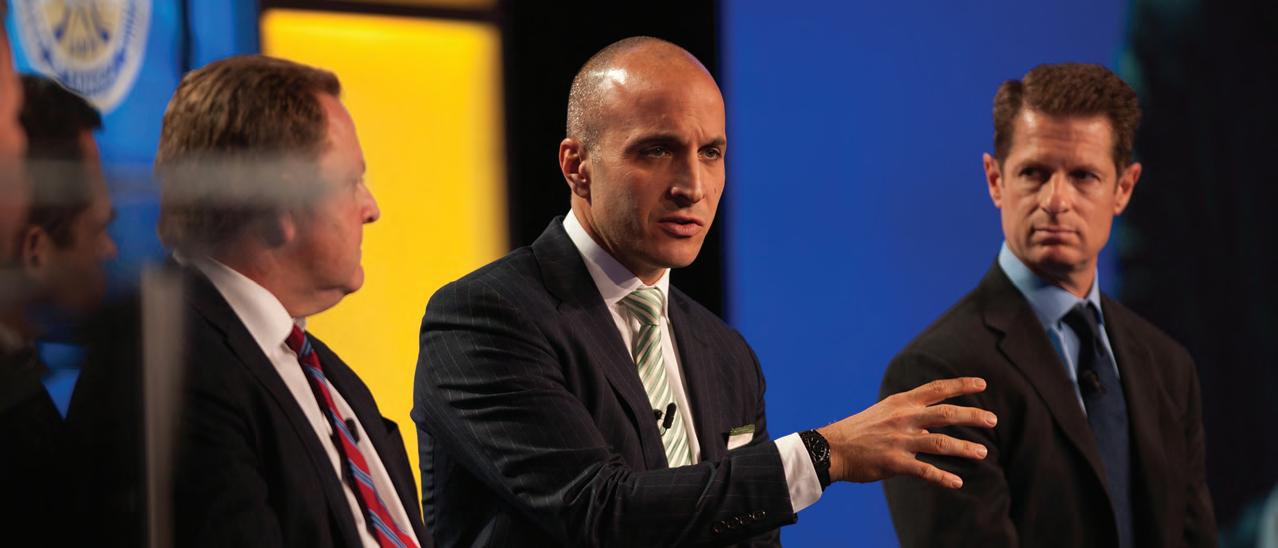
“Golf is fun, but we face time issues. There is more demand on a club member’s time and one of the things we suggest to our professionals is to try different experiences. It doesn’t necessarily have to be playing nine holes, but it can be a 30 or 60-minute experience. for example, take a lesson, play 2-3 holes after work or hit the driving range.
“It’s about creating flexibility and ingenuity to adapt to modern lifestyle allowing golf to fit into american lifestyle,” bevacqua suggested.
“for us, there are different answers for different situations. yes, our strategic plan places an emphasis on teaching, playing and the business of the game. but there’s no replacing the personal connections that the pro makes with members. That’s the best way to situate yourself within the club environment…know your customer base. people are busy and that can be more challenging at some clubs, but our professionals need to connect themselves to their membership.”
boardroom magazine during its 20 years of publication has become ‘required’ reading for many private club board members…the magazine’s target market. So should boardroom be ‘required’ reading for private club pros?
“regardless of the profession, if you can gain knowledge of trends and best practices either at staff or board level from reading maga-
“our ultimate desire is that a pGa professional has ability and the experience needed to really take the road they choose. We don’t direct them. but there is a focus on continuing education, a focus on business, a new found focus on the technology of the game, resources, and business acumen to enhance a pro’s maturation, into their chosen area.”
bevacqua also doesn’t view what the pGa is offering as being in conflict with what the Club Managers association of america offers –extensive business management programs leading to club manager certification.
“It’s not in conflict,” he said. “both education platforms are tremendously valuable. I’ve gotten to know jeff Morgan (who took over last year as CMaa’s CEo), and he’ll bring passion and energy to the industry and I’m looking forward to working with him.”
now as chair of the World Golf foundation, bevacqua feels this will enhance the opportunities for special initiatives
“a key proponent of long term strategic planning is a global development strategy. for our organization to be relevant and to increase our relevance we need a well thought out global footprint. That thought process is now underway,” he concluded. br







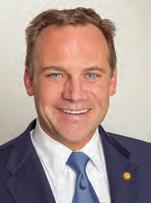

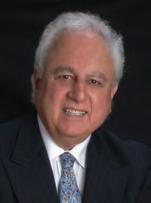



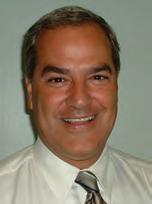
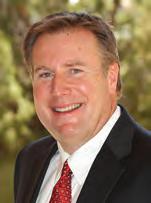



These top executives have taken their clubs to a higher level by implementing a better approach for managing club food and beverage departments. Building on a foundation of best practices, checks and balances, and integrated business flows, they incorporated leading-edge food and beverage automation and reduced labor by tying all their systems together.
The controls, disciplines and reports produced by this approach make it possible to run food and beverage departments at peak efficiency, substantially reducing clerical labor and food costs. Innovation. A better way to do business Just what you would expect from leaders at this level.


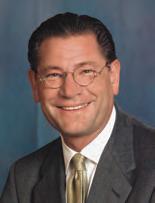
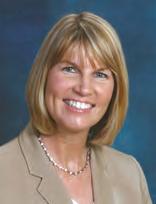
“one should learn to sail in all winds.” - italian proverb
A couple of years ago a candidate named Kyle Draper, an AGM at the time, submitted his resume for a general manager search. The club was interested in candidates who had strategic planning experience.
While Kyle didn’t have experience leading a strategic planning effort at his club, he impressed the search committee by submitting a personal strategic plan he had created and used to map his own goals.
Kyle not only had experience leading his own strategic plan, which incorporated both personal and professional goals, he showed the search committee that he was proactive and got things done.
Since then we have made it part of our mission to share the power of the personal strategic plan with club managers and hospitality students around the country. Walking through the strategic planning process provides invaluable information and self-enlightenment. It also helps you identify goals with the most impact and provides a means of reaching those goals.
“be in readiness for favorable winds.” – chinese proverb
The steps to a personal strategic plan are the same steps that a club takes to develop a strategic plan and they include the following:
• Identify your core values
• Write a mission statement
• Conduct a SWOT analysis
• Write a strategic action plan
Identify your core values: The first step in creating a personal strategic plan is identifying and listing your core values – words that identify who you are and what you want to be known for. Examples include integrity, service, faith, responsibility, humor, courage, innovation and humility. Make a list of words that describe you and what you strive for.
Write a mission statement: A personal mission statement describes your personal and professional purpose in life. Review your core values to help identify your mission. Write it in the first person, present tense.
A hospitality student recently shared her mission statement with us: “I implement my organizational, time management, creativity and communication skills in the hospitality industry to ensure high quality and exceptional customer service.” She included the mission statement on her resume replacing the objective.
Lisa Carroll’s personal mission statement is: “I use my interpersonal skills, facilitation experience, hospitality industry relationships and technical expertise to promote quality of business and quality of life.” She also includes it in the summary of her LinkedIn profile.
Perform a SWOT analysis: After identifying your core values and writing your mission statement you are ready to identify your own strengths, weaknesses, opportunities and threats in a SWOT analysis. Identify your strengths to leverage and grow. You set yourself apart from the rest of the pack by strengthening your strengths.
Strengths and weaknesses are typically internal to you, while opportunities and threats are external and oftentimes forces that you may not have as much, if any control over. See the Figure 1: Sample SWOT Analysis below.
Identifying your strengths and weaknesses is excellent preparation for a job interview. Interviewers often ask candidates to share their strengths and weaknesses. If you’ve identified them and planned on how you will grow your strengths and manage your weakness, it will be easy to share that information during the interview.
Once you have conducted the SWOT analysis, circle the items in the matrix that are the most important things to focus on in your strategic plan. What items will have the most impact if you capitalize on them? Focus on those key items to build your strategic plan.
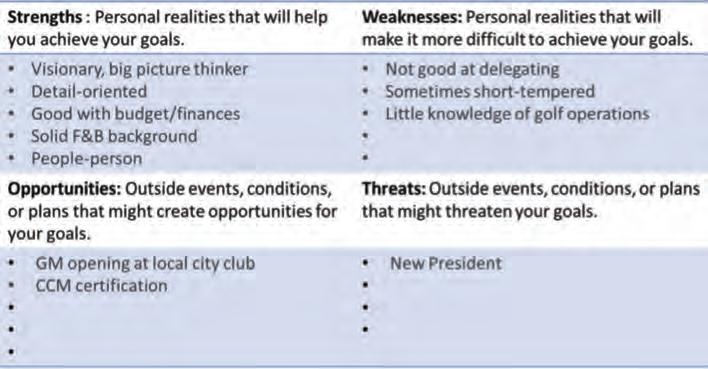
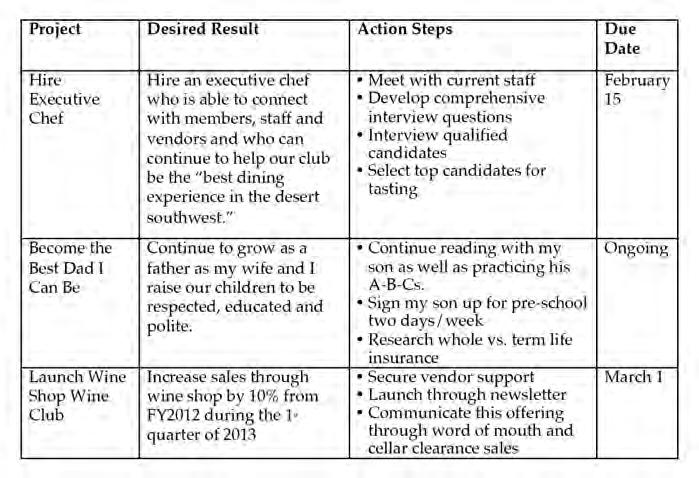
Create a personal strategic action plan: The strategic action plan is a four column table that has a column each for: 1) Goals or projects 2) Objectives or desired results 3) Action items/steps, and 4) Time frame or due date.
A goal might be to earn your CCM designation. An objective for that goal could include passing the CCM exam. The action items would include studying, taking the certification review course and then taking the exam. The time frame would be the dates that you outline for studying, the date of the next certification review course and the date of the next exam.
How powerful do you think it would be to share your strategic action plan
with a potential employer during an interview? What would you think if someone handed you their personal strategic plan during an interview with you for a position at your club? The personal strategic plan is not only a planning tool, it is a communication tool. Use it to communicate with your team, your family, your interviewer, and your board.
Once you have accomplished a goal or project, don’t just delete it from your action plan; copy it to a new document of accomplishments. You can use that new document as a basis for building your resume and listing your accomplishments as well as sharing it in an interview.
“he who believes in dreams pastures the winds.” – bulgarian proverb
Here’s an excerpt from Kyle Draper’s personal strategic plan submitted to the search committee as part of his professional portfolio two years ago. It includes professional and personal projects and goals.
Kyle is now a general manager and continues to review his strategic plan every week and updates it every 90 days. If you think you don’t have the time to do this, think again. If you take the time to invest in this process* you will realize the value and benefits. If you write it down and track it you’ll be amazed at how focused you become on your career and the things that you need to do or be in order to achieve your personal and professional goals. You may also find that your goals are achieved more quickly than you originally planned.
Consider the words of Kopplin & Kuebler principal Dick Kopplin: “Way too many people spend more time planning their vacations than they do planning their careers!” Set your sail with a strategic plan and leverage the winds for your future! br
* If you would like our personal strategic planning template in Microsoft Word format, email Lisa Carroll lisa@kopplinandkuebler.com)
Lisa Carroll is a search executive with Kopplin & Kuebler, LLC, an executive recruiting firm providing services to the private club industry. She focuses on executive chef, AGM, and clubhouse manager searches. The company has offices in Scottsdale, Jupiter, Denver, Cleveland and Atlanta. She can be contacted at (561) 596-1123 and at lisa@kopplinandkuebler.com.
Kurt D. Kuebler, CCM is a partner with Kopplin & Kuebler, specializing in the national placement of general managers/chief operating officers, directors of golf and golf course superintendents. Kurt’s office is in Jupiter, Florida. He may be reached at (407) 864-6798 or 480443-9102, or through the website at www.kopplinandkuebler.com and by email at kurt@kopplinandkuebler.com.

bryan D. WEbb
For country clubs the age of renovation is here!
Aging member facilities requiring endless maintenance, demands for a wider range of amenities, and the challenges of attracting new members are driving today’s country clubs to transform or fade away.
But every property has unique conditions and membership needs that must be considered before determining the best way to renovate. Transforming your clubhouse should start by exploring a remodel versus replacing with new construction. As you might expect, each approach comes with its own pros and cons.
Starting a renovation without vetting its typical obstacles can ultimately stress your budget, even outpacing the costs of new construction. The most important first step is engaging a truly experienced professional to help guide the process.
An architect with a background in master planning and remodels specifically for clubs brings a recognition of the unique operational hurdles you’ll face.

Financial impacts are foremost in deciding when and how to upgrade, but sequencing of construction and the need for temporary facilities can often be just as impactful. The inconvenience, temporary loss of amenities, and duration of disruptions caused by construction are among club members’ top fears when their club plans to renovate.
Preparing a comprehensive master plan that explores phasing options, while considering the likely impacts of renovation or new construction can provide the insight needed to reduce or eliminate these concerns.
For most clubs remodeling should be the first approach. The cost of a renovation typically skews 20-25 percent less than for new construction, but it can also bring greater budgetary risk.
Contingencies must cover the unexpected conditions present in existing buildings, and modifications needed to comply with stricter building codes can add costs with limited functional benefit.
Remodels can also be hindered by site constraints, deteriorating infrastructure and poorly configured amenities that can’t be overcome without wholesale replacement. In many aging facilities these harsh realities may dictate the decision to build new.
New construction is generally viewed as the more expensive approach when upgrading, but that depends on the conditions each project brings. Constructing a new building that stands separate from the existing “footprint” is an ideal scenario, allowing services to continue unhindered during construction.
Many established clubs must instead use the space their clubhouse already occupies. But demolishing your existing clubhouse entirely to make way for the new building can leave services lacking, forcing a club to consider buying or leasing temporary replacement facilities for even the most basic services.
Finally, a seasoned clubhouse architect can help you explore renovating or replacing an existing clubhouse in stages, allowing select services to remain in operation while others are being upgraded.
As construction progresses, newly built spaces can be ‘phased in’, and it allows members uninterrupted, albeit somewhat reduced, access to the amenities they expect.
This approach can lessen operational impacts during a remodel, but the ‘stepping-stone’ process can extend the construction time period, prolonging the inconvenience and increasing costs.
Whether you ultimately decide to remodel or replace an outdated clubhouse, there will always be some level of disruption. Engaging professionals who investigate and understand your club’s needs and priorities, and who can help
See brYan Webb | 89
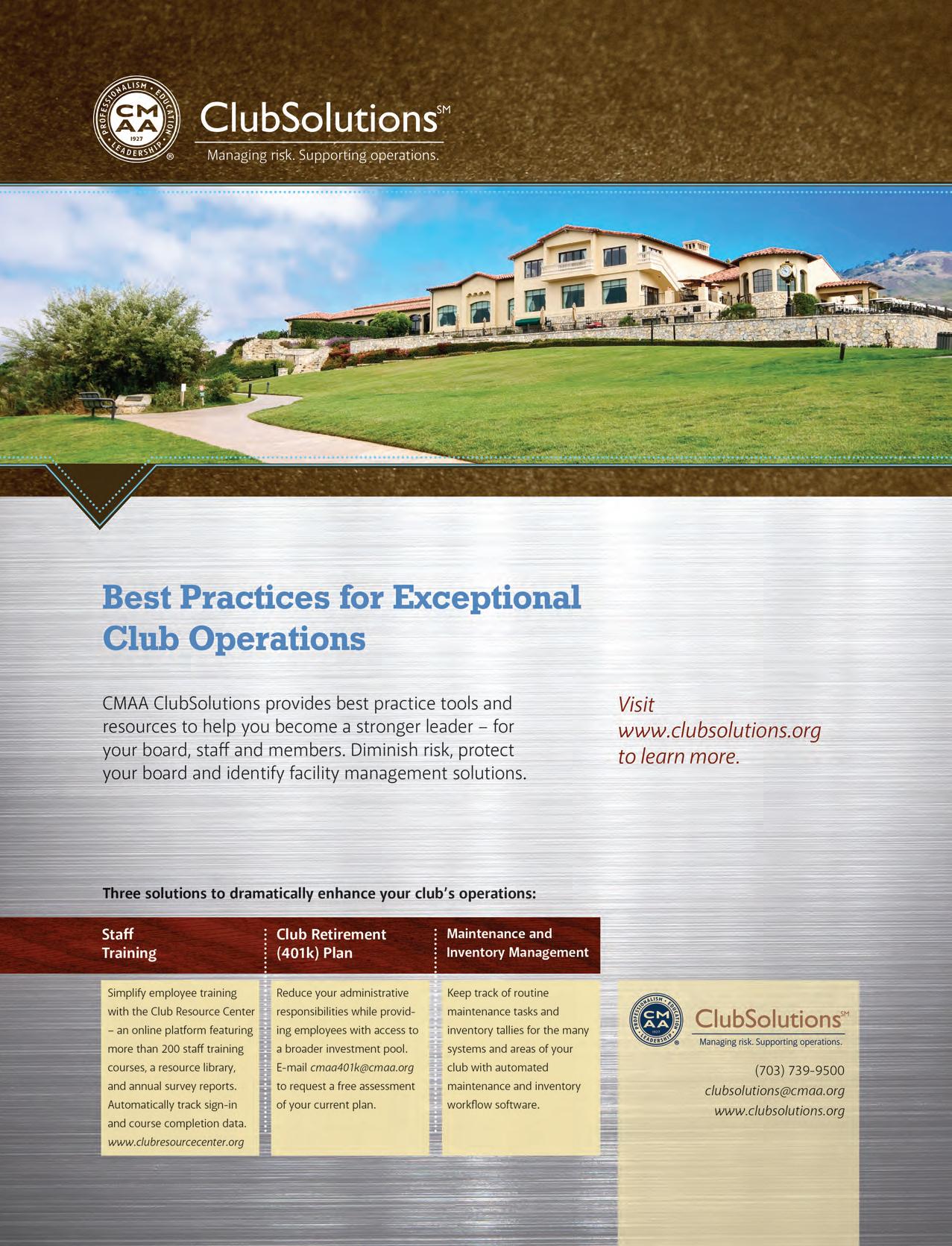

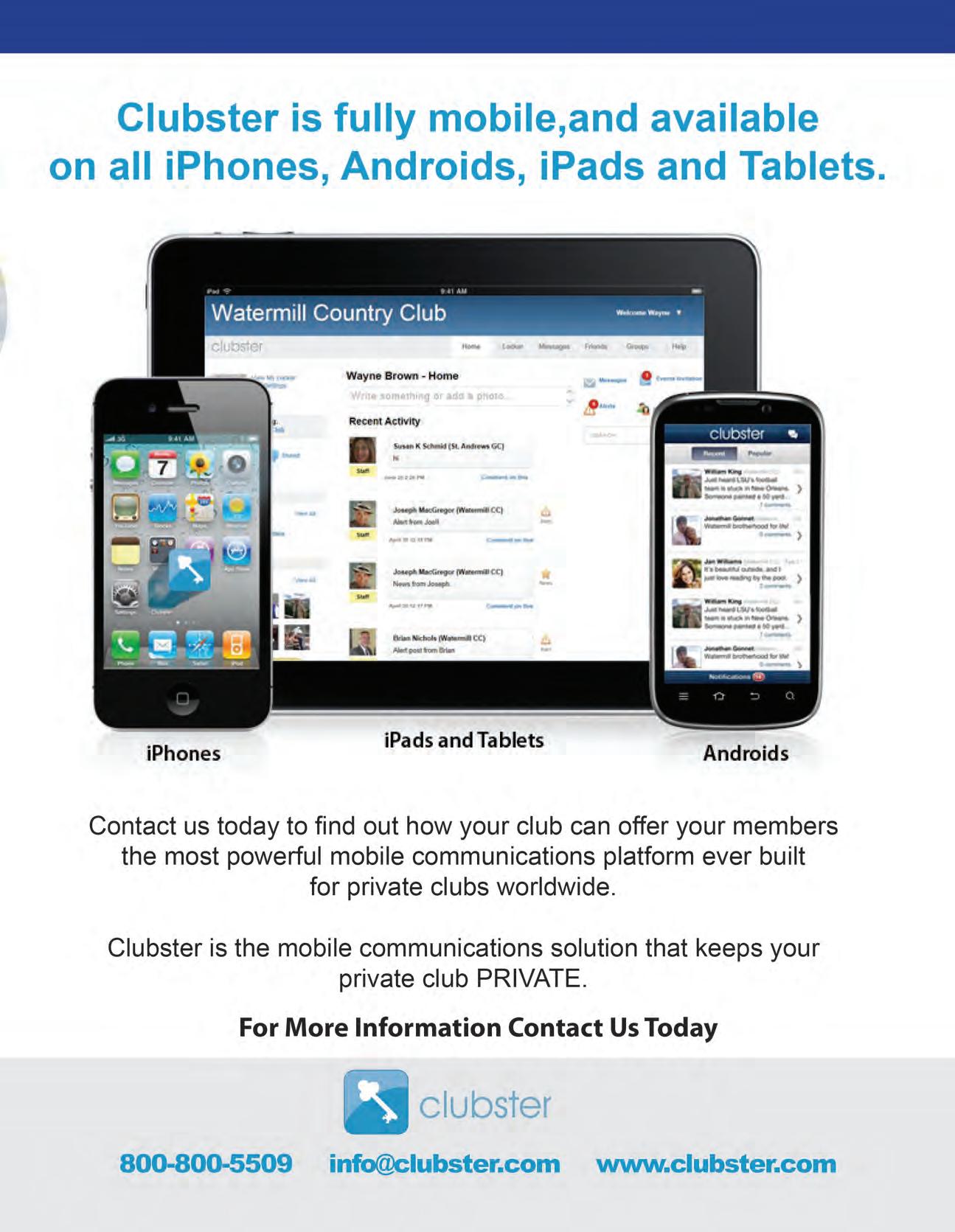

BY JAN BELJAN
The Old Collier Golf Club opened in 2001 and has turned out to be a golf course of world-class “firsts.”
On 267 acres in Naples, Florida, zoned for an 800-unit residential development, the Barron Collier family chose to create a premium membership, stand-alone, private club dedicated to the game of golf, with long-term environmental quality.
By making the site look as natural as possible, the project – a par 72, 7,069-yard, 18-hole golf facility with practice range, putting green and short game area – was designed to have an “Old Florida” feel.
Major roads surround the site to the east, south and west, three-quarters of a mile from the Gulf of Mexico. The Cocohatchee River, designated an Outstanding Florida Water (OFW) by the Florida Department of Environmental Protection (DEP), is the northern boundary, a designation that affords such a water body special protection.

Permit conditions required more than 50 acres of mangrove and wetland habitat bordering the river to be set aside as a wildlife preserve. The Florida Game and Fresh Water Fish Commission imposed the requirement of preserving existing habitat for the gopher tortoise, a state-listed threatened species present on the site. Permit conditions also required preserving 45.6 acres of upland scrub.
Finding a water source for golf course irrigation was the major design issue that had to be resolved. No surface or underground water was available on site and there was no practical source of treated effluent, the water used in Southwest Florida for public rights-of-way and golf courses.
The South Florida Water Management District (SFWMD), responsible for permitting water-related issues, including
consumption, stated that the golf course could not increase nor impede storm water run-off from that neighborhood into the area after completion of construction.
To meet permit demands, a system that retained water draining into, as well as falling on, the site, based on a 25year storm event, had to be designed. This affected the size and number of lakes, as well as the amount of fill required for the golf course. Engineering solutions solved the water quality and hydrological concerns of the permitting agencies.
Protective berms were designed and constructed to divert potential surface runoff away from the mangrove buffer and the Cocohatchee River. Eleven water management lakes were built to retain rainfall on the golf course and the drainage from Naples Park.
Lake design allowed for the use of natural filtration to maintain pollutant discharge at or below permitted levels. Monitoring of water quality and quantity was required as part of the permit requirements and by Audubon International.
Using Seashore Paspalum for the course, a turf that could be irrigated with brackish water readily available from the Cocohatchee River, eliminated the need to pay for irrigation water and for a water use permit.
The impact of salt water on water quality and hydrologic permits was handled by limiting the turf irrigation to 77 acres. The areas taken out of turf were established as native habitat with indigenous salt-tolerant species, and became part of the 64 additional acres of existing and created native habitat.
These creative solutions led to The Old Collier Golf Club being the first golf course in the world to irrigate with brackish water, and the first to landscape with indigenous plants that are halophytes.
It also was the first golf club in the world to be designated Audubon Gold Signature Sanctuary, a project that took the vision, careful planning, management and commitment by Collier Enterprises to create and maintain an economically and environmentally sustainable world-class golf course. BR
Jan Beljan, ASGCA and Fazio Golf Course Designers, Inc. designed the par 72, 7,069-yard, 18-hole golf facility.
More information on the Golf Course Development Process can be found at http://asgca.org/images/stories/publications/qadevelopment-process.pdf.
“Our team represents over 150 years combined experience in Platinum© recognized clubs, including country, golf, yacht and city clubs, and has worked with over 600 clubs across the country and around the world.”
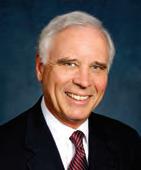

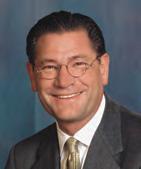

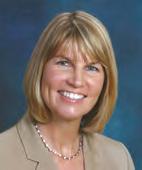

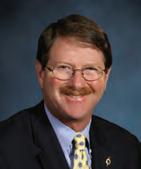

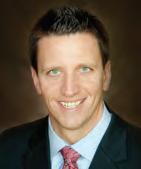

BULLETPROOF YOUR CLUB IN THIS ECONOMY WITH THESE SUCCESSFUL PROGRAMS
Strategic Board Retreat and Planning


This retreat focuses the board on the top five strategic objectives to enhance their club right now.
Team Development
This workshop identifies specific strategies that assist department managers in facing the variety of challenges in the club business.
Board Dynamics/Model Clubs
This workshop addesses critical issues facing general manager/COOs and their boards in today’s club environment.
2014 SEARCH FIRMOFTHE YEAR Eight years in a row
2014 GARY PLAYER EDUCATOROFTHE YEAR Kopplin & Kuebler
2014 MID-MANAGEMENT SEARCH FIRMOFTHE YEAR Kopplin & Kuebler
2011 LIFETIME ACHIEVEMENT Dick Kopplin
2011 GARY PLAYER EDUCATOR Kurt Kuebler
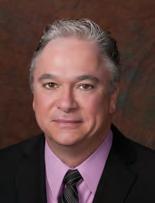
When faced with the dilemma of how best to reward and encourage top food and beverage spenders at a high-end, developer-owned private club, the challenge seemed daunting.
Although risky, modeling a program after one that had already been proven successful in the daily fee world resulted in not only higher spending levels but also greater member satisfaction.
Implemented late in 2013, the program was developed to reward top food and beverage spenders who earn points based on a one-toone ratio of dollar to point. To qualify, members must purchase via their club account.
For every 750 points earned, the member receives one free accompanied guest pass. Once a member accumulates 3,500 points they achieve “Gold Status” and receive a five percent discount on eligible purchases for the remainder of the year and also the following 12 months.
The results speak louder than words. Negativity dissipated
as rewards
hit
the members’ accounts. Now it’s not uncommon for the staff to witness friendly competition among members at different status levels. In 2013, six members achieved “Gold Status,” but at the end of 2014 there were 67 on that list.
“Platinum Status” is reached when the member accumulates 7,500 points, which delivers a 10 percent discount. Both are in addition to the current applicable member discount program, and the reward shows up automatically when a purchase is made (the club has a short list of exemptions to the program such as dues, initiation fees, golf event entries, and spa services).
Before roll out, the club leveraged its vendors and addressed issues that would be critical to the program’s success. This included overall enhancements to the food and beverage offering, with
improvements ranging from providing gluten free and other specialty choices, to the utilization of local organic products and modifying hours of operation based on member feedback.
During the first 60-90 days, some important lessons were learned. The program particulars needed to be further clarified and simplified so that the members could more easily embrace it.
The Jonas point of sale system at the club does provide for a rewards-based program. But the system is not able to achieve complete seamless integration because the method in which the member accounts were entered into the database several years ago does not support the newly available module.
Until the club can dedicate the time to reentering this data, there will always be one additional manual step in the process. Members were initially skeptical, expressing doubt that the program would ever provide anything more than negligible benefits.
In the end, the results speak louder than words. Negativity dissipated as rewards hit the members’ accounts. Now it’s not uncommon for the staff to witness friendly competition among members at different status levels. In 2013, six members achieved “Gold Status,” but at the end of 2014 there were 67 on that list.
Although a points-based rewards system isn’t typically considered in a private club environment, this program has proven that it can provide added value to the member experience and increase overall member satisfaction.
Not only has the program encouraged enhancements to the overall food and beverage offering, but also the members feel appreciated in a whole new way. BR
John Bartilomo, CEC, CCE, is the vice president of food & beverage operations for Troon, the world’s largest third-party club management company. He can be reached at JBartilomo@TroonGolf.com or (480) 606-1000.
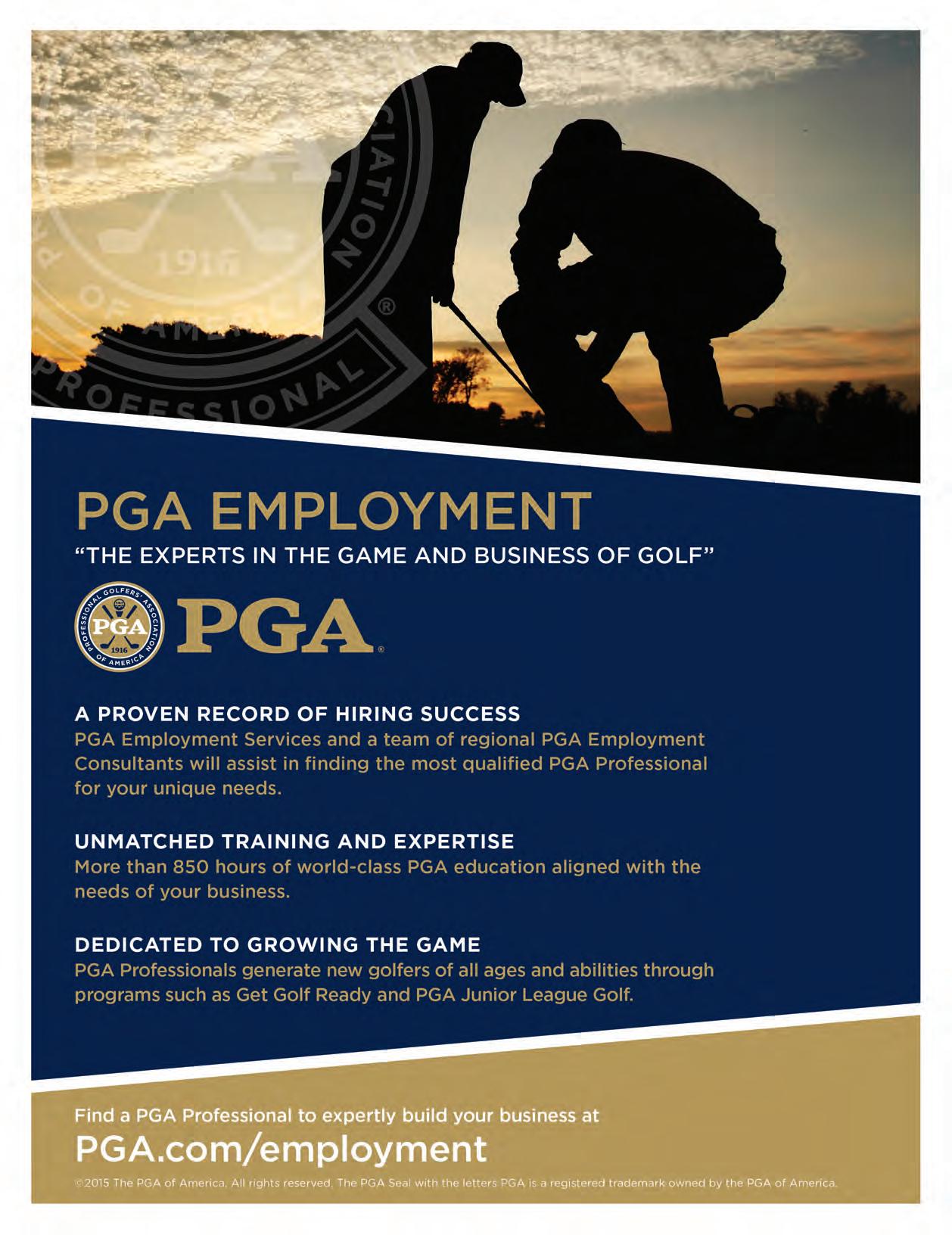

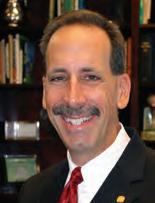
The regulatory landscape for defined contribution plans such as 401(k), 403(b) and 457 are constantly being reviewed and analyzed by the department of labor (dOl) as well as Congress in the form of new bills being introduced.
It is important to stay abreast of current and potential changes to rules and definitions as they make their way through the legislative process. This helps create awareness and alert plan sponsors to seek additional guidance from their plan advisors and/or other retirement plan service provider professionals with specific retirement plan investment expertise.
Definition of fiduciary/conflicted advice rule: In February of 2015, a new proposed rule relating to the fiduciary status when someone provides investment advice for a fee was submitted to the Office of Management and Budget for review. Public comments from the DOL and President Obama suggest that it will apply a “best interest” standard to investment help offered to plan sponsors and participants. Putting a “clients’ interest first” will be paramount to successful advisory service professionals.
Proposed rule changes addressing Lifetime Income Illustrations on benefit statements conveyed in monthly income figures in retirement will be forthcoming. Additional rule changes have been proposed regarding the 408(b)(2) plan sponsor fee disclosures and 404a-5 participant disclosures that will clarify delivery and content requirements, which were first enacted in 2012.
For those plans that allow brokerage windows, which for the sophisticated participant allows for investment selection outside of a core menu of investment options, additional regulatory pressure could also be on the horizon, however none are planned at this time.
Form 5500: The DOL is on schedule to publish a proposed rule in July of 2015, amending Form 5500. One of the goals will be to make the data on the form more searchable. Plan sponsors on occasion and depending on assets held in their plans, get periodic solicitation calls regarding their plan. Form 5500 information is public and available through several websites, which advisors scrutinize
for potential new clients. So called fiduciary advisory firms could call plan sponsors and pitch services to help mitigate the regulatory and compliance landscape. Member-managed clubs should not be surprised of the availability of their specific club information but should use caution and alert their plan advisor when calls of this nature are received.
In July of 2014, the Securities and Exchange Commission (SEC) issued final rules that will change how money market funds are regulated with an implementation date of October of 2016.
The Retirement Security Act of 2015: This pending legislation, introduced in the U.S. Senate and House in January of 2015, will provide an expansion of multiple employer plans and the creation of a new automatic enrollment/increase safe harbor.
PPA restatement process: Plan restatements are required from time to time to reflect current and legal regulatory guidance. Most plans that utilize a prototype or volume submitter plan will need to have their document restated by April 30, 2016. Custom or individually designed plans have different restatement cycles so plan sponsors who use an attorney or other service provider should check with deadline requirements that might be applicable to their custom document.
It should be clear that the bills and clarifying rules and restatement requirements are meant to educate plan sponsors, give participants additional tools for retirement saving success and to push the spotlight on retirement readiness. Plan sponsors should keep a working knowledge of current and potential legislative changes that will and could affect the administration of their club retirement benefit. For most Americans, their 401(k) savings balance will represent a significant portion of their retirement savings. A plan sponsor should take the necessary steps to ensure a best savings opportunity for plan participants to meet some of their retirement goals. BR
Dennis Pearlman is president of Case Pearlman Retirement Plan Advisors, LLC, and a CMAA Club Solutions Provider. Case Pearlman serves as the advisor to the CMAA ClubSolutions 401(k) Retirement Plan. Information and video education are available at www.clubsolutions.org He can be reached at (855) 482-8002 or via email: CMAA41k@casepearlman.com.



JILL PHILMON, CCM, CCE
GM/COO - BALLANTYNE COUNTRY CLUB
PCPS in my opinion is a must have if you are hiring a membership or marketing professional! We used them to place our current director and I was so impressed with the level of quality we were offered in candidates. We were equally impressed with how well they were able to match personalities to my current team, plus they even add in training to make sure they are fully prepared. We were extremely pleased with the outcome.
ROBERT E. SERGENT, CCM, CCE
As a private club general manager with 30-years experience Professional Club Placement Services receives my highest recommendation. The dedicated industry professionals at PCPS seek first to understand your individual needs. Truly a customized approach, which results in candidates presented which meet the requirements you have established. The process is well devised and executed to exceptionally high standards.
PCPS understands the pain, stress, time, and money associated with posting ads, sorting through resumes, interviewing candidates and making decisions to fill an opening among your team, which is why our placement experts are fully committed to making this transition as smooth and professional as possible for you and your club.
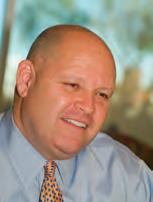
Strategic planning requires strategic thinking. Most boards of private clubs are served by conscientious and capable souls with tremendous experience in the boardrooms of the world.
For some reason, though, many clubs boards do not think strategically. They bog down in small issues that should be left to the management team to address and solve. Here are four points of focus for boards that want to be truly strategic in their perspective and accomplishments.
Focus on strategic thinking: Boards are charged with the duty to think about strategy –among other things. Consider strategic thinking to be a standard requirement of the fiduciary duty of care. Every board and every board member has the responsibility to think ahead.
Doing so requires that the board project into the future to answer such questions as: What should or could our club be five years from now? What do we want our club to do to separate itself from competitors? What options should be developed to ensure the financial health of the club for years to come? How will our market –the community from which we draw members –change during the next decade?
Is your board thinking about thinking? Are you converting old information into new information? Can you project what future members will require of the club? Are you seeking a better competitive position and important points of market differentiation for the future?
In fact, says Professor Paul J.H. Schoemaker of the Wharton School of Business at the University of Pennsylvania, strategic thinkers question everything. They eschew conventional wisdom and think critically. They question everything. They challenge current beliefs and mindsets, including their own. They make decisions; they avoid paralysis by analysis.
Study social trends changing club lifestyles: Private clubs have undergone significant changes during the past decade as a result of
extreme economic adversity, changing market demographics and significantly increased member expectations. Some clubs and club leaders have not kept pace with change. Others have sought refuge in “tradition” or other code words for “We don’t know what to do.”
Five influences currently impacting most clubs are 1) the influence of women and their expectations for their loved ones; 2) wellness as the new “fitness” and how changing expectations require lifestyle and facility changes; 3) work/life balance and how many executives use club facilities for meeting professional duties; 4) environmentalism and its influence on club lifestyle, safety, and user expectations, and 5) escalating labor costs in a recovering economy.
In addition, emerging trends include: concierge lifestyle expectations and how private clubs will or will not tap into the concierge economy, technological advances that will rapidly enhance member engagement and satisfaction and, labor policy and its impact on salaries and wages for the club.
Top performers are thinking now about how these trends and disruptions will change their business.
Convert strategic thinking into strategic planning: Some say that strategic thinking is thinking about thinking. At Google, where engineers have been testing autonomous or selfdriving cars, strategic thinking is directed toward problem-solving and seizing new opportunities. The Google thinkers recognize the impact of car crashes on millions of people every year. They also see the potential in removing humans from routine business-oriented deliveries and other chores.
Is your club planning ahead or wrestling with the same problems unsolved for several board terms?
Strategic planning converts opportunities and aspirations that have been identified into action. The soul of an effective strategic plan is a short
list of deliberate and studied goals and objectives. These intentions set in motion the action plan – some call it the annual business plan – for the management team.
The most important strategic accomplishment of the board is to clearly state what is expected of the club’s management. Set goals that require results, pursue the biggest of aspirations and measure important performance characteristics.
Some examples of goals at many clubs include increasing membership enrollment and retention, updating important club facilities and introducing new and engaging member programs. Set relevant and important goals if the club wants to increase member satisfaction.
Align great strategy with effective governance: Private clubs often overlook effective governance. There is plenty of attention given to committees and committee meetings. There is usually consternation at the golf and house committees. At clubs that prosper, governance is important to the long-term stability and effective strategy of the club.
Capable governance at private clubs requires an understanding of the club governance model, which finds its roots in the writings of John Carver, a business theorist and leader in educating non-profit boards in fulfilling their responsibilities. Many club board members assume that they understand proper governance because they are suc-
cessful professionals and business owners. Every board has a responsibility to study and remain current in their understanding and use of proper governance standards and practices.
Clubs that govern well are effective in sustaining their strategic aims.
In his 1994 blockbuster book “Built to Last: Successful Habits of Visionary Companies,” authors James Collins and Jerry Porras introduce the concept of a BHAG – acronym for “Big Hairy Audacious Goal.” Private clubs typically set small goals that can be achieved during the term of one president’s term or the life-cycle of one board generation. Private clubs seldom think big.
Ironically, the best known and most respected clubs routinely think big. They know that setting big goals and demanding much of the club, its members and the staff create a culture of excellence and achievement.
For club leaders who want to their clubs to achieve greatness, think strategically – and big. BR
Henry DeLozier, a recipient of the BoardRoom magazine Lifetime Achievement award for 2014, is a principal of Global Golf Advisors. You can contact him at hdelozier@globalgolfadvisors.com.

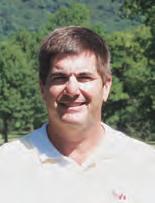
LARRY HIRSH
as clubs slowly rebound from the recent economic downturn – a period when even the most prestigious clubs deferred capital expenditures – club leaders are right to fixate on upgrading the member experience.
Smart clubs undertake this effort with one eye on today’s members and another on tomorrow’s. Clubhouse and course renovations are good examples of 1) investments that clubs feel more capable of undertaking in 2015, compared to 2010, and 2) improvements that can enhance the member experience today and five years from now.
All clubs should evaluate their rules in the same fashion. They should strive to streamline and modernize them to ensure that younger members, future members will feel comfortable at the club.
Operationally, this review should also seek to ease potentially awkward situations for club staff, who are often responsible for enforcing a club’s rules. This may seem a trifling matter, but it’s not.
Most clubs are understandably protective of tradition, which is often manifested in club rules. Yet it’s been my experience that club attitudes toward rules typically harden in the wake of large capital expenditures like course and clubhouse renovations. This makes the balance of today versus tomorrow that much tougher.
“Bulletproof” status is reserved only for a tiny minority of U.S. private clubs, and three rule categories in particular should be the focus of any review: Dress codes, cell phone usage and pace of play. Here’s a sampling of some of the rules recently observed:
Cell Phones
• Cell phones usage prohibited on club grounds
• Establishment of limited areas for cell phone use
• Allowing smart phones for picture-taking anywhere on the grounds, except the golf course
• No cargo pants or shorts
• Hats to be worn only with the bill facing forward
• Shirts must be tucked in
• No denim
• With shorts, short golf socks only (none higher than ankle length)
• The barring of other types of socks with shorts, including knee-length, sweat socks or other athletic hosiery
• For men only, no short-sleeve mock turtlenecks
• Requirements of shirts with collars (mockturtle necks are okay)
• Shorts that must extend down to within one inch of the knee
• Slacks and shorts that must be tailored for golf
• Belts required
• All rounds must be played in under four hours
To some, many of these examples will seem perfectly reasonable. To others, many will seem ridiculous. Further, it’s true that while an inconsiderate person with a cell phone can be disturbing, if you take away an inconsiderate person’s cell phone, you still have an inconsiderate person.
Here’s the bottom line: According to Club Corp, a “clubbable household” is defined as one earning a median income of $250,000 (or $300,000 to $325,000 in more expensive markets). Smart phone technology unchains a lot of these clubbable-but-very-busy people from their desks. It gives them time to use that club and ultimately contribute to its success.
Demographic experts say that today’s successful individuals (and club members) want fewer rules, not more. Does the length of one’s socks or whether they choose to wear a belt, impact the club experience for others?
Is it really possible for a foursome of all but the most skilled players to get around a difficult golf course in less than four hours — on a windy day, when the rough is up, and the greens are firm and fast?
An arbitrary “time par” would seem to me impossible to impose without consideration of daily conditions.
I’m not endorsing or attacking any rule in particular, but in this realm, each individual club has and needs to identify its own culture. Within that culture, they should seek a comfortable balance between today and tomorrow.
It’s a delicate enterprise and rules assessment must play a role. Successful clubs must continually balance its traditions with its evolution as a modern, fiscally stable, functional, welcoming club.
The economic factors are ever present. They are paramount for clubs that have, after the downturn, finally reinvested (via course or clubhouse renovation) and today find themselves with bigger debt burdens.
• Have dues increases or assessments (combined with what some consider oppressive rules) become burdensome – to the point where marginal members are leaving the club?
• Has the club been forced to add new members to the point where conditions have become crowded, the experience is diminished?
• Is it common knowledge that some of these new members are paying less than others?
• Can top tier clubs lose members because other clubs, with more relaxed policies and membership development incentives (clubs that have also reinvested), better suit their needs?
If the recession taught us anything, it’s that all of these scenarios are in play – no clubs are bulletproof. Just ask some of the many, seemingly invincible clubs that are now either closed, burdened by excessive debt, recapitalized through a sale to a for profit corporation or welcoming public play on the dreaded “semi-private” basis.
Don’t get me wrong: Rules are essential for order. However, too much of a good thing can be dangerous. In this overcrowded economic climate, the right balance is critical to maximize the member experience.
The first question for any club to consider is, “What do you want to be when you grow up?” Once the club defines itself and identifies its culture, establishes its mission and objectively establishes an agenda, then leadership can tailor policies, procedures and rules to that mission in a balanced and objective manner. BR
Larry Hirsh, CRE, MAI, SGA, FRICS is the president of Golf Property Analysts (www.golfprop.com), a leading golf and club property consulting, appraisal and brokerage firm based in Philadelphia. He blogs on variety of club and appraisal issues at http://blog.golfprop.com


“Ponder well on this point: the pleasant hours of our life are all connected by a more or less tangible link, with some memory of the table.” – Charles Pierre Monselet
Recently, Jason McClain of the Jonathan Club in Los Angeles was featured as guest chef for our March Menu Madness webinar.
Here I’m highlighting some of my ‘favorite morsels.’ This perspective focuses on your catering menus, but the concept applies to catering and banquet as well as menus for member events.
We sometimes forget that what we create and showcase during our member events is what the members will remember when looking for a venue to host a private event.
If you show them what the club is capable of doing through the menus and culinary delights at your member events, they will be infinitely more eager to book their private events with you. Plus, research shows that engaging, culinary experiences are a key factor in member retention.
Know your audience: This really comes down to what we already know as a sales person and the same concept applies with food and menus –know who and when you can get creative. Some groups love their classic offerings; creative, interesting things they have never seen before tantalize others.
Ask lots of questions and get to know how adventurous your event host is with their food and entertaining style. With members and event hosts today, we are seeing more and more “foodies” – people who can’t get enough of the Food Network, reality shows featuring chefs and food, and inspired menus and culinary experiences.
So, feel free to try and make creative suggestions! Event hosts love when you stray from the “printed menus” and suggest something really special, seasonal and innovative.
Creating a food experience: Great experiences create memories and our clubs are all about creating memories! Think about how a
member or guest will experience the event, the food, the beverages and the club itself. Picture yourself walking in, what you will see, smell, what beverage you will be offered, etc. Is it interactive, exciting and experiential? If not, get more creative.
Create a “wow.” Tie in fresh ingredients from local farms and purveyors and publish the names and origins of these items on your menus. Work with your club’s mixologists and sommeliers to create specialty, original cocktails and wine pairings. If it is a club event, have a photographer capturing memories that can be shared via social media and email with the members. Open up a guest’s eyes to new food experiences with different themes, food cultures and signature dishes.
Fundamentals –The building blocks of fun food: Getting creative means that you have all the staples in place and you can venture out to a place where you stretch the boundaries. The staples are things that keep you organized and calm, like a timely schedule for banquet menu revisions, having a current competitive analysis, having a protocol for menu appointments and chef involvement in them, knowing how to incorporate outside creative partners into the mix, and being confident in your pricing and costing. With fundamental staples in place, it is far easier to let the creative juices flow!
Finding inspiration: Inspiration is all around us and when creating banquet menus, or customized menus for each event, there is no lack of places we can breathe in some creativity. A library of culinary and event décor books in your club, online inspiration boards such as Pinterest, walking through an herb garden or local farmer’s market, visiting new and innovative restaurants and bringing back the menus, networking with other local clubs in your area and taking turns hosting innovative and inspiring lunches and dinners all help our inspiration.
See CulinaRy and CaTeRinG |
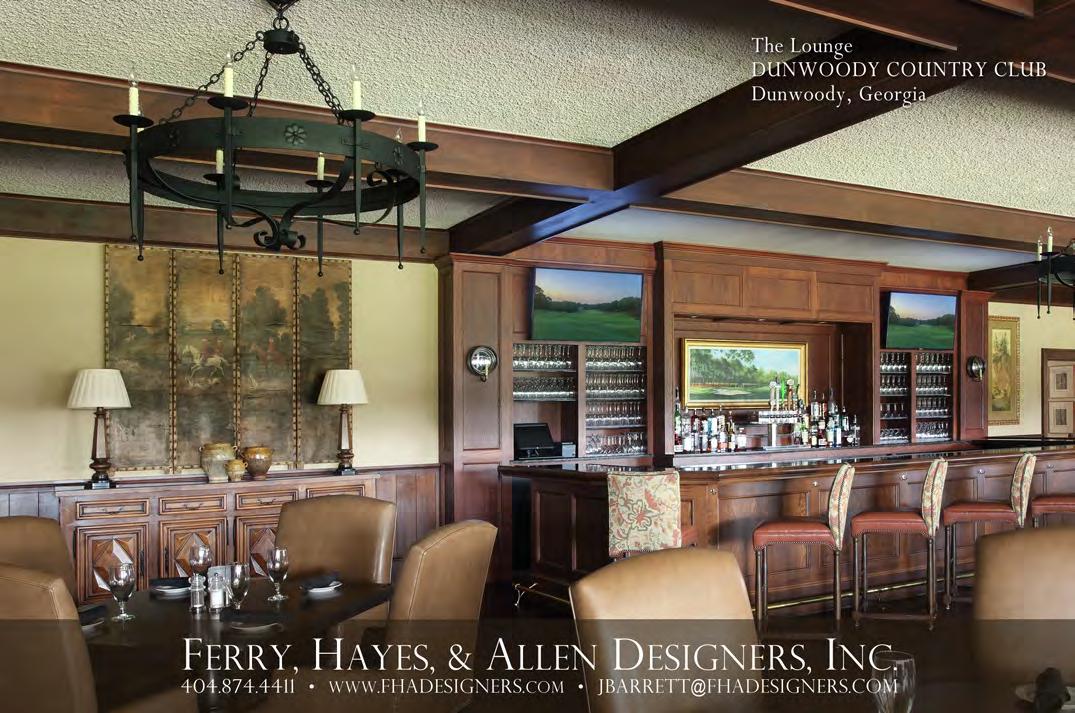
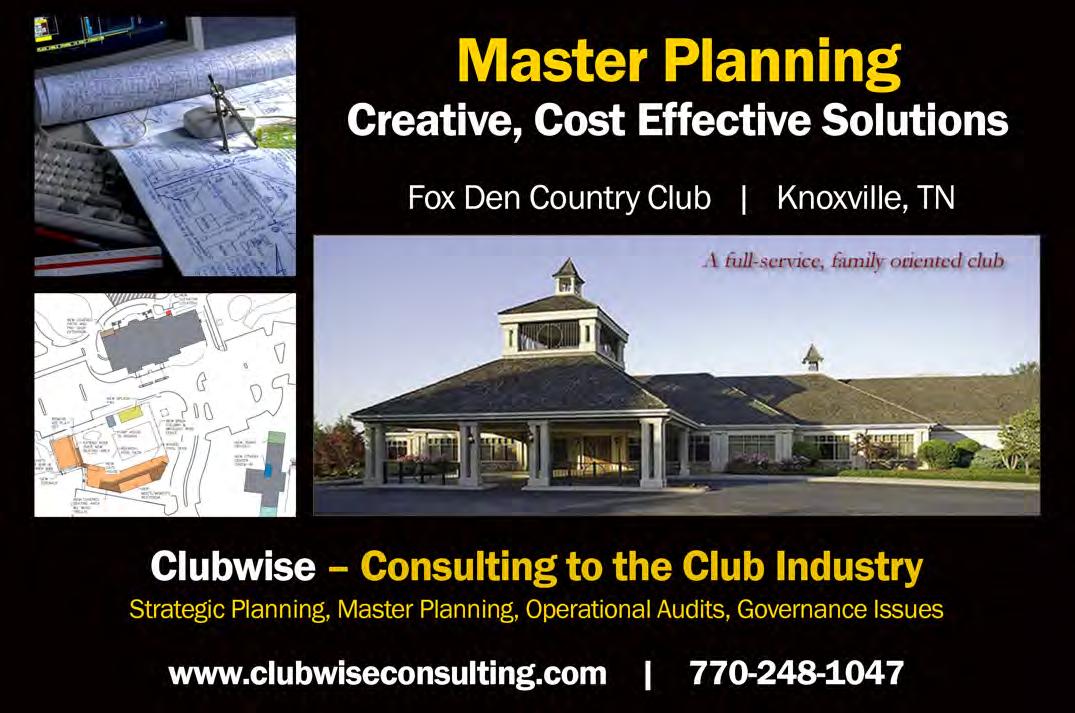

This is a first for me – covering a subject that i have written about in the past. But this topic –Sharing an iT Professional – is so important and timely that i couldn’t resist writing it again.
Back in 2002 I wrote an article entitled “Ever feel like your club’s computer systems are starting to run your life, rather than the other way around?” Club computer technology has not only become more powerful and complex, but it has spread to most every department of the club.
Who at your club has the time – and expertise – to take care of all of the PCs, POS terminals, printers, servers, switches, cabling and software, not to mention the constant barrage of operations questions from the club’s personnel?
For most clubs, these chores fall to the financial executive. Years ago that may have been okay, since computers were pretty much relegated to the accounting department. Today it’s different – technology is everywhere, it’s complicated; it requires specific expertise to understand and maintain, and when it doesn’t work, the club can be in real trouble.
Previously we’ve discussed hiring a full-time technology specialist to handle computer-related responsibilities. That might work well for larger clubs, but most smaller clubs can’t justify the addition of a full-time technology position.
So what those clubs really need is access to a technology specialist for about 20 hours per week, and more if an emergency arises. However, it is virtually impossible to hire a well-qualified professional for this work on a part-time basis.
Enter the personnel sharing concept.
Imagine that two nearby clubs decide to hire and share a single technology support individual – a true professional dedicated to just those two clubs and their computer users. Imagine this person working a half day at each club, every day, handling network and equipment issues, answering user questions, communicating with outside vendors to resolve problems, handling special projects as they arise. Imagine this person being immediately available to handle any emergency encountered by either club.
Is this a dream, or reality?
Not only is it reality, but also it isn’t all that difficult to accomplish. Here’s how it can work:
1. Two clubs (not three or four – that spreads the person too thin) get together and decide to make it happen.
2. Preferably, both clubs have the same core application software. That makes software and network support consistent between the two clubs. Preferable, but not mandatory.
3. The clubs arrange with an outside IT support company to provide a suitable candidate.
4. The IT support company recruits the IT professional expressly for the clubs, acts as the employer of record for the selected candidate and provides a complete pay and benefits package.
5. Management from both clubs work out a suitable schedule for the individual – a set schedule, which changes only in the event of an emergency.
6. The IT support company tracks the amount of time spent by the IT professional at each month, and the clubs are billed accordingly.
7. Management from both clubs conducts an annual performance evaluation and decides on whether the IT professional should be retained or replaced.
This process allows the individual to be employed full time while their work load is split between the two clubs that pay much less than for a full-time individual, since they really only need a part-timer. Most IT support companies will provide such a service for a 15-20 percent fee above the actual employee cost. Bottom line – it’s an opportunity to acquire valuable and much-needed expertise at a reasonable cost.
You might be wondering if technology professionals would be attracted to such an arrangement. Our experience in technology recruiting for private clubs has shown the following:
• A high percentage of technology professionals are self-employed contractors with few or no benefits and no job security
• Many contract assignments involve travel, sometimes lots of it, which is a big detractor for those with families
• While contracting can initially be an exciting venture, for many it becomes a very lonely exis-

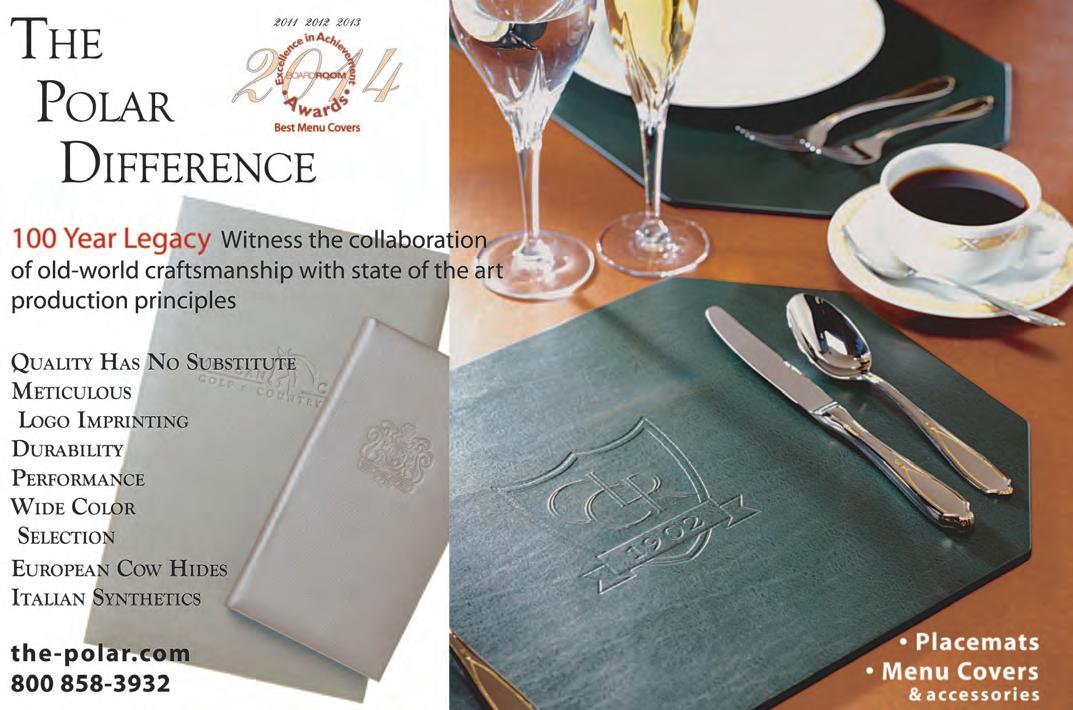


JOHN EMBREE
Throughout the first half of the year, while attending events hosted by uSPTa, uSTa, CMaa and many of our other allied organizations, the prevalent theme has been the importance of increasing value to both club members and our professionals, which is why continuing education must be a top priority.
General managers are continually seeking qualified candidates, and there is no better place to send your tennis professionals to learn about the latest trends and teaching practices than at the USPTA World Conference in New Orleans, Sept. 21-25 at the Hilton New Orleans Riverside.
The conference is the country’s largest gathering of tennis professionals, industry leaders and representatives, manufacturers, wholesalers and media. As the premier educational event for the tennis industry, this year our event returns to its original format featuring four education tracks: teaching, management, sport science and business.
Professionals will attend seminars and specialty courses led by some of the world’s top tennis experts on topics such as designing programs to engage your membership and learning the latest coaching trends. Tennis coaches, directors of tennis and club managers, just to name a few, will provide vital information that your tennis professionals can take back to their clubs and facilities.
As more and more tennis professionals aspire to move off the court and learn how to become directors of tennis, directors of sport and even general managers, several sessions will focus on the ins and outs of running successful tennis programs such as court maintenance, increasing pro shop sales, maintaining budgets and much more.
USPTA is introducing the virtual event bag, a ‘green’ way for our attendees to take advantage of all the offerings from our buying show exhibitors. This will also be available for 30 days after the show! Attendees go online to receive information, discounts and offers from vendors before and after the show, similar to online shopping. The bag will open a week before the show, so be on the lookout!
Also new this year will be a conference smartphone app to stay connected to the action. Attendees can create a custom schedule, leave
feedback, connect with other conference goers, and have instant access to maps, event information. Look for the launch of this app later this summer.
Education is our top priority and for the first time ever, USPTA will offer the purchase of live streaming of general sessions (not seminars or courses) through YouTube, for professional unable to attend. Our professionals will have the opportunity to hear about the latest happenings in our organization and earn continuing education credits for viewing.
The Hilton New Orleans Riverside is within walking distance to the historic French Quarter, streetcar rail lines and Harrah’s casino, and attendees are invited to attend the welcome gala on Tuesday night, Sept. 22 at the National WWII Museum.
The first 700 who check in at the museum will receive a free ticket to one of the three showings of the Tom Hanks’ narrated documentary “Beyond All Boundaries.” Divisions will host their parties on Wednesday evening.
By sending your tennis professionals to New Orleans this year, you are arming your staff with the skills and knowledge to create a high-quality tennis program that serves your membership.
As an added bonus of sending your tennis professionals to the conference, USPTA will give a discount to each pro when three or more pros from the same club register. Contact us at (713) 978-7782, ext. 111 to take advantage of this offer.
USPTA strives to be the premier vehicle for providing high quality education in the tennis industry. I encourage you to continue to invest in your tennis professionals’ education as much as we are invested in elevating the standards of tennis-teaching professionals and coaches. BR
TO ReGiSTeR yOu OR yOuR TenniS PROfeSSiOnalS fOR The 2015 uSPTa WORld COnfeRenCe, viSiT WWW.uSPTa.COM/COnfeRenCe.
John Embree is CEO, the United States Professional Tennis Association and can be reached via email: john.embree@uspta.org or 713-978-7782, ext. 117.
BY DAVE WHITE
you just never know what general managers might say, what they might be thinking, what the current issues are, or if the current issues have even changed over the years. But if you ask, you might get some answers.
For general managers a laundry list remains:
• Micromanaging boards – directors who just can’t keep their fingers out of the general manager’s pie
• General manager burnout
• Lagging memberships and the lack of membership wait lists
• Changing demographics
• The future look of clubs
• Club finances, and a member’s right to know what’s going on
• The requirement for boards to have clear, concise information so they can make rational financial decisions.
Equally important though, is providing a club environment that allows friendships to develop…connectivity.
People have to connect. People who join private clubs do so for a variety of reasons. Often today, the private club is views as ‘the new community’, a place where families and friends can meet to play, socialize and hang out. Even if new
members join the club because that’s what their friends have done, if they don’t connect…if the culture and other members are indifferent to them as newcomers, it won’t last.
Many clubs will find that a large percentage of those who leave their club had been members for about a year. They just aren’t able to connect with the old traditional group and it’s fairly easy to predict who’s going to stay and who’s not.
Often it’s a matter of getting groups that are used to playing together to open their arms to newer members, particularly new members with young families –the group that’s changing the face of many private clubs.
It’s vitally important for clubs to embrace their new members. Membership marketing staff should plan on revisiting with new members, especially during the early months of membership, to ensure that the club is meeting their needs and wants.
It’s also helpful to have club ambassadors – other members who can ‘buddy’ up with new members and family to help them become immersed in the club’s activities. If you want to grow your club, if you want to create that culture with core values, you’ve got to connect the new members. BR
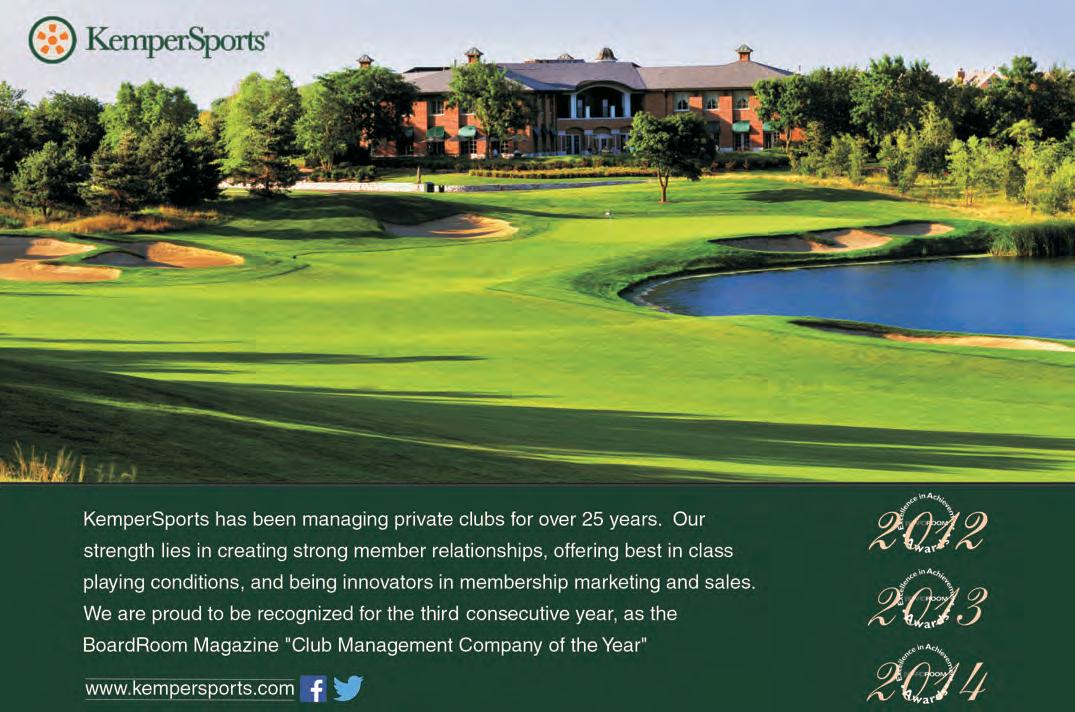
Sumertime is here and time to be prepared for those special events that require cooking and dining in the great outdoors.
With a gentle summer breeze blowing and the aroma from the grill attracting a hungry crowd, any type of food - beef, chicken, fish or vegetables – seems to taste better when prepared and eaten outdoors. Enjoyed with a carefully selected wine or an icy-cold drink - what could be better?
Outdoor cooking has never been easier, or smarter, than with the Slimfold Grill. When the assignment is dining alfresco, the elegant Slimfold Grill provides a great presentation for any outdoor event. Twin independent grills on The Slimfold 6 offer a combined 1,134 square inches of cooking area. A onepiece design, with no extra parts to wear out or leave behind, and a quality construction gives the grill the enhanced durability demanded by chefs and club managers alike.
Folding down to 7½ inches and weighing less than 100 lbs they are easy to transport, a snap to set up and have a quick, no-hassle clean-up. The re-circulating heat design of the Slimfold Grill’s firebox makes this grill unlike any you’ve ever used. First, the heat is kept inside the grill, cooking evenly and efficiently without throwing heat and flames back toward the chef. Another benefit is increased fuel efficiency. You’ll get over twelve hours of high temperature cooking from twin 20 lb. propane tanks, so you save on gas and it’s kinder to the environment too! BR
Cinders have been manufacturing foodservice equipment since 1984 serving professionals throughout the UK and northern Europe. In fact, wherever you have a mass of people outdoors you’ll probably find the Slimfold Grills. For more information visit www.slimfoldgrills.com

BY ALEX TAYLOR
Private members like to think that they own the course. as private course managers know, they practically do!
Members’ financial support earns them the utmost respect on the links and in the clubhouse - yet they still must play by the rules. It can be awkward for a staff member to confront a private member who routinely drives their cart in restricted areas. In many cases, members have been known to drive within inches of the green.
“StayPrimes’ geo-fencing,” said Leo Larizza, general manager of Highland Country Club, a private course in London, Ontario, Canada, “politely reminds our members they have entered a restricted zone.”
“When a cart enters these areas, the cart stops and the driver must reverse out,” added Mike Silver, Highland’s director of golf. “Our maintenance team loves StayPrime. Geo-fencing lets them spend more time on improvements and regular maintenance.”
The StayPrime system also trains your staff. At Highland, Rick Pero and staff, monitor the StayPrime Base Station as they tend to the pro shop.
“If a bottleneck occurs, we see it,” said Pedro. “We can then message the cart or send out a marshal. Managing pace of play keeps everyone happy.”
Increasing revenue at a private club has to be handled with care. Signs and flyers are usually not well received.
“Members would like to promote their business within the club,” said Larizza. “But the advertising must be unobtrusive. The StayPrime system provides this opportunity. Of course it supports national advertising, but the real benefit is revenue from local businesses that wouldn’t normally get the chance to advertise on a private course.”
Silver says he’s noticed fewer Highland players using their smartphone golf apps and GPS gadgets. “They like the large print on the StayPrime screen, it’s more convenient and most members appreciate it when everyone follows the rules.” BR
Contact StayPrime North America at 1-800-649-5924 or visit their web site at stayprime.com for more information.

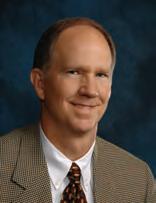
“he’s playing again? he won about three grand last month in the shootout. What’s the deal?”
“Yeah, he just tells me that he’s a ‘member’ as per his contract and has privileges.”
“Maybe, but I don’t see him paying dues or plopping down the initiation fee.”
“Did you know he fired Claire?”
“What! I just saw her last night in the Grille. She’s been here for 20 years! What the heck is going on?”
“He and the board are thick as thieves. There’s always one of the directors in his office. Something has to change.”
The recall was years in the making, initiated by a series of events: the manager participating as if a member, was one; but termination of a long tenured employee happened to be the final piece that coalesced the membership.
Recall of a club’s board of directors is a rare event, one that deserves the light of day, at least to the extent of appropriate courtesy. The events occurred as related by the best memories of several involved, but no names, dates or locations are associated with the story.
The process of moving a thriving club to turmoil and board removal took years and specific events. The players: A smart, strong willed president; a new fiercely loyal general manager; an
Recall of a club’s board of directors is a rare event, one that deserves the light of day, at least to the extent of appropriate courtesy. The events occurred as related by the best memories of several involved, but no names, dates or locations are associated with the story.
ever expanding group of loyal, like-minded fellow directors, and a typical membership, happy to be members of a good club and going about their normal club lives.
A significant legal battle that lasted far too long, became public, and went against the club
was the first sign of a problem. Membership was dismayed at the perceived cause of the event, the apparent mishandling by the board and the fact that an assessment was required to cover both the legal and settlement costs.
As is often the case at clubs, members felt a complete lack of communication, which bred the growth of mistrust in the leadership, including the general manager, who appeared content with “no comment,” as the answer to most questions.
Attempting to get back on track and place the legal setback in the rear view mirror, the leaders felt an upgrade would boost member moral. They began holding focus groups and meetings for capital improvements to the beautiful, but wear-worn clubhouse.
After months of work a ballot was distributed with the plan to upgrade. Unfortunately, the plan was not approved, albeit by a small margin. However, undaunted, the leaders began implementation of the plan!
At this juncture, member grumblings gained in strength and specificity. Many members left the club, some for rival local clubs. The membership value began to erode, and public rumors of “fire sale” rippled through the community.
The catalyst for member action was the termination of a long tenured employee for cause. But the cause, not understood by the general membership was seen as some personal issue between the GM and employee.
The GM, as evidenced by the opening conversation among members, had lost significant credibility. Several members began a petition drive to reinstate the employee, terminate the GM and recall the board.
Sensing strong turmoil, but confident in its support, the board determined that proactively addressing the threatened “vote of no confidence” was the appropriate measure and offered all seats available for a special election.
The membership had driven down a natural path for change, as the board was trying to preempt the vote of no confidence. The public tur-
moil, a manager acting as a member, the board countermanding the failed vote and proceeding with an upgrade, followed by the employee termination had created a natural sense of urgency – the first requirement for successful change.
As the members began to talk and create rumors, a natural coalition formed. Leaders rose to the top – the second ingredient of change. As this coalition leadership took root, it created a vision under which the solution would come. And, as with all clubs, this was communicated quickly through their network of friends.
These friends then empowered the leaders to challenge the existing board, resulting in the board offering all seats for vote. The coalition, having significant informal power, put together a slate of candidates to contest the existing board.
In a stunning surprise, the existing board retained only one seat. New candidates filled all the others.
The original board, a group of men – very strong supporters and long term members of the club – had only the best intentions at heart. Unfortunately, they had fallen victim to the common problem of groupthink. This occurs when a small group makes decisions based on cohesion and a striving for unanimity over a realistic appraisal of other alternative solutions.
This thinking lead the board into believing that the membership still agreed with their tactics, supporting them and the outcomes, even when the members voted down their proposal!
This board is not alone in succumbing to groupthink. The devastation of groupthink has a long history: the Bay of Pigs, the Vietnam War, Watergate, and the war in Iraq may all have roots in groupthink.
Prevention of groupthink is easy in theory and difficult in practice. According to Irvin Janis in Groupthink there are several keys to disarming groupthink:
Someone needs to be the Devil’s Advocate – this is a person assigned the role of taking the opposite side. Assigning a person will limit the negative or hard feelings that are associated with the “rogue” person.
Leaders should try to be impartial in presentation rather than stating the expected outcome first. This is very difficult in practice because it’s normal for the presenter to be biased towards the proposal. Having a standard format for presentation may help to limit this presentation bias.
Assign the same issue to different teams for deliberation, then bring them together for full board discussion. Club boards are usually less than 15 in number so that, in this case, teams can be as small as two or three. The idea is to allow unbiased deliberations to occur.
Board members should independently review the proposal with trusted peers to get an outsiders’ view of the
proposal. But, in the club world rumors abound, so the confidant must be trusted.
Once consensus appears to have been met, hold a “second chance” discussion whereby members can express any lingering doubts. Board meetings can run on and many are very concerned about the 1 ½ hour target meeting, so “another bite at the apple” can be seen as redundant or tedious. However, review of a significant proposal may allow the board one last chance to unearth some unintended consequence.
...Once consensus appears to have been met, hold a “second chance” discussion whereby members can express any lingering doubts...“another bite at the apple” can be seen as redundant or tedious. However, review of a significant proposal may allow the board one last chance to unearth some unintended consequence. It’s also been found that requiring at least two meetings on a proposal before the final vote...is often used as a safeguard to making hasty decisions.
It’s also been found that requiring at least two meetings on a proposal before the final vote (the exception being an emergency issue) is often used as a safeguard to making hasty decisions.
Interestingly, according to Anita Woolley and Thomas Malone in their Harvard Business Review article “What Makes a Team Smarter? More Women”, research and data confirm that groups including women make better decisions than groups of only men. Unfortunately, the new board followed old habits and is all male.
A board falling into the quagmire of groupthink may not realize that it’s being lulled into this abyss. Using these tools may help to keep the board viable, productive, and making decisions based on the membership’s best interests. And having one or more women on the board may not be a bad idea either. But, then, they might need a woman to suggest the idea first! BR
MacDonald Niven, CCM, CCE is the general manager at La Rinconada Country Club in California and can be reached at (510) 439-8522 or via email: macniven09@gmail.com
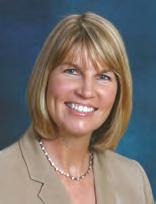
Lisa CarroLL
Metrics and keeping score with data is an important part of communicating with the house committee and board, as well as planning for the future.
Tracking cover counts is one of the most important metrics to track in food and beverage operations. Covers are an invaluable predictor of future behavior and are used for forecasting budgets, labor, and inventory levels.
So what exactly is a cover? “Cover” refers to how many people are served during a shift (breakfast, lunch, dinner, etc.) at a defined outlet. Although it seems like a pretty simple term, the definition of a cover can vary from club to club.
Some clubs count someone who sits down to order anything as a cover, while others count a cover only if someone orders food, and still others count a cover only if someone orders an entrée.
There are even clubs that do not keep track of covers. Wait, what? Actually, everyone wants this information but not everyone tracks it or tracks it accurately according to Nancy Kewin, manager of professional services at Jonas Club Management.
Why the differences? One reason is because “that is how we’ve always done it.” While that isn’t usually a great reason to continue to do something, when talking about covers it might be.
If you want to compare current covers to past covers then the way you count a cover has to remain consistent otherwise it is not comparable to past data. Whatever you do, establish a standard for the metric, teach your servers and stick with it.
What you count matters. If you count only those who order an entrée, how do you account for the popular small plates and tapas-style orders? If you count everyone seated at the table regardless of whether or not they order food, your costs may be skewed (it doesn’t require the same amount of labor to prepare and serve a beverage as it does a three course meal).
How will you count covers on a bar tab? If a person walks up to the bar and orders two beers is that one cover or two? How about a walk-up pool snack bar or golf snack bar at the turn?
Understanding your historical covers can help predict future covers and therefore F&B labor
and necessary inventory levels. This information should be tracked for each F&B outlet as well as member events. Increase revenues by increasing covers. Challenge the staff to review historical data and identify trends. Plan a dining event to bring members in on a traditionally slow cover evening for example.
You can also increase revenues by increasing check averages per cover. Teach servers to upsell and then monitor average sales per cover and reward servers accordingly.
Leveraging cover data is also useful in lowering food costs by having a laser focus on predicting food inventory levels and eliminating waste. POS systems, such as Jonas, have an end of shift report that includes total number of covers and check average per cover. Servers should be taught to review the totals on the report at the end of their shift.
Kewin of Jonas recommends having servers circle their average per cover dollar amount on the report at the end of their shift to verify they have reviewed it. She describes cover count as the “holy grail” of information if you can get your servers to input it accurately and verify it.
Steven Freund, the executive director of The Landings Club says, “the big issue for me is to look at data that reasonably reflects activity and allows us to have a high level of confidence that it is consistently recorded from month to month and year to year.”
Put cover count standards in place and ensure that servers thoroughly understand what constitutes a cover as well as the importance of measuring it and inputting it accurately. Once you achieve a high level of confidence in your covers you will have a powerful measure to increase revenues, lower costs and predict the future. BR
Lisa Carroll is a search executive and consultant with Kopplin & Kuebler, LLC, a consulting firm providing executive search, strategic planning and data analysis services to the private club industry. The company has offices in Scottsdale, Jupiter, Naples, and Atlanta. Lisa can be contacted at (561) 596-1123 and at lisa@kopplinandkuebler.com.
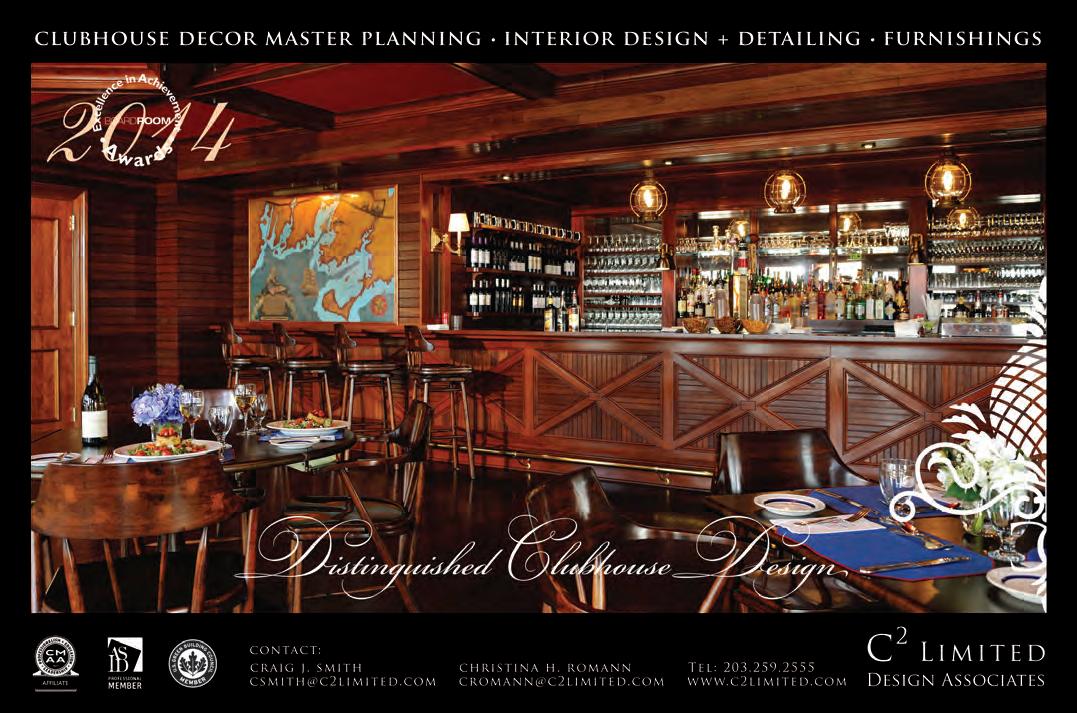
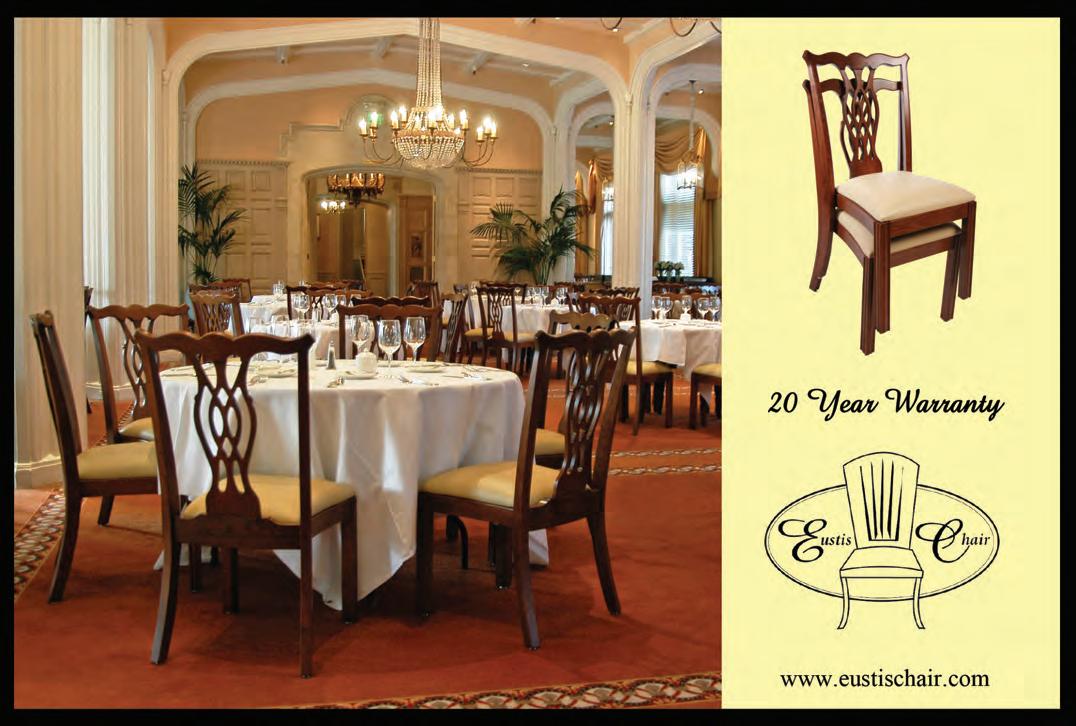

In my 15 plus years of addressing private club boards about facility planning, the somewhat universal thinking was that most club leaders were absolutely certain that they knew what their club needed, and that members would just get in the way and get the project off track.
It’s been an uphill battle to convince them otherwise but now as private clubs are enjoying a resurgence, their governance is experiencing a much needed and long overdue rebirth.
Finally, club leaders have come to the realization that the club belongs to its members and the members have the right – and responsibility – to help guide it into the future.
As clubs throughout the country contemplate their capital need for the future, the most important consideration is the members. The start to any legitimate capital planning process should begin with the members’ involvement and the assessment of their goals and needs.
members want to be heard. they want to share their opinions about what may be best for the club and they can be surprisingly understanding if they are able to personalize the opposing ideas. take the time and invest the money to get the members’ input.
This is most typically accomplished through a membership survey, which can be an invaluable tool in the successful membership approval of a capital master plan. But many clubs recently have opted to do preliminary focus groups in lieu of a membership survey.
These focus groups, (usually four to five groups of about 15 members each), as expected, provide less quantitative and scientific data than a survey. But what focus groups do offer is passion.
An experienced focus group facilitator can gauge the importance of issues based upon the number of times the subject is introduced, the
number of members on each side of the issue, the length of discussion and the passion with which the discussion is held. Passionate discussion about club issues can go a long way in providing solutions.
Even more importantly is the opportunity for members of different age and membership categories to sit next to or across from each other in a controlled environment and share often-opposing opinions on important subjects in their own words.
It is enlightening for members to actually hear from their fellow members what they consider to be important for their club. It can be enlightening enough that some members may just go through the planning process with a different point of view and a more open mind, thereby being more considerate of the overall well-being of the club when it comes time to vote.
A successful capital master plan is all about a membership vote of approval. Members are far more likely to approve a capital expenditure, the cost of which in most cases will come directly out of their pockets, if they feel included in the process.
Inclusion starts at the beginning. Members want to be heard. They want to share their opinions about what may be best for the club and they can be surprisingly understanding if they are able to personalize the opposing ideas.
Take the time and invest the money to get the members’ input. Use a professionally produced survey or professionally facilitated focus groups. Leadership will be surprised to learn that, although 80 percent of what is learned was already known. And the other 20 percentsomething considered important actually isn’t important, or what was thought off the radar is actually a critical issue - may be the difference between approval and defeat of the project. BR
Peter Cafaro is a principal at Judd Brown Designs and Jefferson Group Architects. Based in Rhode Island JBD and JGA provide clubhouse master planning, architecture and interior design throughout the United States. He can be reached at pcafaro@jbd.cc or (401) 721-0977.
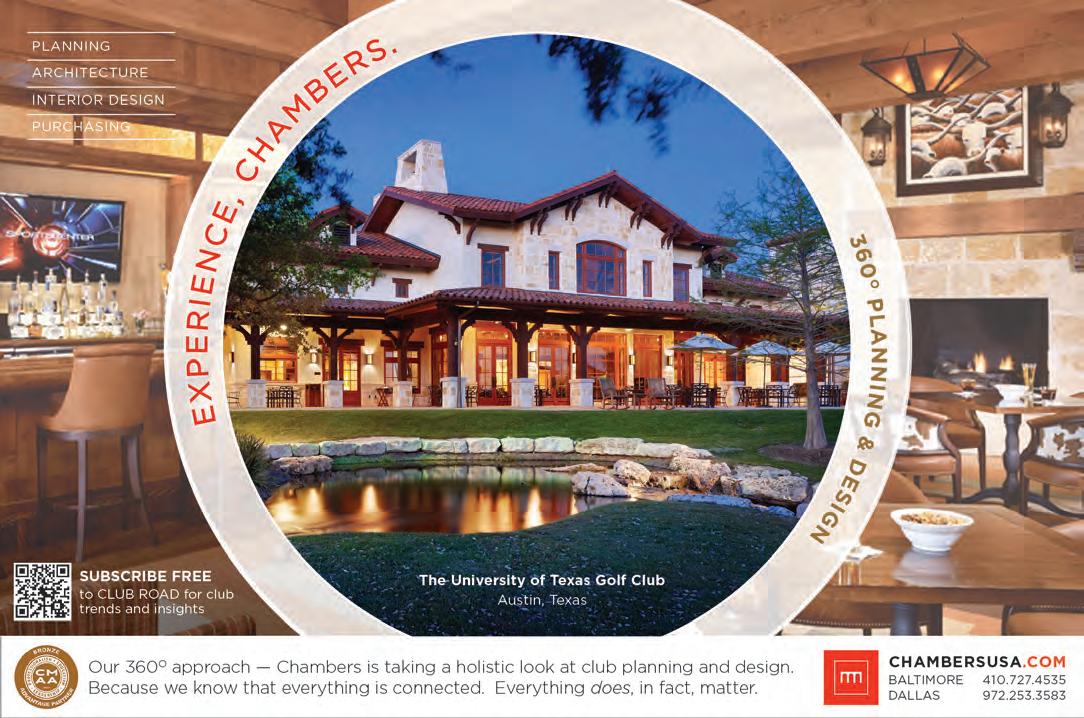
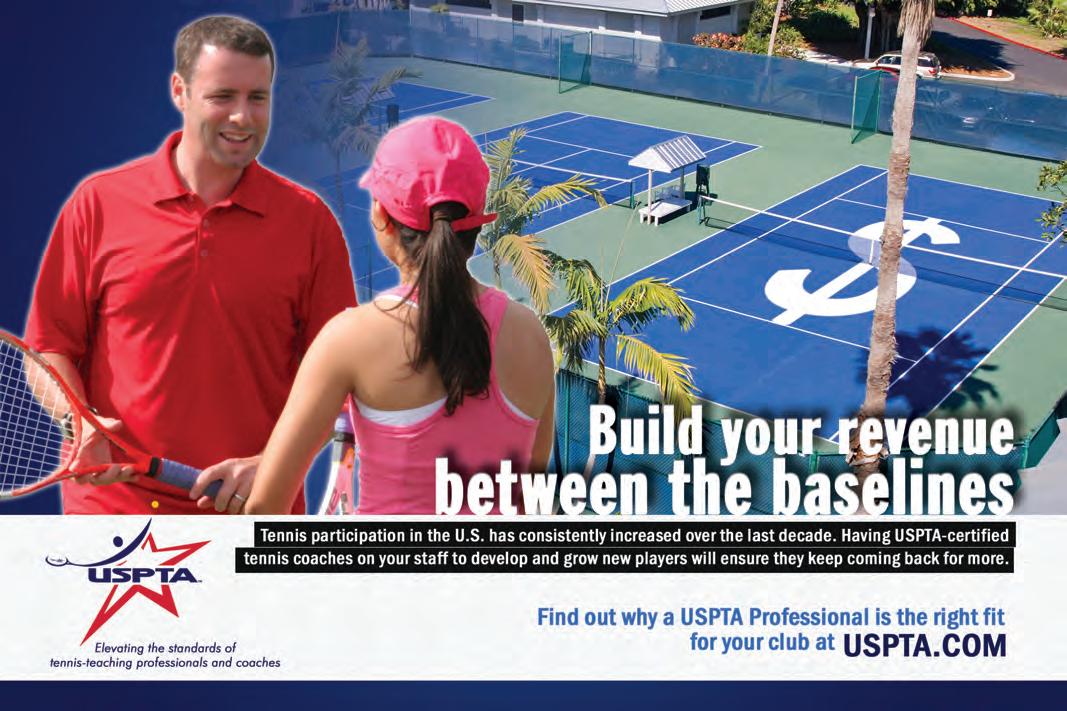

Summer’s here, which means it’s prime season for member, guests and outside events at clubs across the nation. While these events are clearly important to clubs, they can also create liability exposures for which management must prepare.
Most insurance policies protect them from negligent acts of the club, but how are clubs protecting themselves from negligent acts of others? Here are various liability exposures of events and solutions to protect both the club and its members.
Member hosted events: Most clubs allow members to reserve facilities to host events, from small birthday parties to large anniversary or wedding receptions. Generally, most clubs include language in their rules and regulations that protect the club from bodily injury or property damage as a result of a negligent act from a member, their family or their guests.
With this language in the rules and regulations, the club may not utilize an event contract including indemnification language or a certificate of insurance naming the club as additional insured.
But what happens if the member causes property damage or bodily injury to other guests? In this case, at most clubs, the member assumes the liability. Therefore, the member may rely on a homeowner’s policy to respond to the incident.
To better protect themselves and their members, many clubs are taking advantage of single day event liability insurance options naming the club as an additional insured.
Member sponsoring guest event: Another twist to the liability story occurs when members are asked by friends or relatives to sponsor an event at the club. These may involve a large reception with hundreds of guests, increasing exposure to potential incidents, often related to alcohol consumption.
While bartenders and servers have a responsibility to help avoid incidents as a result of intoxication, it is not always fail safe. While responsible beverage service (RBS) training for bartenders and servers is an important safety process, it is just part of the solution.
Let’s assume an incident caused by a guest of a member results in property damage or bodily injury. If there is no event contract in place with
the guest, is the member responsible? Can the member’s homeowner’s policy respond to an incident caused by a guest?
By securing a single day event policy certificate of insurance, including an additional insured endorsement, members, guests and clubs are protected from the resulting liability.
Outside events: Charity golf tournaments are one of the most common outside events at clubs. While they are great for the club, they can also result in serious injury to guests, volunteers or employees.
One of the most common claims is tied to golf cart accidents or injuries, particularly when alcohol is consumed on the course. In situations like these, clubs should:
• Require a separate golf cart waiver attached to the outside event contract
• Add a golf cart waiver for each cart that must be signed by drivers and passengers
• Make official and regular announcements to all guests reinforcing golf cart safety
• Conduct employee training on accident investigation processes and procedures, and
• Develop and implement a safety process for all volunteers including set up and tear down.
The outside event contract should incorporate indemnification language, including certificates of insurance naming the club as an additional insured. It’s important to obtain the certificate before the event, allowing for a review process to take place.
As well, some outside organizations may not have insurance, meaning single day event liability policies naming the club as additional insured are critical to the risk management process. Hosting events of all kinds are part of the club culture, but clubs should make sure they are prepared for the liability exposure that goes along with them. Requiring and using single day policies and event contracts with indemnification language and certificates of insurance with additional insured endorsement is critical to safeguarding and protecting clubs. BR
Gary
Sigel
is
senior vice president of Golf Insurance Services
from EPIC and can be reached at (916) 576-1553 or via email at gary.sigel@epicbrokers.com
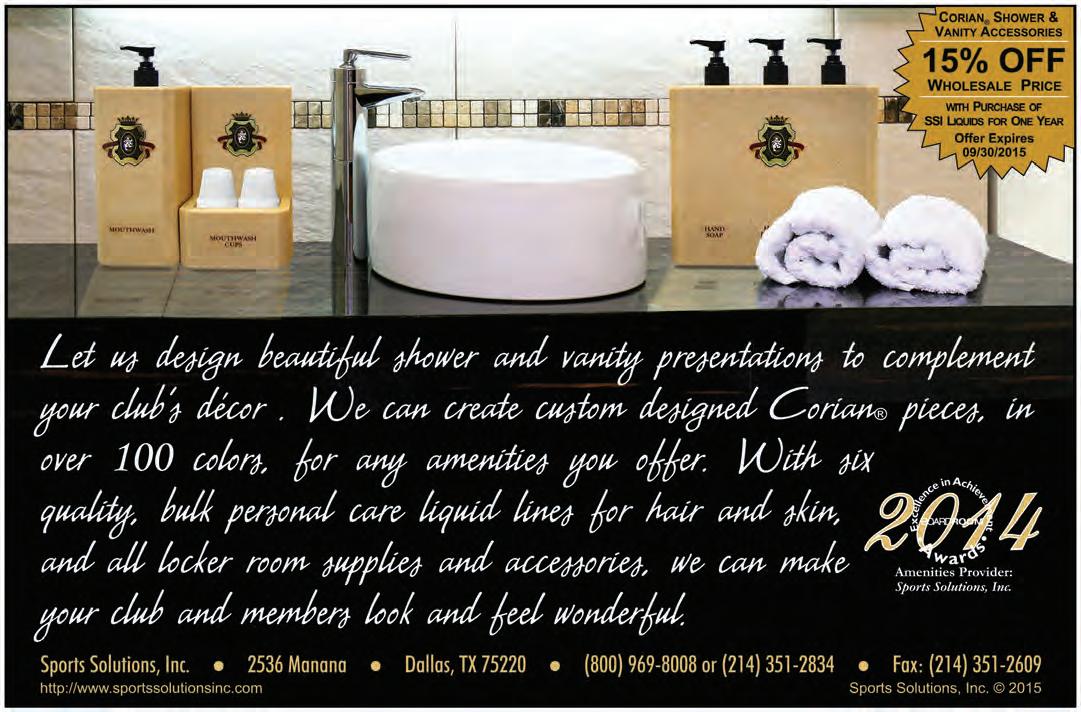
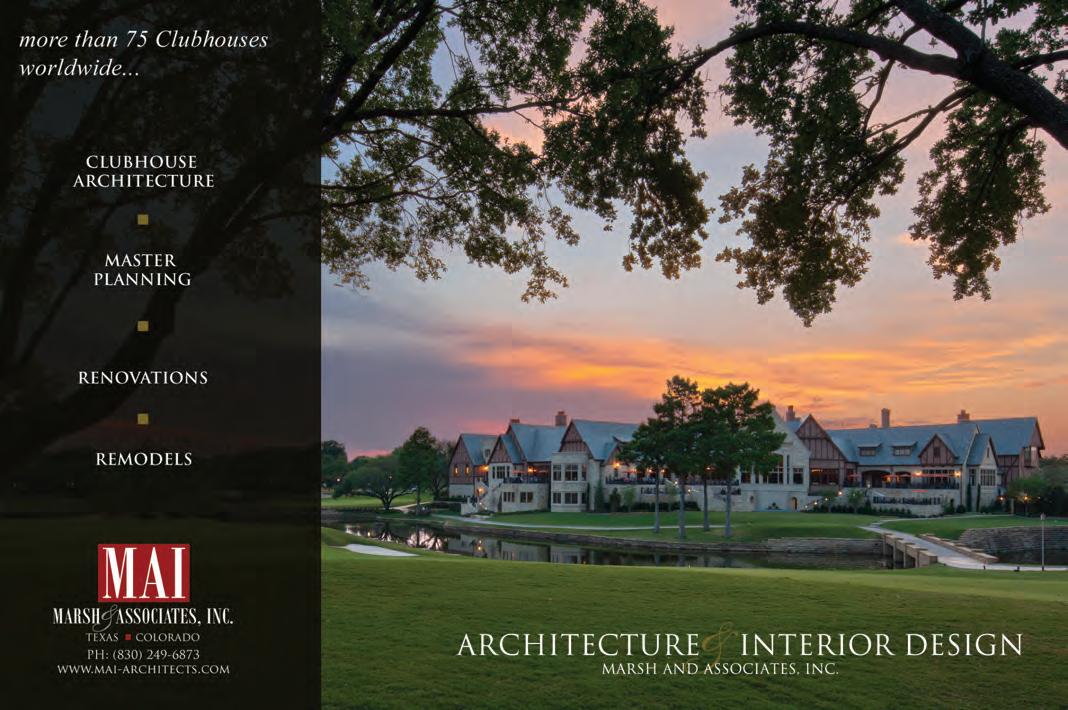
By Dave White, Editor, BoardRoom magazine
BoardRoom magazine annually recognizes the world’s top private club presidents, captains and chairs as Private Club Presidents of the Year, for their outstanding work, their understanding of the industry, and role and responsibilities of the club’s board of directors. In this continuing series, BoardRoom introduces four of the top 22 presidents for 2014.
Private club board presidents play a huge role in professional operations of their clubs as a volunteer working diligently with their board of directors and general managers, striving for well informed, but not emotional decisions.
This recognition by BoardRoom magazine has attracted board president nominations from clubs and other nominators around the world.
These outstanding presidents exemplify the focus on the leadership responsibilities, the accountability and the management of the board providing a healthy respect for the club’s macro management. They are cognizant of the importance of working, effectively and efficiently, with their volunteer boards and the dedication required from everyone with whom they work.
Key elements of a “good” board include commitment, competence, diversity, collective decision making, openness, transparency, effective communication with the management and the membership, fiscal responsibility, development and establishment of the clubs’ mission, vision and policy direction, especially through establishment of a strategic plan.
A successful board president draws upon the expertise of other board members, the club’s institutional memory and stewardship of the club’s resources. As well the board president provides new board members and future board presidents with information they need to perform effectively as board members.
Congratulations to these outstanding private club board presidents.
Five club president profiles on page 58 and 59
Sponsored by

Who is your choice as the top private club board president?
Many people and companies associated with the private club industry are given due recognition for their accomplishments, and now BoardRoom magazine is focusing on selection and recognition of the Private Club Board President of the Year .
BoardRoom magazine, through a nomination and selection process, will honor 20 board president finalists worldwide and one prestigious Private Club Board President of the Year Award.
The top 20 private club board president finalists will be selected by a BoardRoom committee comprised of industry experts and sponsors, who can make an expert judgment, who have an understanding of the industry, the structure of the board of directors, and the role and responsibilities of a club’s board of directors. A third party accounting firm will audit results.
A special section published in BoardRoom magazine will be devoted to the announcement of the top regional club presidents and the “Private Club Board President of the Year.”
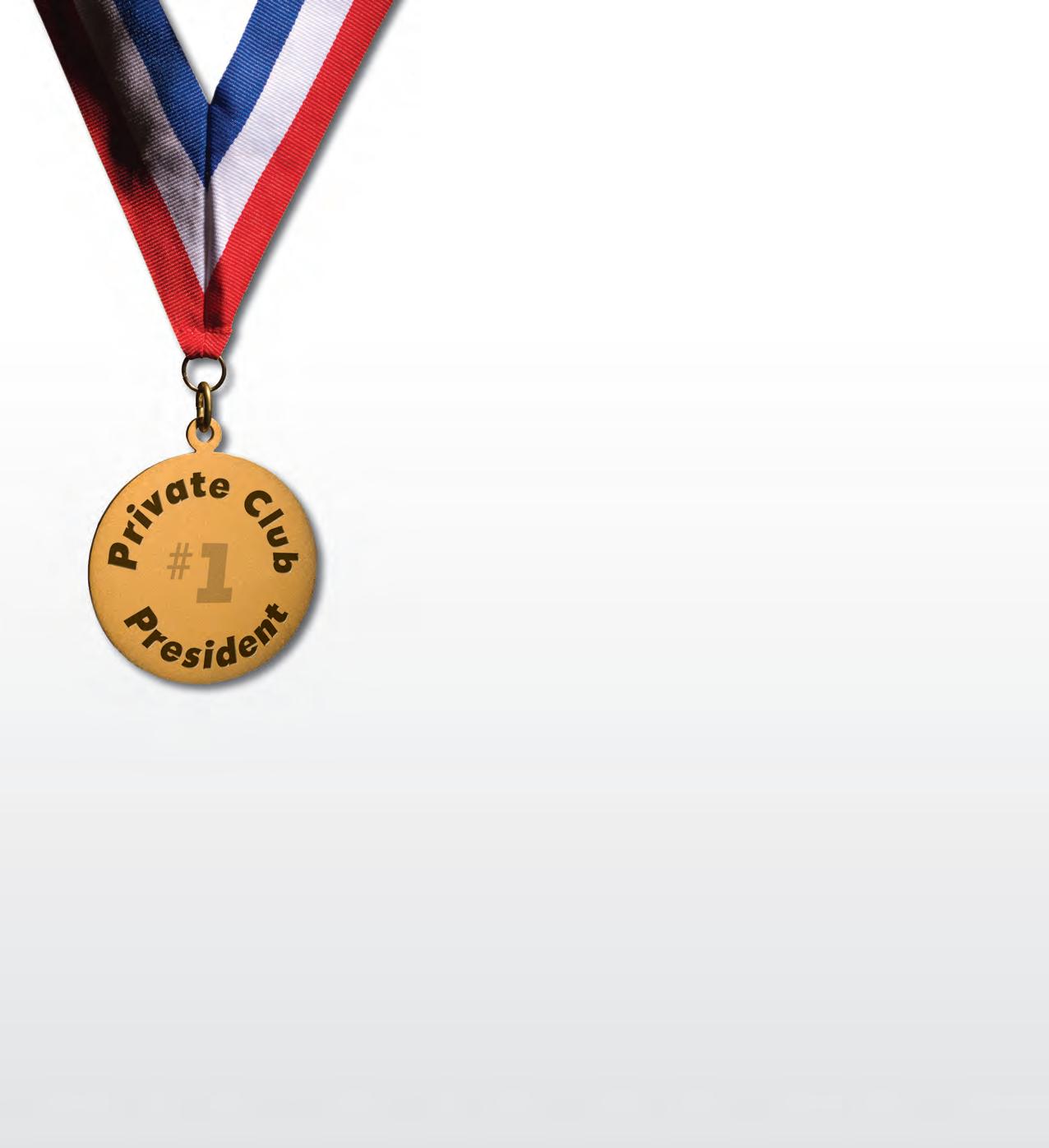
Entry and Deadline
Visit www.boardroommagazine.com to download the criteria and application form. Entries must be submitted no later than Thursday, November 17, 2015. For further information contact John Fornaro (949) 376-8889 ext. 2 or johnf@apcd.com

it’s been quite a year or two for harald elisson, general manager of black mountain golf Club in hua hin, thailand.
elisson, along with being selected as one of boardroom magazine’s top presidents for 2014, capped off a remarkable year when named as the general manager of the year for the asia Pacific region.
as well black mountain was named best course in thailand, best course in asia Pacific and best championship course in asia Pacific. a native of stockholm, sweden, elisson, who’s been playing golf since he was 14, joined black mountain as its general manager in 2007. at age 40, elisson oversees a staff of about 500.
“it a fantastic place and very exciting project that keeps growing each year,” explained elisson recently. “it started with just the golf course but with so many residents now it has become a small communi-
ty with a great mix of people who have black mountain as their second home or where they live permanently.”
since opening in 2007 black mountain has evolved into one of the great golf facilities in asia. it has hosted significant tournaments including the black mountain masters 2009 and 2010 (asian tour), Kings Cup 2014 (asian tour) and the true thailand Classic, co-sanctioned by the european and asian tour and hosted by black mountain 2015. the club’s associated facilities, including a water park and wakeboard park, villas and condominiums, restaurant and spa, tennis and volleyball. it’s made black mountain a favoured venue for residents and visitors from bangkok, southeast asia, europe, the Us, Canada and other countries.
elisson has spearheaded the continuing growth of black mountain.
“We’ve constructed 76 condominiums and 22 villas alongside the championship course (all sold out), and have also constructed 56 pool rental villas and a par 3 course.
“We are now building more properties (4-storey town houses and luxury villas and are also planning for nine more holes of golf,” elisson enthused. all of which makes for a bright future for this inviting golf destination in southeast asia. BR


it required the ‘fix it’ president Pete Kujawski, but the sarasota yacht Club, now has a remarkably bright future. the sarasota, florida club moved into a new clubhouse in 2010 with numerous members leaving the club because of an increase in capital fees and the fear that the club might not make it financially. syC had only been attracting 10 new members per year.
the club also had assumed approximately $15 million in debt through the bank and bonds with members, with limited capital reserve.
enter president Kujawski, the former head of Lockheed martin, who had often been brought in to ‘fix’ that company’s business units. today, sarasota yacht Club is a BoardRoom Distinguished Emerald Club and on a successful path.
“Peter never was a club person and discovered syC while searching for a slip for his boat,” explained general manager bernie Kloppenburg. the rest is history. Kujawski started as a member, became a marina committee member, then committee chair before moving up through the bridge to become commodore.
today, he continues to play an integral role today by chairing the governance and nominating committees.
his presidential accomplishments are many: Kujawski and gm Kloppenburg tackled the club’s financial challenges with the same tenaciousness that Pete had used during his Lockheed martin days. Working with the club’s Cfo, the club re-financed its mortgage and locked in a longterm interest rate. the club also exceeded its operating budget by $250,000 during his Watch year, and has increased the reserves significantly.
the over-arching approach has been to create a balance between implementing financially sound practices and continuously improving member experiences. the clubs developed member amenities through feedback from a comprehensive member survey.
through an innovative membership program the club created the 88th brigade in honor of the club’s 88th birthday. the result: 160 new members in one fiscal year. outside resource brought in to improve the club and focus on metrics, have initiated board training and retreat, best practices in all aspects of the club’s operations, and the in-depth membership survey that played a pivotal role in the club’s strategic plan.
a year round children’s program has also been initiated to enhance the club’s family-friendly culture, and members’ average age is now 53, down from the previous 75.
Under president Kujawski, syC also created the ensign board, the club’s junior board, comprised of a group of middle and high school students whose families belong to the club…young people who have shown interest in developing youth-oriented programming at the sarasota yacht Club.
“Pete Kujawski is one of the most dedicated Commodores i have ever known,” enthused gm Kloppenburg. “he approached his Watch year as his new job, here at the club every day and even on weekends.
“i admired his willingness to partner with me and my management team as we brought in the best resources throughout the country to move our club to the top. i am positive that is the reason why we received the Distinguished emerald Club award.” all reasons why Pete Kujawski is one of boardroom’s top presidents for 2014. BR
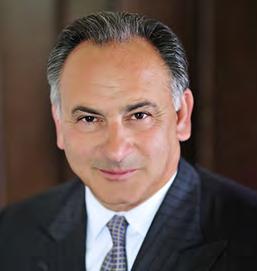
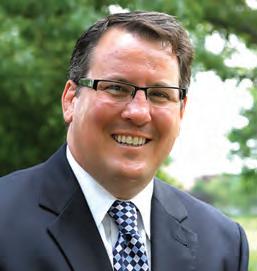
President Gregory Kopan of Inverness Club has focused on building for the future.
“More than anything, Greg is proud to be part of a team of committed members who have come together to improve our club, “said Mark Frasco, marketing committee chair.
Kopan, who served on various board committees before taking over as president in 2013, has achieved many objectives, all focused on improving the club and the club’s member experience. He participated on the club’s strategic planning committee for several years and has been a central figure in conceptualizing and leading the master plan efforts. Kopan has also guided the club to three consecutive years of growing membership during his presidency and while participating on the club’s membership committee. He has shown the ability to work with others as a consensus builder. His board’s oversight of the multiyear transition from an independent contractor golf professional model

William Lichtenberger’s outstanding leadership during his term as the club’s president was instrumental in the successful planning and implementation of three important water projects.
A dispersed water storage project with permitting and construction of three new irrigation wells and the installation of a modernized residential irrigation control system were all completed recently under Lichtenberger’s tenure as board president. The results have lessened potentially harmful discharges to the St. Lucie River/Indian River lagoon system; improved best management practices of restricted irrigation water resources and increased property values by hydrating lakes and wetlands to design capabilities.
These projects will help protect the environment, conserve vital water resources, and secure Harbour Ridge’s irrigation water needs for many years to come, explained Michael Salerno, the club’s general manager and COO since August 2014. Salerno succeeded Leon Crimmins, who had nominated William Lichtenberger as one of BoardRoom top presidents. Crimmins is now general manager/COO of Indian Creek Country Club, Indian Creek Village, FL.
to a staff golf professional model was an important improvement to the club’s golf operations. Joe Furko is now the club’s general manager/COO, with Derek Brody the club’s golf professional.
“Greg believes strongly that we need to continuously improve the experience for our members and look to always be better,” Furko added.
“He’s very proud of our improved branding and communication efforts. He feels strongly that managing the brand quality and improving the quality of our member communication is instrumental in improving member satisfaction and instilling a sense of pride.”
During a time when many clubs are struggling financially, Inverness Club has been able to invest in improvements and remain financially viable. Since 2009, the club has invested over $6 million in capital improvements, on-course irrigation, club house and pool improvements, a new fitness center, a redesigned caddie program, course turf modernization, new perimeter brick and wrought iron fencing and gates, just to mention a few.
These accomplishments have all been achieved with Kopan as president, and a team made up of some long-standing members and new members, crossing generational lines to attract more junior members and national members. The club has recently been awarded the 2019 US Junior Amateur Championship, under Kopan’s leadership. By landing the 2019 US Junior Amateur Championship, it makes Inverness Club, the only club ever to have hosted the US Open (4), US Senior Open (2), US Amateur, and now the US Junior Amateur.
All of which speaks to Kopan’s excellent leadership.
“Greg is an outstanding president who has a great ability to know when to speak and when to listen,” explained general manager Joe Furko. “These characteristics carry him very well with members, the board and the club’s management.” BR
“President Lichtenberger demonstrated tremendous foresight and skillful political adroitness in gaining the necessary permitting from governing agencies and funding from the membership to complete these important water projects, “ explained Crimmins. “His fully engaged but non-intrusive management style was the perfect combination for success and appreciated by management and staff.”
As well, Lichtenberger initiated the implementation and planning of lifestyle center, the Harbour Ridge Family Foundation, dedicated space for casual dining, and initiated the club’s tennis renovation and enhanced marina facilities and services.
“Lichtenberger is an outstanding leader – definitive, decisive, consistent, unwavering with a presence and stature that eschewed confidence and leadership,” Crimmins added.
“He established and maintained a mutually respectful relationship where each of our individual roles was defined and understood. Any club manager would be appreciative of an opportunity to work for and with a president like Bill Lichtenberger.”
He has challenged staff to work in areas outside of their comfort zones allowing them to expand their understanding and experience of the industry along with their potential. That’s precisely what happened with GM Salerno, who previously had spent most of his career in the food and beverage operations. “William Lichtenberger had the vision to help me prepare and develop my skills as a general manager. It’s been executive grooming that has enabled me to grow professionally, “ Salerno explained.
“More importantly he forced me out of my comfort zone to prepare me for the next opportunity.”
Not only did William Lichtenberger keeps the goals and objectives of Harbour Ridge Yacht & Country Club in his sightlines, but he also has greatly encouraged the club’s staff members to grow in their own careers…all good reasons why William Lichtenberger is one of BoardRoom’s trop presidents for 2014. BR

The tragic death of Dave Goldberg (husband of Facebook’s chief operating officer, Sheryl Sandberg) resulting from his treadmill accident brings into sharp focus the issue of unsupervised fitness facilities.
While the details surrounding Goldberg’s death are unclear, one is left wondering how his death, and thousands of similar accidents, could have been prevented. According to Barb Svenson, president of Club Spa & Fitness Association, more and more club spa and fitness directors are being asked to extend the fitness facilities’ hours of operation, in many cases to 24 hours a day.
This is primarily because of the changing demographics of club membership, their growing awareness about cardiovascular health and weight management, and their busy lifestyles. The decision to extend the hours necessarily involves considering whether to staff the fitness facilities for all of the extended hours.
In order to understand the importance of this decision, one must appreciate the role of the fitness center staff. Fitness center staff serves a role far greater than simply offering a warm welcome and a clean towel. They are the first line of defense in preventing accidents from occurring and reducing the club’s exposure to claims for damages based on personal injury.
When members, and other permitted users, first enter the fitness facility, fitness personnel should check to confirm that the club has the individual’s health forms and waivers on file, and when applicable, that the medical documents evidencing the person’s ability to engage in physical exercise has been obtained.
When not on file, the fitness personnel can see that such forms are appropriately completed before use of the facilities. At the same time, properly trained fitness personnel can establish whether the individual seeking to use the facilities is displaying any signs or symptoms of distress, is otherwise in suitable condition to exercise and is over the minimum age required by the club for use of such facilities.
A visual inspection of the person will also allow confirmation that the proper shoes and sportswear
are worn. People exercising without rubber sole, closed-toe shoes on exercise machines has resulted in numerous preventable injuries. Thus, although the interaction at the front desk may be brief, it goes a long way in preventing injury and reducing risk.
In addition to front desk activities, fitness personnel fulfill critical additional duties around the facility. They provide instructions for proper use of equipment, perform machine and station cleaning protocol, give assistance when an individual overestimates their strength with free weights, or render first-aid or communication with medical professionals, in the event of an emergency. Each and every one of these activities are specifically designed to prevent the risk of injury and/or minimize the extent of the injuries, should they occur, and to reduce the time to obtain urgent care in life-threatening emergencies. These activities also enhance the level of quality service that club members anticipate at a private club.
Nevertheless, there are instances when member demand requires extension of fitness hours and the preferred staffing in not logistically possible.
In such event, the relevant cases suggest the following: (i) mandate all users execute specific and narrowly drafted liability waivers, assumption of risk and acknowledgments of the club’s rules and regulations pertaining to use and access to the fitness facilities; (ii) post adequate warning signs with clear instructions and applicable disclaimers; (iii) prohibit use by minors without a responsible adult; (iv) prohibit use of hand-held communication devises while using fitness equipment; (v) provide equipment for emergency situations, such as telephone, radio or “pull-cord” communication devises, first-aid kits and automated external defibrillation units; and (vi) establish live or video-taped security monitoring.
To avoid getting stuck on the treadmill of litigation, weigh the risks versus the benefits of unsupervised access to fitness facilities and keep your fitness facilities and your club in good shape. BR Michelle Tanzer, Esq. is legal counsel to the Club Spa & Fitness Association and chair of the residential, resort and club section at GrayRobinson, P.A. She can be reached at (561) 866-5700 or Michelle.Tanzer@Gray-Robinson.com



Although upscale in caliber, it has been my experience that country club cuisine is often pigeonholed as boring, continental, classic and traditional.
Getting away from this stereotype was one of the first things I was determined to accomplish after taking over as executive chef at Glenmoor Country Club. Fortuitously, in recent years, there has been a growing curiosity in street foods and food trucks, resulting in a worldwide globalization of cuisine. So much so that even Hollywood is taking a piece of the pie.
The foods I grew up with are finding their way into America’s test kitchens. From the movie, “Chef” to “The Great Food Truck Race”, the foodies of the world are becoming more and more educated and intrigued by the product coming out of these mobile kitchens.
Street foods – a common term we hear so often these days spikes interest in trying new and different foods. For foodies, street foods is a term synonymous with ethnicity, authenticity, simplicity, real and veritable. For us cooks, street foods represent sweat, equity and love.
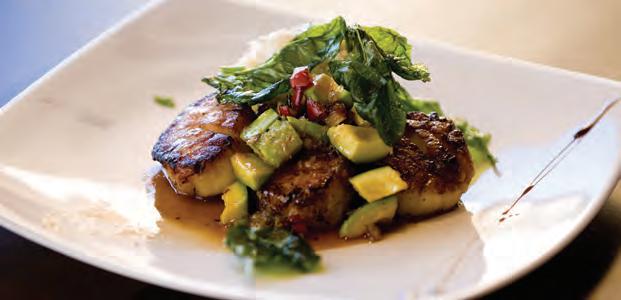
In short, street foods are items intended to truly showcase a region – a far cry from any five-star, white tablecloth, wines-by-the-bottle establishment. Some might think street foods and country club cuisine are an oxymoron. My members disagree.
Since joining the Glenmoor CC in 1998, the club has gone through myriad changes – both physically as well as demographically. What’s notable is the remarkable change in the overall dining culture. Seventeen years ago, the cuisine was basic, standard, continental country club cuisine – a menu
consisting of Cobb salads, club sandwiches, grilled steaks with classic sauces, pastas and salmon fillets.
This represented culture shock for me (although I was a Denver native), because the foods I grew up with were explosive with flavor, spice, wow and ick, all at the same time. Foods like curry crab, spicy pork stuffed tapioca, rice porridge with fermented bean curd, pigs feet slow simmered with rice wine and sweet soy and spicy Thai papaya salad.
I jumpstarted a dramatic change, incorporating as many of the dishes and ingredients I grew up with into as many ‘dishes’ as possible. Daily specials became and still are my testing grounds to see how far I can push the membership into trying new items –infusing simple ingredients into comfort items - a chicken pot pie infused with fresh ginger and shiitake mushroom; pasta noodles incorporated with steak; purple basil, mirin and sesame; and a twist on a classic steak sandwich with Thai chilies and galangal became an instant hit.
I was hell bent on re-training the members’ thoughts about what country club food could be. The overall response and support from the membership has been tremendous.
Nowadays, it is not uncommon to have special requests come in for items like stuffed tofu in oyster sauce, Thai pumpkin curry and ramen noodle bowls. As a result, with the diversity offered in our food and beverage program, we set ourselves apart from all other club cuisine in neighboring cities.
Along with daily specials, wine dinners have become another opportunity to step out of the box through writing wine and food pairing menus. In my opinion, you can absolutely test the limits when pairing food with wines.
Some of the more non-traditional pairings include a Thai cellophane noodle salad with snow crab and dried shrimp paired with a sauvignon blanc; miso glazed Japanese eggplant paired with a malbec and a curried butternut squash shooter with praline-popcorn paired with a chardonnay.
Brett Zimmerman, a master sommelier in Colorado got wind of this pairing – roast lamb in a chocolate mole sauce and smoked trout aioli
paired with a 1982 Rioja Gran Reserva. His response: “What??!”
Call it a coup, but it paired perfectly. Since stepping out of the box with our wine dinners, we successfully sell out of each wine and food pairing event we offer, including monthly wine and food pairings for our chef’s table seating.
Our current all day menu can be described as contemporary global fusion. On that same one page menu, we feature a signature noodle bowl (which has been on the menu for the last 14 years) and a spicy Thai flavored angry shrimp, listed alongside the famous Cobb salad and club sandwich, as well as the ever-popular burger and filet.
The burger will always be one of the top sellers at the club, but more notable is the request for the spicy ginger soy glazed edamame as the side item. Another signature, diver scallops in avocado tamarind glaze with coconut steamed rice and crispy spinach, has been a long time favorite as a weekly spotlight for more than six years now.
We offer a turkey burger infused with Thai flavors: lemongrass, mint, purple basil, chili, kaffir lime and cilantro. It’s served on a brioche bun with cranberry chutney, and there are days when this out sells the traditional burger.
Thinking outside the box is crucial to club food and beverage operations. With the ever increasing boom in new restaurant concepts popping up all over the country and the fortuitous trend in ethnicity and fusion concepts nationwide, I continue carte blanche in my kitchens to try anything and everything.
It’s a personal goal to offer more than what some of the hottest trending downtown Denver restaurants are trying out and we’ve seen tremendous success with our concepts in cuisine and dining.
We have been blessed with very
active membership participation. Year after year, increasing cover counts rival those of trending restaurants. To date, our busiest dinner service hosted 376 covers, a la carte –on a Wednesday night, yet!
Over the last few years, Glenmoor’s food and beverage program has become one of the more important deciding factors, as well as a key marketing piece for potential memberships and memberships sold. Within just the last four years, we have seen food and beverage volume nearly double in annual revenues.
As executive chef, when it came to my first menu change, my first wine dinner, my first board dinner, I reverted back to the foods I loved and knew so well. To my pleasant surprise, ethnicity in cuisine has become exotic, cool and favored.
My father passed away recently, and in the words of Thai Buddhist monks during one of the prayer services, “Live well, eat well, die well…” BR
Penelope L. Wong is the executive chef of Glenmoor Country Club in Cherry Hills Village, Colorado. She can be reached via email chefpenelope@glenmoorcc.org

by eiLeen Korte
The best private clubs create a member experience that feels luxurious. From the moment members enter the club, they want to know that the money they’ve invested is well spent.
While it may seem counter-intuitive, creating a luxury experience for members doesn’t have to be a costly endeavor. Attention to small details, such as anticipating member needs ahead of time, or knowing member names from memory, go a long way. Clubs are encouraged to identify and excel in offering the little extras that members and guests are sure to appreciate.
Club activities that engage members of all ages are essential if your club wishes to communicate that it is a space the entire family can enjoy. Family friendly events, like dive-in poolside movies, are easy to coordinate and loved by members young and old. In clubs across the country, childcare services are increasingly commonplace.
caught without the required license in hand. Fines for noncompliance start at $750 for each inadvertent infringement. Egregious violations are subject to fines of up to $150,000 per violation.
Securing a public performance license for your club is not a costly or time-consuming endeavor. Annual public performance licenses, also referred to as “blanket” licenses, allow clubs to show movies with the assurance of comprehensive copyright compliance as they provide “blanket” coverage for a variety of motion picture producers.
there are many ways to enhance the member experience at your club. however, when exploring new activities, prudent research of relevant laws is key to safeguarding your club from possible fines.
When adding new activities to your club’s calendar, it is important to do your homework. Something as simple as family movie night requires more diligence than popping in the latest animated DVD. Readily available and affordable, movies are one of the best ways for clubs to expand their amenities with budget in mind. However, whenever using copyrighted material, it is essential to consider copyright law before planning your event.
Copyrighted movies and other audiovisual works available for purchase or rental in any legal format, such as DVDs or other digital formats, whether streamed or downloaded, are intended for personal private use only. Showing movies in facilities, even private clubs that are not open to the general public, by law, require a public performance license. This is true even when no admission fee is charged. This means that a seemingly innocuous poolside movie can become a costly endeavor if your club is
Once an annual license is secured, a club can show an unlimited number of movies from any of the motion picture producers represented, with no further reporting requirements. Most importantly, such licenses allow the club to obtain movies on their own, and from any legal source. This means that your club can purchase movies via DVD or iTunes download, borrow them from a library or Redbox, or stream content via services like Hulu, Amazon, or Netflix. The possibilities are endless, but ensure copyright compliance before your event occurs to avoid costly fines.
There are many ways to enhance the member experience at your club. However, when exploring new activities, prudent research of relevant laws is key to safeguarding your club from possible fines. Movies are a simple and affordable activity for guests of all ages. If your club decides to join the many that currently utilize motion pictures, be sure to purchase a public performance license before you push “play.” BR
Eileen Korte is the licensing manager for the United States office of the Motion Picture Licensing Corporation (MPLC), working with facilities ranging from federal government agencies and multinational corporations to libraries and health care facilities to ensure comprehensive copyright compliance. The MPLC is a world leader in motion picture copyright compliance, supporting legal access across five continents and more than twenty countries. It provides the Umbrella License® to more than 250,000 facilities in the United States and over 450,000 worldwide.
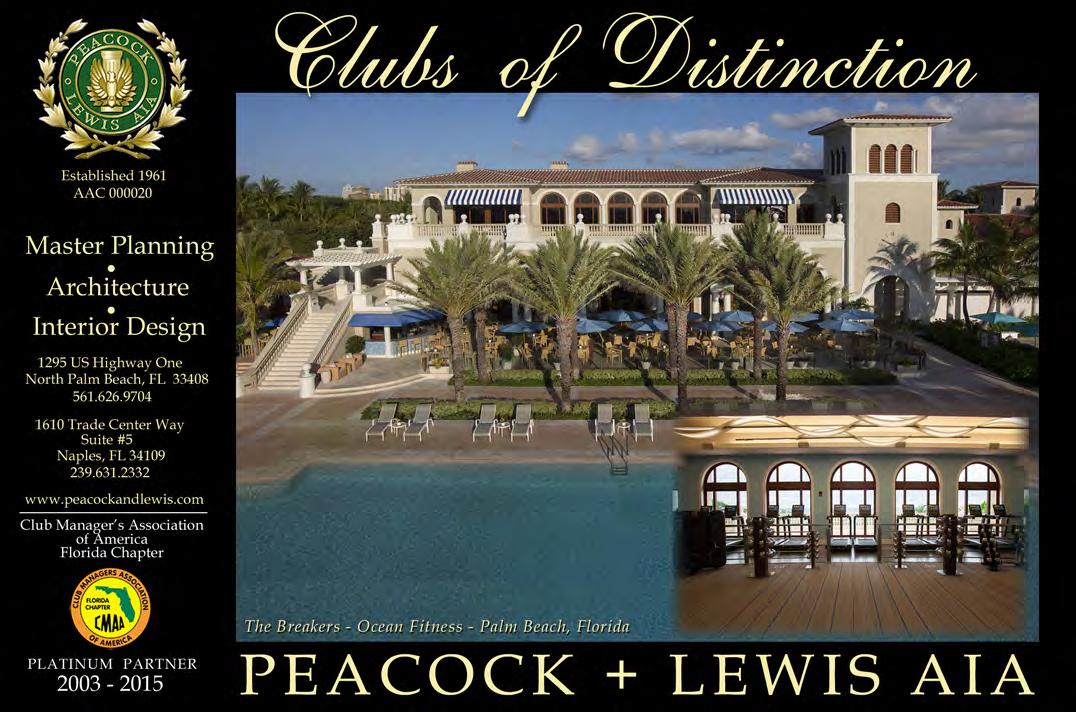
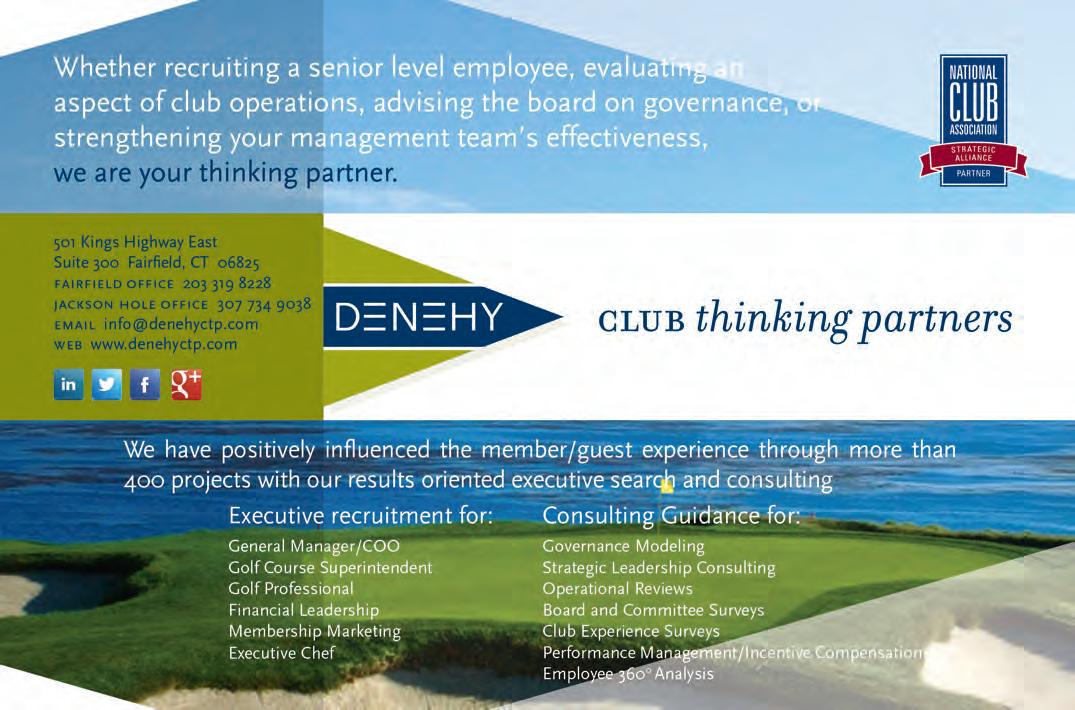
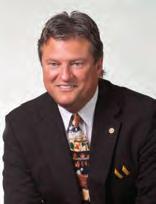
While every facet of a private club has a direct impact on those members using that particular department at any given time, food and beverage operations represent the only place where 100 percent of the membership is served.
Not all members golf, play tennis, visit the spa, shoot skeet, go to yoga, swim, play cards, or attend club events. However, all members do indeed eat and drink.
You cannot prioritize the various operating departments of a private club. Why? Just ask any member what the most important area of their club might be, and they will be happy to tell you that it is the one that they are experiencing at that very moment! Everything that happens at any moment at the club is Priority No. 1 to someone – and every one of them must be treated as such.
– Bud Gravette, past president, Thunderbird Country Club, Rancho Mirage, CA
While all departments are mission critical, it must be acknowledged that F&B is the:
• Most visible
• Most utilized, and oftentimes (need we say it?), the
• Most scrutinized area of the entire club.
Turn these facts into your advantage!
Consistent, very personal, F&B experiences are where the greatest return on investment can be leveraged toward:

1. Increased retention levels
2. A means to encourage guests, and to
3. Enhance new member referrals.
Members treasure personal experiences, for example:
• We are selective in our surroundings. Every form of life must ingest food in one form or another in order to maintain life. But, we humans are the only form of life that somehow derives pleasure not only from the act of eating but also from the environment/ambience of where we decide to eat. Where better than a familiar clubhouse?
• We care about who surrounds us. Surrounding ourselves with family, friends, and like-minded people to share the time with us further enhances our enjoyment. Where better than at the club?
• We like what we see. How our food is presented adds further enjoyment. The saying that people “eat with their eyes” is proven by the great appreciation we have for a culinary presentation that immediately makes us stop just to enjoy the visual stimulation before even taking a first bite. It matters not whether it is a full-blown holiday buffet, a classical dish, or simply a half sandwich and a cup of soup. Nobody does it better than the club’s culinary team.
• We appreciate the manner and spirit in which we are served.
Equally important to quality food preparation, plate presentation, and accompanying beverage of choice is the manner and spirit
in which service delivers every component of an enjoyable meal to the table. We are not only aware of those around us, but we also care about those who serve us. Many of the club’s loyal service staff have been there for years and care deeply for the members.
A great staff takes it personal. “You’re almost like a personal chef for each individual member, which is fun,” exclaims Kenneth Hogh, executive chef, Ridgewood Country Club, Paramus, NJ
Great private clubs are warmly open to change but covet consistency. And there are three keys that clubs leverage into favorable personal experiences for their members:
1. Consistency with the food.
2. Consistency with the service.
3. Consistency with the expectations.
Hmmmm…does anyone see a pattern here? “You must have consistency! It all starts there. Consistency in food and staff. A friendly staff and guest recognition are key ingredients, “ explains Juliana Manion-Copley, co-owner, Copley’s On Palm Canyon, Palm Springs, CA
Achieving all key ingredients has a direct link to having a professional staff that is consistent and that takes things personally. It all comes down to selecting and maintaining a professional staff that takes things personally.
Outside of private clubs, we are all so used to impersonal experiences that we’ve become desensitized to them. It has become what we expect and don’t even know it!
To prove it, let’s take a look at two very representative, yet very different, dining experiences: Dining at a restaurant versus dining at the club.
At a restaurant, after finally being seated, in an effort to “up sell” at every table your server appears with a memorized script delivered in one deep breath.
It goes something like this: (Take a deep breath.)
“Hello. My name is Rhetoric. And I’ll be your server tonight. The chef’s special soup du jour is Warhol Tomato. This is a nostalgic potage served room temperature in a vivid red and white can that is ceremoniously opened tableside. This evening’s fish is Skinhead Idaho Trout. This trout is line-caught under a rainbow with the skin and head removed. Tonight’s dessert is Strawberries Manilow served with a medley of the pastry chef’s greatest hits.”
Then, once the opening lines are finished, there is a slight intake of air, followed by:
“Could I start the table off with an appetizer? Perhaps Goldie Lox & Three Bagels.”
Then, while everyone at the table is sitting in stunned silence:
“May I offer you something from the bar while you make up your mind?”
(Here is where the eyes glaze over, heads tilt 45 degrees, and smile in the general direction of the salt and pepper shakers in the middle of the table.)
Suddenly you realize it is your turn to say something. While you do not yet know what you are going to order for dinner, after listening to this performance, you do know you’d like (need?) a drink!
“Yes, please” you meekly offer. Bring me a scotch on the rocks. As a matter of fact, make that a double!”
Without missing a beat: “Wonderful! Would you like me to make that Macallan’s 64 year old Lalique Cire Perdue?” (Cha-Ching!)
highly
personal interactions and exchanges should be consistently happening in every department, every opportunity throughout the entire club property! every day. every time.
At your club, after being warmly greeted and immediately seated:
“Good evening Mr. and Mrs. Petersen! It is always so nice to see you both at the club. Jimmy called from the valet to let me know you’d just arrived, so we’ve taken the liberty of chilling a bottle of that chardonnay you both commented on liking so much at the wine dinner last week. There were two bottles left, so we set one aside for you to enjoy again whenever you might like. I did want you to know that it is available for you. On the other hand, Mr. Petersen, would you prefer your usual Dewar’s on the rocks with two lemon twists?”
While the two experiences suggest many differences, there really is only one, the one that makes all the difference.
The first experience is impersonal.
The other, a member experience, accurately portrays the difference a personal interaction makes. And while I am focusing here a bit on F&B for all these reasons, these highly personal interactions and exchanges should be consistently happening in every department, every opportunity throughout the entire club property! Every day. Every time.
This is what makes a club different! Wonderfully so. Believe me, it’s personal. BR
Oh, and one more thing, just in case you’re wondering. The letters after our author’s name Michael Crandal, CNG ~ stand for: Certified Nice Guy. Self-certified, by the way. But, a nice guy nonetheless. He and his wife, enjoy each other and their home together in the Buckhead area of Atlanta, GA. www.linkedin.com/in/michaelcrandal

Summer is the high season, at least for the majority of clubs in the U.S. Kids are out of school, days are longer, it’s vacation time from work and the weather is generally pretty nice.
Summer is special. Going back to your childhood, it’s likely that your best memories are kindled by the summer months — camping, hiking, fishing, kayaking, canoeing, water skiing, days at the beach, long car rides to visit cousins, hanging out at ice cream and burger shops and even, depending on your age, drive-in movies (remember those?).
Summers are for families and friends to do things together. Summers create memories!
In addition to the club’s golf calendar, most clubs offer a host of summer programs and activities, many of which are long-standing family and social traditions (i.e., Memorial Day, July 4th, Labor Day, etc.)
Summer’s activities and events are typically published on a calendar (printed and online) and they are often promoted individually as each activity approaches.
We all know how important it is to make our clubs more relevant to families and to the less avid golfers.
What better way is there to make the club more relevant to all members of the family than to make the club the focal point of their summer life?
Here is a program designed to maximize the club’s activities and events, while using much of the same programming already planned and in place, and that will also bring new members into the club at the same time.
It is called “A Summer To Remember.” This is actually a pretty simple idea.
Begin by lining up the usual activities and events that are already planned. Carefully consider adding about a dozen more “headliners” that are different from the ones the members know and expect. Think outside the usual box,
especially using unordinary onsite and offsite resources. Here are some examples:
• Members’ Beach Day (or Lakeside Day, State Park Day), if the club is within about a 30 minute drive of the beach, lake or state park. Organize appropriate activities, such as paddle boarding, wake boarding, beach volley ball, hikes, mountain biking, BBQ’s etc.
• Family Campout on the golf course. At one club where we did this, it was so popular (300 campers) that we offered it twice the next year. We ended up buying the tents to rent out and set up in advance as a member convenience. There were pony rides, a zip line over a lake, fishing contest, remote control boat races, chuck wagon dinner and breakfast, a chuck wagon bar, cowboy poet, bonfire with s’mores, and much more. The Bonfire Bar was open well past the kid’s bedtime…you get the picture.
• “Take Me Out to the Ball Game.” Have the club buy a group of tickets to the nearest major league game and shuttle the members and guests to the game. Serve some snacks and drinks on the shuttle.
• Mid-Summer Night’s Concert on the Green
• Dive in Movie Night
• Offer a weekly “Family Night Buffet” with a separate area and buffet for the kids. When the parents get to be with adults watch the wine sales jump. The “make-your-own ice cream sundae bar” is always a hit.
• Pick a regional golf resort that would be considered a special treat to play. Make it an over-nighter and use an executive shuttle or bus. Plan every aspect and have the head pro host the trip. Example: This year we are having a Santa Barbara Golf with John (our new director of golf has a lot of contacts there).
This will be a premium trip for those who are okay with spending a bit more for a really special time.
• Likewise, plan a trip to a regional winery or a big city shopping district. From Sacramento, we ran a “Union Square Shopping Day” (San Francisco) for the ladies. They had a blast.
• “Lakeside Luau” or “Lobster By The Lake.” Use the club’s outside resources and take it out of the clubhouse.
• “Sunday Sundaes” (Sunday afternoon ice cream sundae buffet on the club terrace, pool deck or out by the putting green). Add a kid’s putting contest or pool activity.
• Reserve an area just for members to watch the town fireworks or the town parade. If you put some extra effort into the planning, you can probably work out preferred parking, rope off a private area, set up a members’ drink and snack stand, and put out some “club” blankets in advance to make it look “privileged.” It’s good advertising too!
When it is packaged it up into a theme, this plan really moves the needle! We called it “A Summer To Remember” and wrapped it into a brochure, incorporating an easyto-read list of events (not the typical newsletter style calendar), with a picture and a two-sentence description of each event.
From the brochure, it’s easy to create an email template for each event. Schedule all of the eblasts in advance so they go out on time and in the right sequence. Lastly, have large posters made for each event
using the eblast templates. Have all of the posters printed in advance and ready to go.
Next, tie the “A Summer To Remember” program into a membership campaign. Create a summer trial membership using the STR brochure and eblasts.
We have called ours the “A Summer To Discover Membership,” which is a 90-day membership. We require a small initiation deposit ($2,500, which is credited towards a membership at the end of the summer), plus three months of dues at about two-thirds the price of the primary monthly dues. If someone cancels early, they would get $2,000 of their deposit back.
We use this 90-day period to vet the summer members (candidates) by assigning a membership committee liaison to play two rounds and host them for a meal. The summer member candidates would go to their membership interview at the end of the summer and then into the appropriate category of membership.
Member candidates get a real feel for the club and the current members create memories and get greater value from their membership. It will be “A Summer To Remember.” BR
To learn more about this and other membership marketing related subjects, contact Bob Bodman, president of Club Resources (800) 267-6758 or via email: Bob@ClubResources.com


Who exactly is the modern affluent member?
Specific definitions vary according to source and geography but research group The Affluence Collaborative, a research powerhouse that dives deep into the habits of high-income consumers, classifies the “affluent” in the U.S. as having a household income of at least $200,000 and the “wealthy” have an income of more than $500,000.
According to The Affluence Collaborative, the affluent and wealthy have a new gratitude for their financial status, perhaps because of the refocusing of values that came with the challenging financial climate: 54 percent are happier today than they were in 2008.
With this refocus on values, today’s prospective affluent member may be happier, but they are also even more discerning. Here are four key factors to consider:
Clubs should focus on telling stories that highlight the experience of joining of a private club, not the amenities. Paint a picture of the benefits a member will experience, including regained time with family, a chance to meet new friends, and enjoying memorable experiences.
1. Conscientious spending replaces conspicuous consumption: The modern affluent put much more thought into their purchasing decisions to determine whether a product or service will intrinsically improve their lives. For clubs, this indicates a need to consistently reinforce the value proposition to ensure membership is ‘worth the money.’
2. Money can buy time and experiences: Save wealthy consumers time or deliver a memorable experience, and you will have a customer for life.The strongest contributor to happiness for the time-strapped wealthy is moments spent with loved ones.
3. Performance as status symbol: Affluent consumers ask themselves “How does this brand deliver on things that are important to me?” before making a purchase.
4. Consumer as Chief Marketing Officer: Social networking has completely redefined how modern affluent consumers engage with a brand. Now, it matters less what a brand says about itself; what matters is what people say about a brand.
For clubs seeking to connect with today’s modern affluent audiences, a modern marketing strategy is a requirement. Today word of mouth means – not just the opinions and experiences of family, friends and business colleagues but also the opinions and experiences of anyone via social networking.
For private clubs, this translates into increased expectations across all touch points – including digital media platforms – as prospects gain new awareness, education and research while club members seek to engage in, and reflect upon their experiences.
Digital think tank L2 reports that 78 percent of affluent Americans participate in social networking sites, with more than half using social media to connect with a brand. Sixty-five percent of wealthy consumers believe that brands that have no presence on social networking sites are out of touch.
For many of our private club clients, we recommend utilizing “dark” social media campaigns. These are paid digital marketing campaigns using Google, LinkedIn and Facebook that allow clubs to deliver content in a way that is authentic and engaging, but targeted only to a specific
Today word of mouth means – not just the opinions and experiences of family, friends and business colleagues but also the opinions and experiences of anyone via social networking.
audience based on income and an almost endless amount of behavioral and lifestyle data.
For many clubs, a new era of ‘inclusive’ exclusivity is upon us. This requires a brand strategy that moves away from the exclusive brand position of “I can and you can’t” and moves towards an inclusive position of “I can and you should come along.”
For these clubs, value becomes a derivative of how many people want to belong, whether they can afford it or not. Affluence Collaborative research has shown that by creating an inclusive platform for brand engagement and cultivating relationships with aspirational consumers, brands can actually increase their exclusivity among consumers who can actually afford their products.
Clubs should focus on telling stories that highlight the experience of joining of a private club, not the amenities. Paint a picture of the benefits a member will experience, including regained time with family, a chance to meet new friends, and enjoying memorable experiences. BR
Michael Phelps is principal and co-owner of Pipeline Marketing, a firm specializing in sales and marketing solutions for lifestyle-related industries. Michael also leads the marketing and technology areas of Pipeline and has been in the private club industry for the past 20 years. More about their firm, including complete survey results can be found at pipeline-inc.com.



The politics of disclosure and non-disclosure play a discreet but increasingly important role in today’s private club industry.
While the finances of private equity clubs have traditionally never found their way into the public domain (these are “private” clubs, after all), neither have the finances of private equity, or member-owned, clubs ever been so dire.
Of the 4,000 private equity clubs in America, conservative estimates peg those carrying dangerous levels of debt at more than 50 percent.
Every week we see evidence of these clubs making attempts to get out from under this debt. Some go semi-private. Others sell off to real estate developers. Still more resort to thirdparty management or convert to the non-equity model, whereby a professional owner/operator recapitalizes the club and retires the debt.
No matter which direction these indebted clubs choose to go, it’s imperative they consider and ultimately manage this change in the most discreet fashion possible. Externally, this means insisting on non-disclosure agreements at the earliest practical stage of discussions. Internally, it means maintaining strict discipline when it comes to discussing club finances and any potential transaction.
Clubs that fail to take these steps simply aren’t adequately protecting their own investments.
Let’s first examine this process as it pertains to external parties, and let’s be candid: Today, nine times out of 10, debt is the thing necessitating these dealings. It’s the reason private clubs are seeking management or funding solutions from external parties such as an owner/operator of private clubs, a third-party management firm, or a potential individual investor.
Accordingly, clubs should seek non-disclosure agreements (NDA) at the earliest possible moment. How early? The subject should be raised during the introductory call or meeting, and it goes without saying that said call or meeting should be kept brief and businesslike, disclosing no financial or membership information.
This, we can agree, is straightforward and prudent. Reputable, experienced owner/opera-
tors, third-party management firms and individual investors have been down this road before –they will welcome the discretion. Indeed, dealing with external parties in this way is easy part.
Maintaining internal discipline is far more complicated.
There are several important, internal safeguards that should precede contacting a third party and signing an NDA. Too often, they don’t get taken care of because a member of the board, or a concerned member, has reached out to external parties on their own.
We all know how word gets around when you sell a house. Somehow, all your neighbors find out. You don’t need a sign on the lawn – everybody knows!
Smart clubs designate a board member or subcommittee for the expressed purpose of exploring these various management, ownership and capitalization options – before any calls go out to external parties. This is the ideal.
If an individual member or some cohort of members (not official board representatives) has already contacted someone on their own, their efforts can be funneled through this subcommittee.
If discussions are broached without anything in place, it’s really important that a special, dedicated committee is formed immediately – and only the members of this subcommittee are made aware of the options being considered.
This is not subterfuge or unnecessary secrecy. It is investment protection for each and every member of that club.
Here’s a real-world example. When negotiating with an exclusive private club in Florida, a consultant, who suggested a non-equity conversion, referred the board to us.
Instead of forming a small subcommittee to carefully explore this alternative in a discreet and confidential way, board members quickly called a series of all-member meetings to have open discussions about this and other capitalization options.
Unfortunately, word got out and now it’s all over town. Members have left. Competing clubs are moving in, intent on plucking away a few more.
I’m confident this deal will get done, because it makes too much sense for all parties. But the club’s equity position and negotiating position has been damaged by the loss of these members, by the rumors now swirling around the community. What’s more, when and if the transaction is finalized, it will be hard work to win the members back or replace them.
Again, this is not subterfuge for the sake of subterfuge. Clubs need to protect their standing in the marketplace, at all times, but especially when they are mulling how they are going to confront debt issues. Indeed, the mere acknowledgement of debt issues is enough to scare off potential members!
Discussions about the potential recapitalization of your club are just that…discussions. It’s perfectly appropriate that they be conducted in a controlled, discreet environment.
Companies never conduct all-employee meetings about prospective mergers, IPOs or sale transactions – not until after the deal team or board has carefully crafted a deal under strong non-disclosure agreements.
Ever wonder why you don’t read about debt refinancing and mergers until after they’ve happened? This is why.
If club discussions don’t result in a formally proposed transaction, there is no reason the entire membership needs to know. Broad disclosure of mere discussions does nothing but place each member’s investment at risk.
Further, members ultimately will have their say in this process. Typically, the special subcommittee reports back to the board on whether the club should move forward with the transaction, or not.
If not, then club life goes on as before, without any ill effects stemming from rumor and anxiety amongst members, and in the larger marketplace.
If a subcommittee does recommend approval, the board then votes on the matter. If approved, the board will execute the documents subject to ratification by the members.
Club bylaws typically require a 51 percent or 67 percent vote of the members (with varying definitions of a quorum) to approve a major transaction such as a sale or recapitalization of the club, or transition to nonequity status.
The board will notice a special meeting to consider the proposed transaction, and make available a summary for all members to review and consider. At the special meeting, the board will present the rationale for the transaction and the board’s evaluation of its alternatives.
The club investor/operator will typically be invited to make a brief presentation of their qualifications and the terms of the non-equity transition –focusing on the covenants to protect the membership and the planned capital improvements to be undertaken.
Members will have many questions, and a Q&A session is useful to air these discussions. The membership vote to ratify the transaction is usually held at the special meeting or within the week following, depending on the bylaws.
Some deals get done, others do not. Ultimately, club members are the arbiters. What matters before that vote is whether the club has protected its current membership, their investments and the club’s reputation in the local market, while exploring and perfecting these sensitive debt and capital discussions. BR
Peter J. Nanula is chairman of Concert Golf Partners (www.concertgolfpartners.com), an owner, operator and all-cash buyer of private golf and country clubs. Concert Golf specializes in recapitalizing member-owned clubs carrying too much debt, converting them to non-equity status, and maintaining the clubs as fully private. Nanula is the former CEO of Arnold Palmer Golf Management.

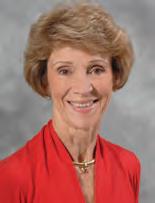
If I’ve heard it once, I’ve heard it a million times. At CMAA World Conference. At chapter workshops. At BMI III. We are a family friendly club. Okay. So just what does that mean?
For virtually every club manager and board member with whom I’ve talked, being family friendly translates into having club activities designed with children in mind. This can run the gambit from child care to movies-under-the-starsnight to etiquette classes. Note that the operative word here is activities.
To say that private clubs have changed over the years is an understatement. Remember the 1980s General Motors advertising campaign: It’s not your father’s Oldsmobile? Ditto for clubs.
Gone are the days of the mythical three-martini lunch, tax-deductible business entertaining, and membership being driven by one’s community position or status. Gone, too, are the idyllic days of Ozzie and Harriet, The Brady Brunch, along with Lucy and Desi.
Today, it’s more like Modern Family. As the demographics and lifestyles of club membership have morphed, so has the needs of members. Fitness centers, casual dining rooms, and Internet access have or are all being integrated into the physical design of clubhouses.
But the underlying driver of many of these changing needs is how we think about family. While a family can be described in many ways, the U.S. government defines it as a group of two or more people (one of whom is the householder) related by birth, marriage, or adoption residing in the same housing unit.
Most clubs, however, think of a family in terms of mom and/or dad, and kids. They think of them in terms of spaces and programs – child care areas, Santa brunches, or etiquette lessons.
But what about design? How much “kid-thought” goes into a club’s thinking when it comes to either new construction or renovation? This goes beyond baby-changing stations in the men’s locker room, wading pools, and pint-size buffet tables.
This goes into core design elements – form and function. To better understand how important it is for any club to integrate kid-thought into any design process, consider the following five facts.
• In 2012, kids buying power reached over $1.2 Trillion. Yes, that is with a “T.”
• They influence up to 80 percent of all household purchases.
• Kids pick out what they want to eat and where they want to go 85 percent of the time.
• About three out of four parents say they ask their kids’ opinions about things they buy, including their cars.
• Today, about 75 percent of the entire U.S. population are children under 18; this number will jump to over 76 percent in five short years, and explode to nearly 86 percent by 2050.
The bottom line is this: Kids can’t be ignored as a market – i.e. club – segment in their own right. Nor can they be ignored when thinking about your renovations or redesigns.
In fact, a 2014 survey in Club Director Magazine shows that the number one club renovation is family-friendly facilities – ranging from specifically designed tween rooms to multi-purpose ballrooms with movable walls to accommodate a variety of family activities.
Also high on the list is resort-style pools that more closely resemble water parks with splashpads, waterslides and adjacent grassy areas, play areas, and fire pits so families can enjoy “staycations” at their club. Then there is rejuvenating dining areas to be casual, yet sophisticated, environments that become hubs for members to socialize, relax and enjoy family meal time together.
Rejuvenating dining spaces – indoor, outdoor, even rooftop terraces – can generate more than a 25 percent ROI. And, of course, no one can think of kids without thinking about technology. In a world where the entire family looks to stay connected 24/7, clubs have to include technological upgrades in any redo – club-wide Wi-Fi is no longer a luxury, but now a necessity for all ages. And don’t forget to integrate charging stations into your plans too.
Working with an architect and/or interior designer skilled in family (i.e. child) friendly spaces can take some of the uncertainty and stress out of any renovation process.
They know what is important for preschoolers, doesn’t work for teenagers.
They also know that, just as men are from Mars and women are from Venus, adults are often from earth, while children are from the moon.
Consider your plans to integrate a long straight hallway into your club’s renovation.
Adults may only see it as a way to get from one room to another. A child sees it as an inviting straight-away opportunity to run, jump, or hop.
What about that three-foot retaining wall that will rim the practice putting green? For adults, it is a decorative landscape feature, whereas for children, it becomes a perfect balance beam. In both cases, children are doing what their brains are biologically programmed to do – explore and interact with the environment in an innovative way. Then, of course, there is the issue of kids’ attention span. Enough said on that point!
Designing with kids in mind is no simple task, especially for an adult-oriented club environment. Most adults have a different perception of the club environment than children. One designer, who specializes in kid-centric design says that his underlying goal is to create an environment that produced the desired behavior and outcomes, and deters the undesirable ones. He also says that it is a complex challenge that holds true whether designing a family-friendly environment for dining, play, enrichment, or pure fun. Every parent will agree.
So will every club manager.
Family decisions have become much more collaborative, much more democratic. So if the kids don’t like your club, if they don’t like the spaces, the events, the programs, or the menus, it will be a tougher sell to get mom and/or dad to 1) become members, and 2) more importantly be active members who bring a lot of revenues to your top line.
There is no one formula for designing club spaces that are family-friendly. But by taking into account safety, flexibility and the developmental stages of the club’s younger members, your club can create spaces – inside and out – that will enhance the family’s experiences and bring them back more often.
Your bottom line will thank you! BR
Bonnie J. Knutson Ph.D. is a people watcher. A professor in The School of Hospitality Business, Broad College of Business, Michigan State University, Dr. Knutson is a member of the Country Club of Lansing and the Michigan Athletic Club. She can be reached via e-mail: drbonnie@msu.edu
Hilda W Allen Real Estate, frequently referred to as HWA, in business for 35+years, has been an industry leader for more than 23 years.
HWA provides both traditional brokerage services as well as some more nontraditional choices: One being, an Accelerated Sales route. Accelerated Sales attract qualified, competitive purchasers who are prepared to negotiate the sale price of a property with other purchasers instead of with the seller. Competitive bidding establishes market value compared to a negotiated sale, therefore it’s a quick clear alternative. The Accelerated Sale process usually takes 120 days from the date advertising begins until closing.
Here are some various accelerated sale methods and their definitions:
• Absolute Sale: The property title must pass title to the highest bidder.
• Reserve Sale: Title must pass to the highest bidder at any price above an undisclosed reserve bid established by the seller prior to the bidding.
• Hybrid Sealed Bid Offering: Discreet; Confidential; Top Bidders participate in one final bidding round at seller’s option.
• Call For Offers: General call to buyers to make an offer.
Additionally, Hilda W. Allen Real Estate offers an Opinion Of Value Program that includes a confidential written estimate of the price a qualified buyer will pay to purchase your golf property in your market, a site visit, an evaluation of the market, market demographics, gross and net earnings, sales of similar properties from our files and other sources. CALL HILDA W. ALLEN TODAY 1-888-324-5020 BR

by DR. RonAlD F. CiChy, DR. PRAneeT RAnDhAWA AnD DR. MiRAn kiM
“Innovate!”, the survey says.
The latest private club study by research teams at Michigan State University focuses on topic of service innovations. Research teams at MSU have been studying the private club industry since the late l980s. General managers and chief operating officers, in collaboration with private club volunteer leaders, have identified and improved a number of leadership practices.
When asked to identify the most pressing challenges facing private clubs, participants pointed to membership as the top most pressing, including attracting new – particularly young – members and retaining existing members.
The net effect is that membership growth is challenging when the economy is not strong and competition has increased from both public and private clubs. Private clubs are increasingly challenged to build a younger membership base with more children through an evolution from stuffy or dated to fresh and inviting clubs for a wider demographic of members.
What are the top initiatives undertaken at your club for developing new services and/or products? We invited them to respond to this question: Please describe the innovative services or products that have improved your membership experience at your club. A total of 228 usable responses were collected from gMs/Coos and analyzed.
A second pressing issue is aging and outdated real estate and other club assets. Renovation projects keep the assets current including state-of-the-art facilities.
A third pressing issue is the club member demographics specifically, generational differences between the old and the young. The typical current volunteer leaders in a private club are older for many reasons (i.e., more free time in
retirement). They must come to understand that the younger members are the club’s future. An integration of multiple generations in each club is the challenge.
Another issue is increasing value for members who have increasing demands on their personal time. Time is their most precious resource and in order to attract the attention, and thereby the time, of members, the private club must continue to maintain the value of the club experience. In some cases this means staying with or altering the initiation fee.
We asked GMs/COOs: What are the top initiatives undertaken at your club for developing new services and/or products? We invited them to respond to this question: Please describe the innovative services or products that have improved your membership experience at your club. A total of 228 usable responses were collected from GMs/COOs and analyzed.
Developing new services/products: The club’s culture, in part, influences how new products and services are developed. In a perfect world, these would be co-created with members, committees, staff, and managers. Co-creating products and services rely on ideas from everyone, including staff and managers.
Often, front-line staff members who deliver services and products every day are key member connectors. If the club wants more participation by families, involve the families in the co-creation of innovative activities.
Almost as important as co-creation is the communication of innovation through the time-tested (newsletters) and the current (email blasts) methods. Today’s club members are also using social media such as Facebook and Instagram. Of course, staff members are essential in communicating new, innovative experiences available at the club.
Empathy is a vital emotion when developing new products and services. GMs and COOs and volunteer leaders are expected to put themselves in the members’ shoes by asking and listening, asking again, and discerning their needs and wants. The members are the club owners; therefore, their needs and wants are paramount.
When developing new products and services, it is important to conduct member research. Sometimes the research takes the form of a focus group and in other cases, a membership survey.
Launching new products/services: The three most important recommendations related to launching new
products and services are: communicate, communicate, and communicate.
Communication about ideas for potential changes must be geared to the member audience: Reserved and intelligent (such as a personal letter) at a more refined club; more informal and homey (such as a conversation between a committee member and a member) at a more casual club. Communicate at all stages from idea to implementation, and follow through
A successful launch of a product/service often hinges on the staff that communicates the innovation to members in a positive and effective way.
In a sense, the staff and the members involved are a team that works together to launch the innovation. Social networking tools can be used for effectively launching, including emails, PowerPoint slides on premises, Facebook, and blogs, and more traditional channels of communication, such as newsletters, posters, and collateral printed materials.
When innovation is reinforced over several communication channels, it can be used to introduce new, upgraded products and services. Staff members and managers should listen to member feedback so that member preferences can be heard and acted upon.
Proven ways to improve members’ experiences: Here are several suggestions for consideration at your private club, which can be used as the start of idea generation for innovative products and services at your private club.
Participants most often mention food and beverage services. They explained how they developed various themed restaurants, increased the variety of dining options, particularly casual, and created a steak and pub sports bar. Others launched a club night combining golf and a special dinner at an appealing price.
In a category of improved member experiences, facility upgrades are a close second.
New greens options that no longer require reseeding not only improve play but also are cost and environmentally conscious. Expansion and upgrading of fitness facilities are also critical at some private clubs.
Restructuring membership fees and emphasizing the value received for the time and money invested by the member at the club, stimulated member recruitment.
Membership flexibility and choices are also important to recruitment. Some clubs use Facebook posts for members and nonmembers, interactive websites, and online marketing to target audiences for recruitment.
Activities meant to energize members are being presented in unique and interesting ways.
Some clubs organize sporting events, offering more golf clinics for adults, presenting wellness lectures by authors, offering children’s golf academies and junior membership programs to entice members to come to the club, use its facilities, and participate in its activities.
While older members may enjoy a Jazz Night with noted musicians, families may choose holiday oriented (Easter, Memorial Day, Fourth of July, Labor Day, Halloween, and Thanksgiving) events.
In this era when club members are searching for value, other ideas have been suggested. For example, TGIF = The Golf Is Free on Fridays when the member dines that day.
Financial incentives (such as complimentary Sunday brunch) are offered to members to invite a potential member to enjoy and then consider joining. A guest passport –no charge when a guest dines with a member – encourages potential members to try the club experience, including dining and/or golf and/or fitness facilities.
Communication again surfaced in this category of our research. Technology enables communication through upgraded tee time reservation systems, website apps for smartphones and tablets, and blast email newsflashes to members to keep them informed. Regular member surveys and focus groups also improve the club member experiences. BR
This survey work is supported in part by a grant from The Club Foundation.
Dr. Praneet Randhawa is an assistant professor in the Department of Marketing and Entrepreneurship at the University of Baltimore, while Dr. MiRan Kim is an assistant professor and Dr. Ronald Cichy is a professor in The School of Hospitality Business at Michigan State University.


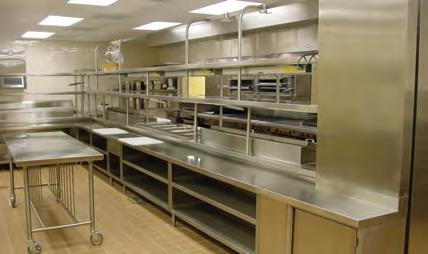



D.E.I. creates country club equipment designs that surpass the requirements of the individual client. From design to completion, every club equipment project entrusted to D.E.I. receives personal guidance from a principal of the corporation. Contact Jose Poleo VP for your free consultation!


“If you come to a fork in the road, take it,” espoused Yoga Berra, that legendary New York Yankees catcher of oh, so many years ago.
And that’s precisely what’s happened with Michael Block, the PGA Head Professional at Arroyo Trabuco Golf Club in Mission Viejo, CA. He has always wanted golf to be part of his life.
“There’s no way in the world I was going to be sitting in an office wearing a tie and being miserable. I’ve had a passion for the game and have bled golf since I was four, growing up in a small town outside Davenport, Iowa,” Block related recently.
“My family had been fortunate enough to join The Rock Island Arsenal Golf Club, which became my home away from home each summer. I wasn’t allowed to go play with my dad because of my young age, so I’d sit on the range and hit a bucket of balls with each club in my bag. I could hit balls all day and never want to stop!”
“This has given me opportunities I never would have believed possible. As a class A member I’ve been fortunate enough to play in six PGA Tour events along with the 2014 PGA Championship at Valhalla.”
And as a class A member Block played in the 2015 Professional National Championship, an event he won in 2014. For him that success has been huge.

“By winning the PNC in 2014, I was able to not only play in seven tour events, but it also allowed me to have enough money for a down payment to buy a house. The PGA of America has allowed for me to live a life I could only have dreamed of growing up.”
As with any career, finding the balance in a person’s life is always present, and that rings true for Michael Block.
“You need to have an incredibly supportive family and work environment in order to be able to play at a high level, run a club and teach all while being a supportive husband and raising two your boys,” Block espoused.
Influencers and mentors often play a huge role in our lives and it hasn’t been any different for Block.
“My parents were the first driving force that started me in the game and always supported my decisions. Without them I have no idea where I would be today,” he explained. “But I also need to give my wife Val a huge amount of credit for standing by my side and allowing for me to basically have three jobs (Head pro – teaching pro and playing pro).
“But Hank Stuckart, the Head PGA Professional at The Rock Island Arsenal Golf Club and my first mentor has been a huge part of growing my love for the game. I really looked up to him and he made being a club professional look like the life I would really enjoy.”
There are several different career paths today…playing, teaching, and administration available to PGA professionals. So did Michael Block go down any different paths before making a decision?
“Absolutely not!” Block exclaimed. “I’ve now been a club professional for 16 years and have only worked at two different clubs (The Lakes Country Club in Palm Desert, CA and at my current position here at Arroyo Trabuco Golf Club). I still can’t believe that golf is in my life on a daily basis.”
Certainly Block’s relationships as PGA member have helped along the way.
“My wife is fully on board with me being at either work or playing in a golf tournament almost every day of the week. Even our family vacations are almost always dictated by where a tournament is being held.
“You want to give 100 percent to each part of your life, but in reality you need to use time management skills that will help you maximize every amount of time you have to spend in each aspect of your life,” he cautioned.
So what suggestions does Block, who has worked at both private equity and public daily fee courses, pass along to others who have an interest in a PGA playing or teaching career?
“Find a golf club that wants and supports you as a teaching and playing PGA Professional,” he explained.
“You will need to work your way into a position such as this. Don’t just expect to be able to start working at a club and instantly being able to just teach and play. It can’t just be a one-way street where you just teach and play, you need to be an asset to the club and give the club and its members what they deserve for allowing you to have such a great job.
“The main fact is you need to find a club that fits your beliefs and personality. It’s the only way that you will enjoy going to work every day, and that’s exactly what will make you a successful PGA Professional.” BR
For what is likely the first time in history, there are five generations in our current workforce.
Additionally, recent economic upheaval along with an increased departure from the standard business model have turned traditional age dynamics upside down and integrated the generations.
No longer is there always a visible hierarchy of the most seasoned employees on the top while the newly minted graduates pay their dues at the bottom. Instead, it’s not unusual to see 20-year olds sharing responsibilities with 55-year olds and 30-year olds supervising their 60-year old counterparts.
Each generations brings with it particular characteristics that display measurable behavior preferences and strengths. To understand these preferences and take advantage of these strengths, you must first be familiar with them. Before discussing the fifth generation now entering the workforce let’s review the four generations you have likely heard of previously.
• The Silent Generation (born before 1946): People are disciplined rule-followers who respect authority and rarely question instructions. They prefer formal communications, such as memos or one-on-one conversations. They may struggle with new technologies but are extremely loyal to their company.
• The Baby Boomers (born between 1946 and 1964): Boomers are hardworking and will do whatever it takes to finish the job, including giving up personal time, if needed. They may question some instructions but ultimately respect the power structure. They crave public recognition and their competitive nature will push them to climb the career ladder within the organization to which they’re loyal.
• Generation X (born between 1965 and 1980): Gen Xers are self-reliant skeptics who want a healthy balance of work and play. They choose their employer based on their desire to gain useful and marketable skills. They prefer to think outside the box, to achieve the most effi-
ciency. Xers are loyal to their career goals as opposed to a particular organization.
• Millennials (born between 1981 and 1995): These people are multitaskers who prefer to work against a deadline rather than a schedule because it allows them to structure their tasks to their liking rather than following someone else’s pattern. This tolerant generation does not mind mixing their personal and professional life and their proficiency in technology allows them to do so seamlessly. Millennials are loyal to people, particularly those they work closely with such as coworkers or mentors.
Now it’s time to introduce you to the up and coming cohort - Generation Z (born 1995 to present). They are tech-savvy and have had lifelong access to things like the Internet, cell phones, instant messaging, texting and tablets. Early projections show they’re independent, entrepreneurial realists but their ability to quickly access almost a limitless amount of information has stunted their development of critical thinking and good problem solving skills (why bother thinking through a problem when you can just Google the answer?)
Surveys into their workplace interests show that Gen Z is less likely to want a fast-paced work environment or enjoy multi-tasking.
To best engage Gen Z provide them with clearly structured job descriptions and, when possible, flexibility in their workspace and hours. Contrary to their technology driven lives, reports on Gen Z show they favor personal communication with their managers in the form of coaching or mentorship rather than micromanaging or control. Finally, be prepared for turnover as Gen Z’s workplace surveys responses indicate they expect to remain with an organization an average of five years or less. BR
Kaleena Weaver is a human resource manager and assistant general counsel, Modern Business Associates and can be reached at (727) 563-1500 or KaleenaW@mbahro.com


After several years of trimming at the edges and avoiding the inevitable, the leadership at North Ranch Country Club came to the realization that the area would never again see water in plentiful supply to maintain 175 acres of turf on its 27-hole private golf facility.
The cost was too great, and the choice to continue to use the current water allocation wasn’t feasible for the upscale golf facility 30 miles north of Los Angeles,
So, when the historic California drought conditions hit this summer and the Metropolitan Water District (MDW) of Southern California doubled its incentive program for turf removal to $2 per square foot, North Ranch Golf Course Superintendent Ryan Bentley took off the gloves.

He showed the club’s board that it was worth moving on a dramatic 35-plus-acre turf removal program, saving the club $500,000 annually within five years, after counting the initial costs and the rebate.
“North Ranch is on the front end of this and it is one of the largest projects of its kind in the state. But it’s also about being the leader in our community,” said Bentley, who has been a member of the Golf Course Superintendents Association of America (GCSAA) for 11 years. “Everyone has seen what we are doing, but every club in this area is reevaluating how much turf they need to keep in play.”
Requests for turf removal rebates since the start of 2014 have nearly doubled. The rebate program calls for California-friendly plants and drought-tolerant landscaping to fill in where turf has been removed.
“The tremendous public response clearly demonstrates that Southern California residents and businesses are enthusiastically answering the statewide mandate to lower water demands in this difficult drought,” said MWD board Chairman Randy Record.
Southern California has had less than average rainfall in each of the past three years. Presently, the U.S. drought monitor website classifies 80 percent of the state to be in extreme drought and 55 percent of the state to be in
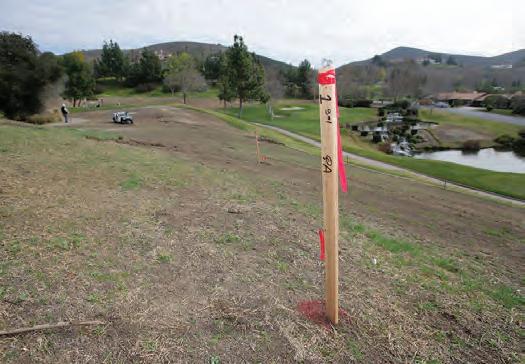
exceptional drought. Not surprisingly, the state has mandated a water reduction of at least 20 percent for everyone by the year 2020.
“We had done all that we could do, and it was time to take a fresh approach,” said Bentley of the project, which is being handled by Jackson Kahn Golf Course Design and is scheduled for completion by summer 2015.
The upscale private club overhauled its irrigation system in 2005, and since 2007 has been working on small turf
There are four important research steps that must be taken before rebuilding golf course greens.
In recent months while visiting seven different golf courses considering rebuilding greens, the parties realized a few basic questions needed to be answered before a knowledgeable decision could be made: 1) to justify the rebuilding process and 2) to what extent the greens needed to be rebuilt.
If weak stressed turf on the existing greens is the reason for rebuilding greens, than it’s important to find out why these particular greens have weak, stressed turf.
The first step means a complete physical analysis of the greens mix and gravel layer is required.
The second step is to confirm that the drainage system is functioning effectively and to determine where the drainage water drains.
The third step is to determine if the existing turf is the proper turf for that geographical area.
ed to include four-ways with slide valves on all of the drainage outfalls/low exit areas. Vents should be installed on the main trunk lines.
Every drain tile that approaches or exits off the green in a high/elevated area of the green should also be vented.
It has been a not-too-uncommon practice in the past to build new greens on top of the old drainage system in order to save a few dollars. This process starts by removing all of the old greens’ mix down to the drain tiles.
Soil is then brought in and compacted to form a new floor base for the new greens. There is some risk in this method. When using this accepted rebuild process, if the new sub-base ever becomes porous and allows water to penetrate into the old drainage tile system it will result in anaerobic conditions, which will produce unwanted and in most cases lethal amounts of sewer gas (hydrogen sulfide, methane and CO2).
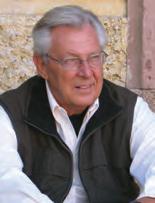
once a thorough investigation has been completed, a decision on whether or not to rebuild completely can be made. This means deciding whether the existing greens down to and including the old drainage system should be removed or whether the top two or three inches of existing root zone only should be removed.
The fourth step is to determine if the greens have been rebuilt previously and therefore, if the existing greens are sitting on top of any previous drainage systems.
Once a thorough investigation has been completed, a decision on whether or not to rebuild completely can be made. This means deciding whether the existing greens down to and including the old drainage system should be removed or whether the top two or three inches of existing root zone only should be removed.
While the course is closed for the rebuild and regrassing, the drain system should be upgrad-
I cannot stress strongly enough the need to find the cause of a green’s present weak and/or stressed turf, because in most cases greens that are being considered for rebuild do not need to be rebuilt. BR
Dave Doherty is CEO and founder of the International Sports Turf Research Center, Inc. (ISTRC) and holds three patents regarding the testing of sand and soilbased greens. He can be reached at (913) 7066635 or via email: daveistrc@hotmail.com www.davedohertyistrc.com

There are many reasons for golf courses to take a good hard look at their turf and landscape and see how it fits in with the current economy and water issues across the country.
Since 2007 we have a different economy. Undoubtedly it has affected how we do our business and how we manage and maintain our golf courses. Water, once thought of as only an issue, is now becoming more important throughout the U.S.
Whether you call the economic a deep recession or an adjustment the results were the same. Golf was impacted in a variety of ways. Golf course maintenance budgets were cut by as much as 40 percent and much needed equipment replacement was deferred, as well as infrastructure repairs. It had to be done for many golf courses to survive.
Golf course superintendents are very ingenious and given a challenge they usually find a way to solve the problems. In recent years
While water usage is reduced, golf courses should not think that going to drought tolerant plants will reduce maintenance costs. These areas still need to be kept weed free and there is maintenance on the irrigation heads and emitters. Plants also have to be pruned occasionally and deadheaded after flowering.
superintendents have held equipment together with baling wire and duct tape. Staffing has been cut significantly and new ways of doing business have been developed.
Even with proper adjustments golf courses had to look at long-term strategies to maintain their golf courses at a lower cost. A part of that
strategy has been to reduce the number of acres previously been maintained as turf. At first the change of turf to either native areas or low usage landscape was slow, because other factors had to come into play for there to be compelling reasons to move in that direction.
While many think drought is the main issue with water, it is actually only one of the issues. In arid states it is surely a concern. But when we look at states like Florida we must also consider water quality and statewide water management.
Water is a resource that is highly regulated and must be managed for environmental reasons as well as cost consideration. Few places can take it for granted that there is plenty of water available and that cost will never be an issue.
Dave Fleming, during his 50 years in the industry has seen a lot of change. A long time golf course superintendent who is also president of Golf Properties Design in San Diego, Dave has been quite busy working with his clients on design and installation of turf reduction areas (drought tolerant landscape planning).
In addition he’s been working on Master Plans for golf course resorts, and designing residential golf course projects and renovations.
In Dave’s backyard there have been regulations enacted that require as much as 25 percent reduction of water usage on golf courses. Only so much can be reduced to the main playing surfaces, but so many golf courses have areas that are out of play that can easily be converted to drought tolerant landscape plants. Having learned to do more with less and being an ingenious former superintendent he now has two such projects completed, another one in process, and five more under contract. It looks like this work will continue for quite some time.
Agencies like the Metropolitan Water District have worked well with the golf community to provide rebates for areas converted to drought tolerant plants. Rebates range from $1 to $3 per square ft. In most cases it’s enough to pay for the conversion and will result in meeting the water reduction requirement set forth by California’s governor.
When designing these areas Dave said, “I focus on removing turf from low play and no play areas…around and behind the teeing grounds, and the travel paths from greens to the following tees, etc.
“Plant density is the key, low density planting in potential landing areas and high density planning in out of play areas. It’s an opportunity to beautify the golf course for years to come while reducing the water footprint,” he explained.
Fleming uses drought tolerant plants suited for each region. He likes to add seasonal color and accent to the landscape. His choices for covering the ground in those areas are manufactured sand, gorilla hair and wood chips. Cost and availability should be taken into consideration and alternative materials such as pine straw can be used where they are more prevalent and fit the region.
He also uses both low precipitation irrigation heads with an overhead spray and underground emitter tubing. Through the use of these, the acreage that was for-
from GCSAA | 80
removal projects and even converted to a bermudagrass that needed less water.
The club also largely uses recycled and reclaimed water for its irrigation, pulling precious little from the municipal water supply. But, it still wasn’t enough. Since 2005, the cost of water has climbed annually from $400,000 to about $1.5 million. And costs will continue to rise.
“This is a once-in-a-lifetime project,” said Graham Lebowitz, North Ranch general manager. “This is not just about current members, but about how we make sure that North Ranch is here 100 years from now. It’s about sustainability and looking to the future.”
The club, which was opened in 1974, currently has about 600 golf members, including some well-known athletes and Hollywood celebrities.
merly irrigated with standard turf sprinklers is cut back significantly.
While water usage is reduced, golf courses should not think that going to drought tolerant plants will reduce maintenance costs. These areas still need to be kept weed free and there is maintenance on the irrigation heads and emitters. Plants also have to be pruned occasionally and deadheaded after flowering.
Ultimately Dave feels strongly that “true native drought tolerant plants when once established (in three to five years) would require 80 percent less water than golf turf.”
Hence the economy dictates less turf to manage.
Environmental stewardship by golf course superintendents lends itself to turf reduction.
And finally government regulations will not only be suggestive but the law. It looks like Dave Fleming and the industry are at the cutting edge of a current and future trend! BR
Bruce R. Williams, CGCS is the principal of Bruce Williams Golf Consulting as well as Executive Golf Search, which specializes in headhunting for golf course superintendents and industry positions (www.EGSinc.net). Bruce may be contacted at Bruce@WilliamsGolfConsulting.com or (310) 991-9176.
Other clubs in the area are in step as well. For example, Brookside Golf Club in Pasadena, a 36-hole municipal facility, has removed 22 acres of turf and Glendora Country Club is just starting to remove approximately 25 acres of turf.

“The golf industry has heard the message for some time now, and we are doing everything we can to be leaders in the area of water conser-
vation and sustainability,” said Rhett Evans, CEO of GCSAA. “It is not enough to say that the golf industry consumes less than one-half of one percent of the estimated water use in this country. We are all in this together.”
The rebate program and the turf removal projects in the area have combined to show a 25 percent drop in water use since 1990, according to the Metropolitan Water District, a cooperative of 26 cities and water agencies serving nearly 19 million people in six counties.
“This year, we especially needed the public to continue its remarkable water-saving efforts to help maintain our stored reserves in case the drought carries on,” said Jeffrey Kightlinger, MWD general manager. “We have to make conservation and efficient water use a permanent part of life in Southern California.” BR

All clubs have some type of computer-based accounting system.
These systems have all the standard modules, such as general ledger, accounts receivable, accounts payable and perhaps many others. But few, if any have a food and beverage module.
The easy way to tell if the accounting system is lacking in this area is to simply count up the number of spreadsheets and paper forms utilized by the F&B and accounting staff to collect and report relevant data.
Assuming that the average club’s F&B revenues represent 30 percent of the club’s total business, this hole in the accounting system means that 30 percent of the club’s business is lacking the control and efficiency of the other 70 percent served by the accounting system.
So why don’t accounting systems adequately cover the F&B operation? The reason is simple. Food and beverage accounting is so specialized that it requires as much or more programming code than the amount of code required for the entire accounting system!
Unlike typical goods and services accounting, food and beverage is actually more like manufacturing accounting. And unlike typical manufacturing accounting systems, food and beverage items continually change yields and costs.
New products are created daily and people are given choices of subcomponents like salad dressing or sides. Some items are just given away like condiments, bread, butter and other various items provided to all guest as part of the meal experience. And of course, we have not even begun to deal with the complexity of a buffet from an accounting perspective.
Handling food and beverage procurement, inventory and culinary control is so specialized and complex that the companies who are already selling software to the club industry shy away from it. It is difficult to implement, train
and maintain this type of system – especially if the cost has to be kept in line with the rest of the system they are selling.
This is true of club accounting systems, POS systems, procurement systems and catering systems. If the functions are offered at all, they tend to be very simple, are offered at little or no additional cost and have no associated implementation from the provider. They do this to be able to say they have the capability, without being held responsible for the success of the module.
Over my 35 years of plugging that hole in the accounting system, I’ve seen numerous POS and accounting system developers try to provide the capability. Some went so far as to purchase other software developers who had an F&B system already developed and on the market. But almost without exception, they fail…for a number of reasons.
Perhaps the biggest reason is their lack of expertise in the area. Very few people have the experience implementing F&B systems in complex environments.
Even with the best software, attempts to implement by people without adequate experience will fail.
And if that is not enough, consider the other reasons. F&B software is expensive to produce and maintain, therefore requiring a significant retail price in order to be profitable. This price might even need to be higher than that of the accounting or POS system.
Few, if any of these companies would be willing to price it that way, thereby setting themselves up for losses.
Only the companies who specialize exclusively in F&B software seem to be able to pull it off. And there are very few of those. Many are not complete solutions. Some focus on procurement, some on recipes, some on catering and some on nutrition. Very few integrate to the
existing accounting, POS, catering and vendor ordering systems in place. In other words, many leave part of the hole in the accounting system unfilled, and while making progress, still requiring supplemental spreadsheets and manual tasks.
To truly fill the hole, the first requirement is that it be integrated into the accounting system itself. The idea is to complete the accounting system, not to replace a separate set of forms and spreadsheets with another standalone approach.
At the very least, the F&B system needs to integrate with the accounts payable side of the accounting system, to avoid duplicate invoice entry. It should also be integrated with the POS system to pull sales mix data in order to determine menu performance and ideal food and beverage usage and variances.
It should allow vendors to post bids in the system and to receive purchase orders electronically. And it should integrate with the catering system if it does not have one of its own.
If that’s not enough, lately the government has become more involved in regulating the availability of nutritional information to consumers – even with foods produced by restaurants.
New laws are starting to make it important to have F&B systems integrate with the USDA database to provide nutritional and allergen information. And that’s just the integration part.
Once that’s handled, the rest is just the basic F&B functionality like requisitions and transfers, inventory, purchasing, receiving, recipe construction and costing, menu analysis, usage and variance tracking, fabrication, production planning, central storage or warehouse control, profit center-level reporting, transfer costing, cost of goods calculation, and many other functions that play into making the system complete and capable.
On a less basic level, there might need to be the capability to handle purchase contract compliance, purchase authorization routing, direct delivery and user security controls to name a few.
Finally there is the technology issue. The world is moving quickly toward mobile computing. The days of using forms to collect data and entering that data on a desktop computer are numbered.
F&B systems should embrace the mobile model by providing the capability to use scanners, pads and cell phones where appropriate.
The other major technology trend is the move away from local computing to cloud computing. Utilizing the software on a hosted system seems by far to be the preferred approach for our clients, and it looks like almost every-
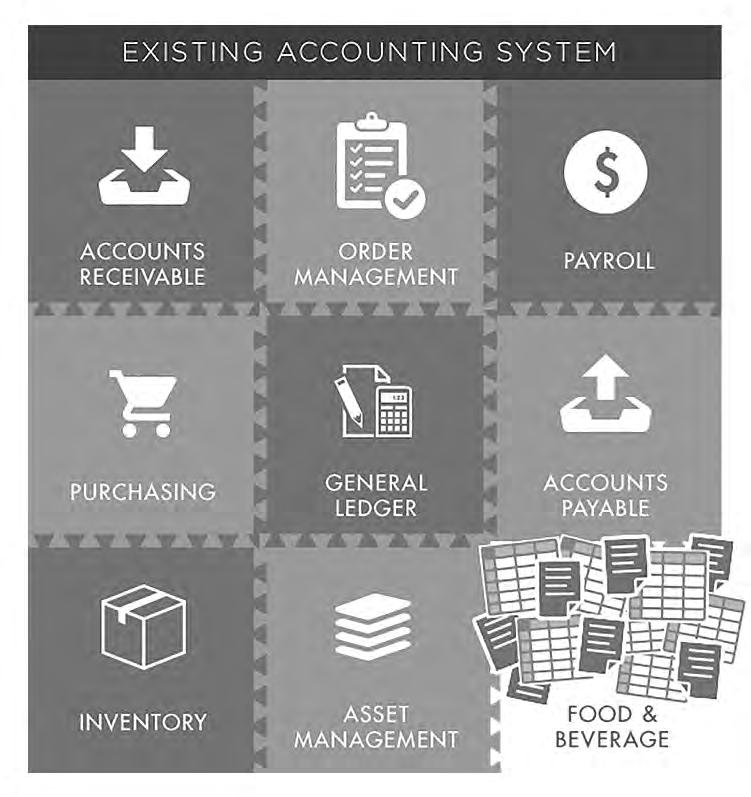
thing we used to do on our desktops is now available in the cloud, where we don’t worry about hardware or software maintenance, backups, connectivity, security or device obsolescence.
So what does this hole in the accounting system cost? For most clubs, the loss of detailed accountability represents anywhere from three to eight percent of F&B revenues. For the $1 million F&B operation that translates to between $30,000 and $80,000 in lost cash, which is far more than filling the hole would cost.
Hosted systems keep the costs even lower, since there is no software or computer equipment to buy.
But even if you didn’t believe the loss to be that high, think about the hole in the accounting system. If you had a choice between an accounting system that could handle your entire business, and one that leaves 30 percent of it unprotected at a lower cost, which would you choose?
Since the complete system didn’t exist, you had no choice but to choose the latter. So here is the question that needs to be answered. If there’s now a way to complete that system with a fully-integrated, specialized F&B module, would you be willing to pay the difference to fill that hole? BR
Bill Schwartz is the founder and CEO of System Concepts, Inc. (SCI). Based in Scottsdale Arizona, SCI is a food and beverage procurement and inventory management consulting firm and the developer of the FOOD-TRAK System, which is widely used in club operations around the country. Bill can be reached at (480) 951-8011 or bills@foodtrak.com

gRegg PATTeRson
October is review time for the general manager here at The Beach Club. These annual reviews are thematic and strategically focused – that is, the board and I address The Big Issues (like, what’s The Why of The Beach Club, and are you, the GM managing to The Why???), and support our conclusions with anecdotal details.
Every year I create a new This-Year-In-Review template to guide my reflecting (and to keep the novelty up after 33 years as GM!!). Then I write up 15 or so pages of critique, ship it to the board for comment, schedule a meeting with the manager review committee (four board members – the three “graduating” directors and the incoming president), and then meet on a quiet Sunday morning at The Club for “caffeine and conversation” to discuss, often for hours, life’s great issues.
The process “works” because it requires advance preparation by the board and me, and guides the conversation once we gather. It makes the entire “annual review process” interactive, alignment focused, productive and fun.
Good stuff.
This year’s review template consisted of a single question: “What are the criteria you The Manager use to evaluate YOU as the GM?” After a bit of pondering, I came up with my list of the BIGS – the “Nifty Nineteen”, I’d use to evaluate ME on Judgment Day. I anticipated that the fun part of the exercise would be comparing my list of THE BIGS with the board’s, determining if our BIGS were in alignment and seeing if their scores for each of my BIGS differed from my own.
Here are my Nifty Nineteen – my BIGS – and the questions I used to determine my score for each of the nineteen:
1. Big Happy. Is it obvious to all who meet this character that he or she has The Happy
Gene? Do they look happy, talk happy and act happy? Do they rebound to happy after getting punched around by life? Do they have a “powerfully positive personality?”
Score…………..
2. Big Hospitality. Do they absolutely LOVE doing stuff for others whether those others be busboys, film stars or the club president? Do they exude warmth and joy and enthusiasm when encountering others during a “service opportunity?” Are they a living, breathing, walking, talking example of “the hospitality spirit” in action???
Score…………..
3. Big Love. Do they exude a love of the club business, the type of club they’re at and the members and staff they encounter each day?
Score…………..
4. Big Buzz. Are they filled with an irrepressible energy, with The Buzz? Do they deliver an “energy injection” to others? Does their energy inspire and motivate? Is their enthusiasm infectious?
Score…………..
5. Big Technical. Does the GM have a “deep generalist’s” understanding of the tools of the trade – food and beverage, golf, facility management, government relations, insurance, etc.etc.? Do they know how to read a financial statement, evaluate food, conduct an inventory, read an electrical diagram, negotiate a bank loan?
Score…………..
6. Big Analytical. Can they break problems into their component pieces, analyze those pieces, draw a conclusion from the pieces they’ve analyzed, articulate their conclusion, defend the conclusion and modify their conclusion when their argument falls short?
Score…………..
7. Big Creative. Once they know what the problems are, can they find solutions to those problems that are fresh, unique, unusual, outside-the-box and effective?
Score…………..
8. Big Do-er. Do they make things happen? Do they translate vision into action? Do they have a track record of successfully doing?
Score…………..
9. Big Curiosity. Are they interested in everything and everyone? Are they always asking “why”? Are they a sponge for new ideas? Are they endlessly seeking the next new thing?
Score…………..
10. Big Facilitation. Do they create opportunities for connecting and communicating? Do they get people talking? Do they keep the talkers “talking?”
Score…………..
11. Big Interesting. Do people gravitate to them and engage them in conversation? Are they well-read and welltraveled? Do they have enthusiasm for lots of different things? Do they have a magnet personality?
Score…………..
12. Big Reflector. Do they “do” and then think deeply about what they’ve done? Do they assess honestly what happened and why, and determined how to do it right in the future? And because they reflect lots, have they “grown” as a professional over time?
Score…………..
13. Big Parable-izer. Do they see in every story a parable expressive of deeper truths? Do they see “the profound in the ordinary?” Do they see life principles in the stories they hear? Are they a great storyteller? Do people sit and listen, and learn from those stories?
Score…………..
14. Big Community-izer. Do they build “the three communities” – member, staff and member/staff? Do they create programs, opportunities and rituals that create “tribal magic?” Are they the catalyst for generating, sustaining and amplifying relationships and community?
Score…………..
15. Big Communicator. Do they speak well? Listen well? Write well? Use their “body language” well? Are they clear in their messaging? Do they provide emphasis where needed, nuance as necessary, subtlety when the light touch is required? Do they communicate lots, early, and repeat what’s told – often?
Score…………..
16. Big Advocate. Does the manager know The Why of this club and do they believe in that Why, passionately? Are they a loud, vocal and compelling advocate of The Club and Its Why? Are they the biggest trumpet for the board, its policies and board members’ decisions?
Score…………..
17. Big Nudge. Can they influence those who make decision – whether those “deciders” be board members or busboys – to make decisions consistent with their vision of The Good?
Score…………..
18. Big Coach-Mentor. Can they coach, that is, direct others to “do the right thing?” Can they mentor, that is, provide insight and advice to others who are making tough decisions?
Score…………..
19. And, The Biggest of The Biggies – Big Leader. Does the person know how to audit The Now? Do they know where There is? Do they know Who should be on the team to get the club from Here to There? Do they have The Tactics for translating vision into action? Do they have The Inspirational Buzz?
Score…………..
My Biggies – The Nifty Nineteen.
RESPONSE
I shipped my review to the board, priming them for our meeting.
We assembled in the boardroom on a Sunday morning over eggs benedict, cinnamon rolls, juice and caffeine. We talked lots – about my Nifty Nineteen and the successes and failures I’ve had over the years giving substance to The BIGS.
We discussed whether my BIGS, my “criteria-for-judgment”, were in alignment with their own, and if “yes”, how so, and if “no” how so, and if “no” how could we tweak my performance to bring the two of us into alignment.
We agreed that my criteria were consistent with their own – differently expressed, but consistent. And that I scored “good.”
We were aligned. And happy. Get BIG
Ask yourself: What are the criteria you use to judge Me?
Ask your board: What are the criteria they use to judge ME as the GM?
If the criteria are out of sync, get aligned. Or exit. And if they’re “in sync,” ask for a raise.
And enjoy the journey—- BR
Gregg Patterson is general manager of the Beach Club of Santa Monica and a regular contributor to BoardRoom magazine.

With a hot cup of coffee in hand, I surveyed the stack of cards and envelopes in front of me, preparing to embark on a lengthy project that I’ve repeated every year – sending handwritten thank-you notes to each participant of our Annual Founder’s Dinner.
The Founder’s Dinner is our club’s only fundraising event. We charge $500 for an exquisite dinner, provide mediocre entertainment and the members are expected to bring their own wine.
Somehow it works. This year with 158 participants we raised a fair amount of money for our capital fund.
Writing the notes always proves an arduous task. I’ve long gotten over the legibility of my handwriting, and use a large printed template to ensure my words do not drift into unintended territory.
About two hours in and 30 cards deep, my hand began to ache, when my iPhone chimed announcing a text message. I took a sip of my now cold coffee and read: “Hey! This is Chris with Click Wholesale. I hope you had a great weekend! Just looking to see if you needed to place an order this week? Please let me know. Thank you, Chris.”
Gazing at the stacks of cards, along with the technology that had delivered this message, there was an apparent contrast in the two methods of communication.
Thomas Friedman’s book, “The Lexus and the Olive Tree” came to mind. On one hand new technology is making our lives easier and helping us to better communicate with our members. On the other is my desire to retain my identity and personalized touch I have with our membership.
We use iPhones around the club and I am rather proficient at texting the staff when there is a need for improvement. We also use Outlook for our reservations, which allows everyone to receive timely updates on their phones.
But we are selective when and where we use these tools and consider our members first –especially when it comes to our use of electronic media.
Perhaps my time could be invested more wisely by printing the letters on a computer and signing my name; even saving an hour or two more by running the envelopes through the printer. Or I could say “thank you” in an email and blast the contents to the entire group. Much like Chris did in his cultivation of new customers.
However, there is a payoff for my investment of time and the additional effort.
While writing I briefly focus on each member and think about that person. I find a level of appreciation for each one. My efforts are recognized by the kind words I receive from those members thanking me for the handwritten note.
And because the notes are written on a piece of paper, they linger on someone’s desk just a bit longer than an email waiting for the delete button.
After an event at our club I often receive several phone calls. Sometimes the message contains helpful suggestions but usually it is an appreciation for all that everyone did to make the evening a success.
I also receive a few emails from the younger members. Emails have their own benefit in that they are easily forwarded to the staff.
But I relish the handwritten note that our members are in the habit of sending me. I appreciate that they have taken the time to think about my staff and make the added effort. My desk drawer is full – I tend to keep every one.
Over the years I have found that each note I write, as well as each one that I receive, is a measure of our club’s prosperity. BR
Michael Froese, CCM, is general manager of The University Club of Seattle, WA.
He can be reached at (206) 622-1132 or email: michaelf@theuniversityclub.net
What I hear most from member surveys and new member interviews is the need for more fun social events, whether in golf, dining, special events or activities. If you consider your total environment to be 360 degrees, you need to consider where best to apply and allocate your resources to embrace the broadest cross section of your 15-minute drive.
Consider this: Less than 5-10 percent of your market is likely capable of affording membership and only approximately 15 percent of those that can afford membership actually play golf. Now look at the market for social, fitness or aquatics…one hundred percent of the market that can afford membership.
from Bryan Webb | 26
you prepare and execute a well-conceived master plan, will greatly reduce the disturbances and overall expenses. This is a key first step toward a successful upgrade that will sustain and reinforce your club’s membership for generations to come. BR
Bryan. D. Webb is principal, Marsh & Associates, Inc. He can be reached at (720) 266-2582 or via email: bwebb@maiarchitects.com
from Culinary and Catering | 40
What’s hot in food and beverage trends: The food trends right now are fabulous! At the core of it all are a couple of hotties - ingredients, ingredients, ingredients – the freshest and best you can find and keeping the ‘experience” at the forefront. Various food stations, especially interactive ones, lend themselves to this far more than a plated meal and presentation alone can change a whole event from boring to buzzing! Making it happen…chefs and catering directors: Start this creative collaboration today. I guarantee it will ignite
from Technical Perspectives | 42
tence, moving from project to project, never really gaining a feeling of accomplishment. A great percentage of contractors we have spoken with are tired of the routine and are “just looking for a real job”
• From a technology standpoint, private clubs offer plenty of intellectual challenge. The combination of sophisticated software applications, POS devices, operations nuances and, in this case, two separate but nearby sites, virtually guarantees an attractive intellectual challenge that most technology professionals will appreciate.
If your club has 25 or more PCs (including POS stations) and does not have access to at least a part-time technology
The real benefit of looking at your two communities is the ability to form fit your offerings to serve both. As young families grow into income and time, get them into another category of membership. If they’re not golfers, get your pro shop aligned with offering programs to get them to eventually upgrade.
Here’s the bottom line. There is nothing in any club today that cannot be fixed if you understand your two communities and serve them both well. It’s sustainable! BR
Rick Coyne is CEO of the Professional Club Marketing Association. He can be reached via email: rcoyne@clubmark.com
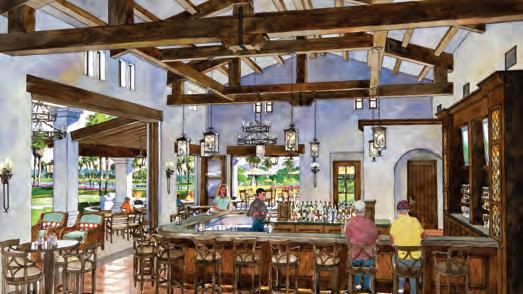
your excitement all over again for this incredibly passionate industry of ours. Ask yourself – Where can we grow? Where can we change? What can we make more exciting? The answers are all around you and inside you. . .
If you missed our webinar – March Menu Madness, not to worry! Webinars are always recorded and available in our library on the ACCP website. BR
Lynne LaFond DeLuca is the executive director of the Association of Club Catering Professionals and a private club industry consultant. You can reach Lynne at Lynne@TheACCP.com, or visit the website www.TheACCP.com.
specialist, we recommend that you consider this approach, and discuss it with neighboring clubs.
You’ll most likely find that they are in the same boat as you, and may be open to putting together a personnel sharing plan that will meet both clubs technology needs –at a much reduced cost! BR
Bill Boothe is president of The Boothe Group, LLC, an independent consulting firm that helps clubs understand computer technology, make good decisions and receive the highest value from their technology investment. During his 25 years in the club industry Bill has assisted more than 350 private clubs with the planning, evaluation, selection and implementation of computer technology in all facets of their operations. Bill can be reached at bboothe@boothegroup.com.
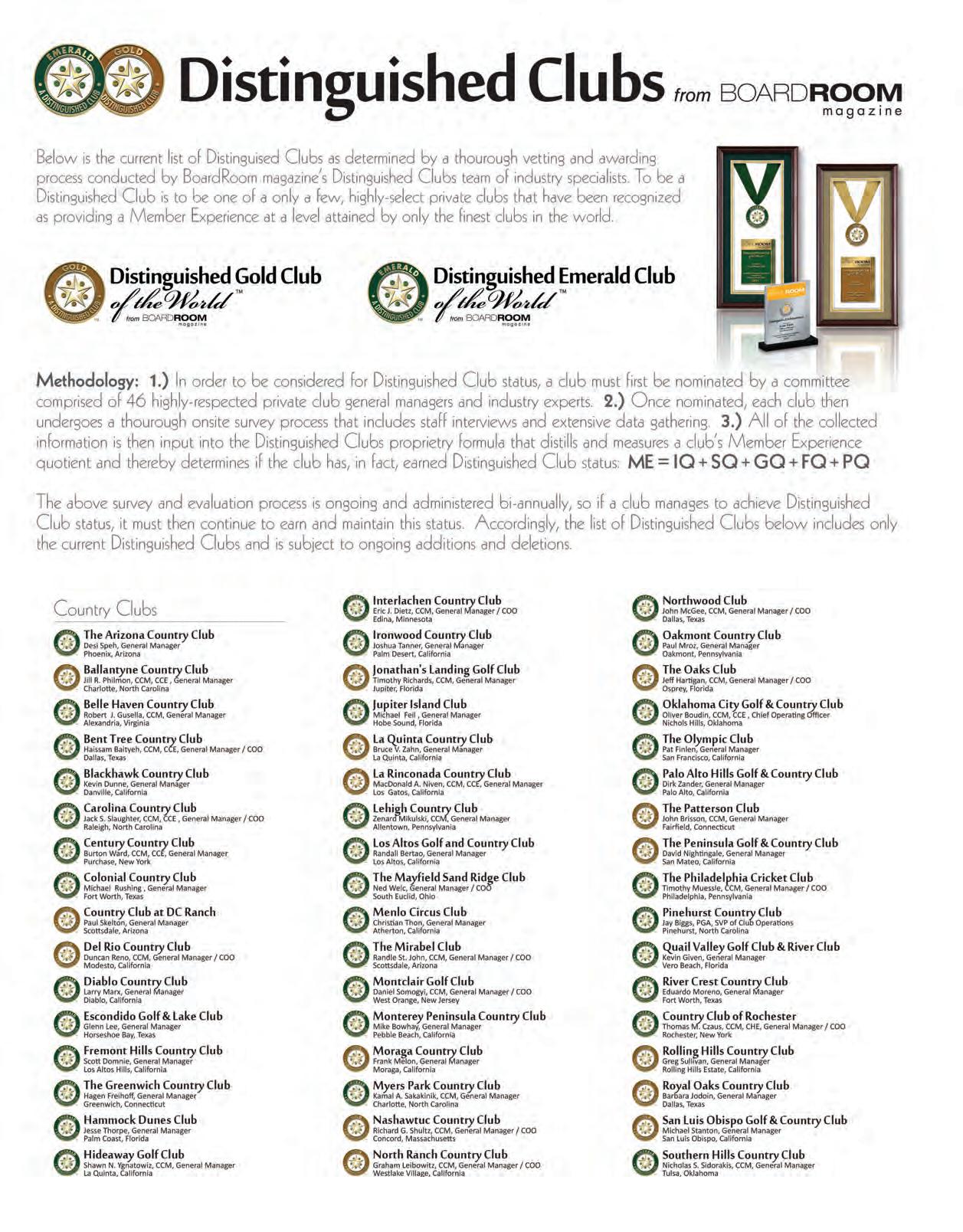
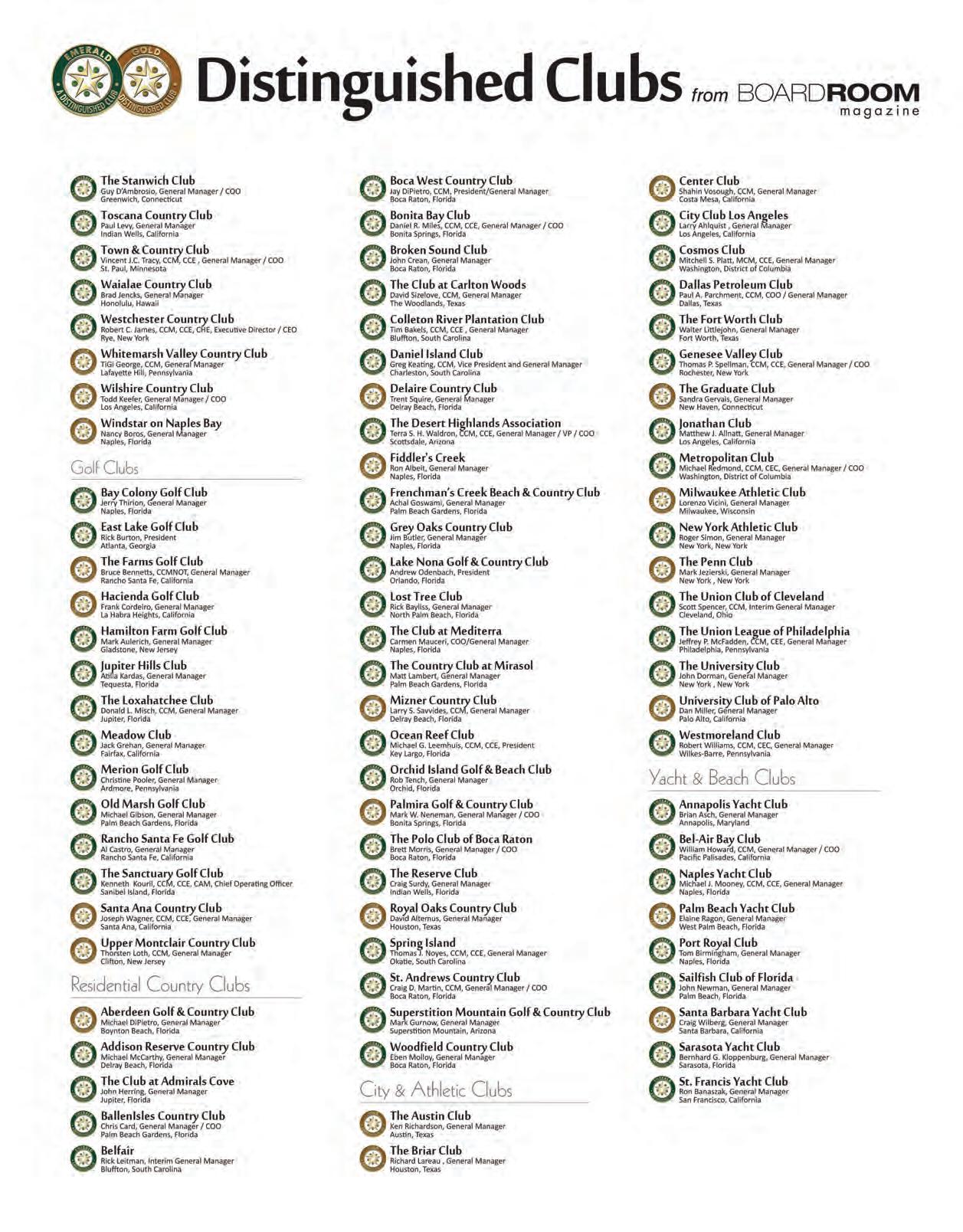
In reality, the program and process is much, much more than that. The top clubs, because they’re the innovators really are helping many lower tiered clubs, and we’re the facilitator.
It’s kind of like the many of the state governments in this country. States have rights and abilities that the federal government doesn’t have. And as a result, they’re incubators for ideas, thoughts and action.
For example Colorado through its legalization of marijuana is a testing ground for many states. What happens in Colorado will be enlightening for other states.
The same can be said of the most outstanding private clubs in the country. The top tiered BoardRoom Distinguished Clubs have the money, the resources and the passion to make their ideas work…they can take a risk. If something doesn’t work, they move on to something else.
That’s what we’re doing! At the Distinguished Ideas Summit, leaders of these top tiered club present ideas that have worked for them, and what it means for their members’ experience. We want others to learn from their experiences, and it’s happening.

Distinguished Ideas Summit is not just an event, but also a different way of learning about what works for private clubs. The Distinguished Clubs (Emerald and Gold) award program aims to vitalize and preserve private clubs by fostering a ceaseless drive to improve the Member Experience offered by private clubs throughout the world.
As we’ve reiterated many times in the past, the mission for BoardRoom’s Distinguished Clubs is to help strengthen the private club industry by recognizing and awarding the top 10 percent of clubs (Distinguished Gold Clubs) and the top five percent (Distinguished Emerald Clubs) for their best practices relating to the club’s Member Experience .
With the Summit, we have to walk the talk. The club leaders are our members…our customers and we have to give them great service and a great member experience like they’ll create for their members. That’s our objective and that’s what we’ve accomplished.
Our Distinguished Ideas Summit is not just about being recognized (for a great members experience), but it also recognized the fact that other clubs take on these proven ideas to enhance the member experience for their own members.
Yes, a club is the home away from home for its members, but is the club capturing its own myths, its own ideas that work for their member experience?
History happens every day at your club, and these are the kinds of things that can contribute to the member experience at your club.
With BoardRoom’s Distinguished Clubs we are working with a very special group of professionals who ‘get it’, and who want to continually learn to enhance their club’s member experience.
As with Banaszak’s comments, other club professionals agree:
Daniel Somogyi, general manager/COO, Montclair Golf Club, West Orange, NJ
Club managers have helped me understand the amount of detail that goes into determining how we are selected and what tools we need to be a successful club. The programs and tools that are provided by BoardRoom magazine helps us to be better at our job… and look at our industry with a more of a “ business eye.”
As they say, “leaders are readers” but leaders are also followers. We learn from each other and use the knowledge to take it back to our own clubs.
Paul M.G. Astbury representing Ocean Reef Club and the Ocean Reef Foundation
I was not sure what to expect from the two days in San Francisco and I want say thank you to you and your team

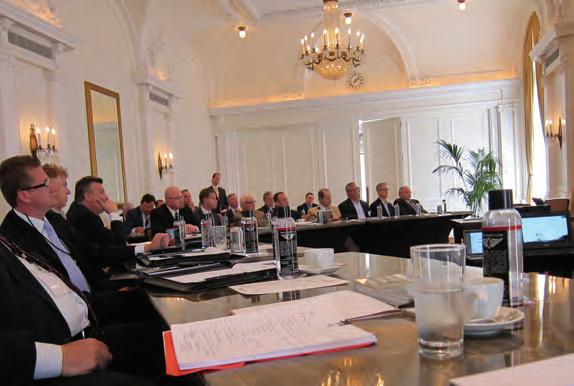

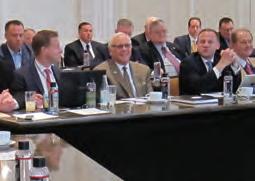
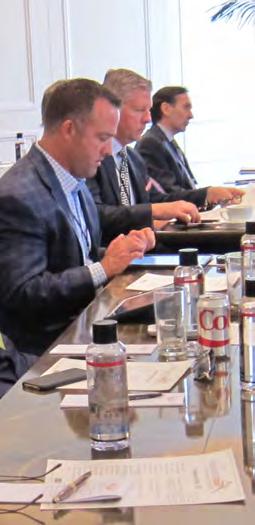
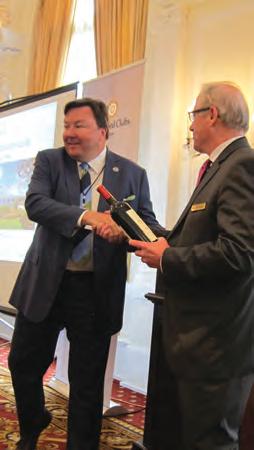
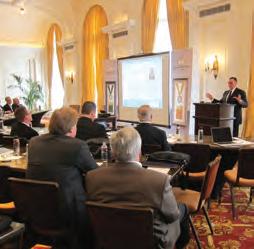
General managers from BoardRoom Distinguished Clubs all over the country participated in the Distinguished Ideas Summit recently. A great exchange of ideas happened during the day-long session at San Francisco’s host, Olympic Club.
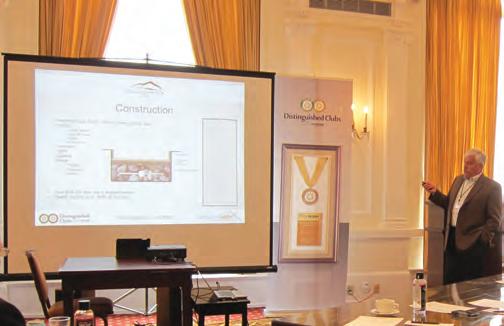
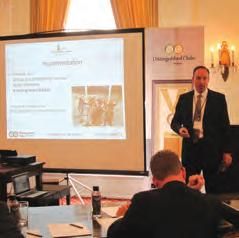
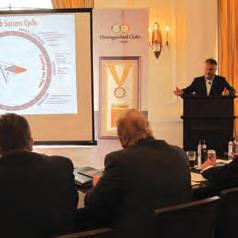
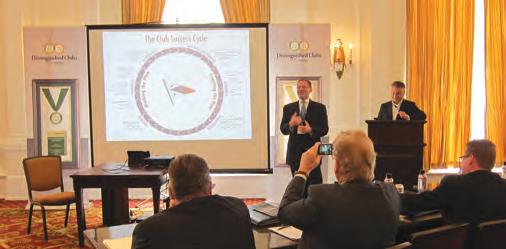

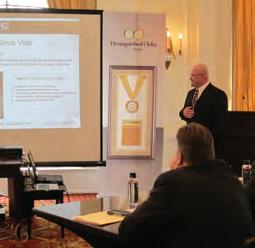
for an informative time and for your sincere effort to promote, educate and improve the knowledge of all those attending.
We can all do with well-planned events like this to give us the much-needed shot in the arm as we go about our daily business dealings.
I never tire of visits to Napa Valley. Thank you for that too. It was interesting to see some wineries going back to first fermentations in concrete vats. Who would have thought it? And, what a great idea of the St. Francis Yacht Club to take a leaf out of the Bohemian Club’s playbook with special dues for entertainers! A great club with a great history.
I thoroughly enjoyed making the presentation on foundations at Ocean Reef Club. There is tremendous potential for clubs to simply copy the success of ORC with little or no effort. I thank you again for a fun and informative two days.”
Thomas J. Noyes, general manager, Spring Island Club, Okatie, SC
At our annual meeting the week before the Distinguished Ideas Summit, I reminded our members of our designation
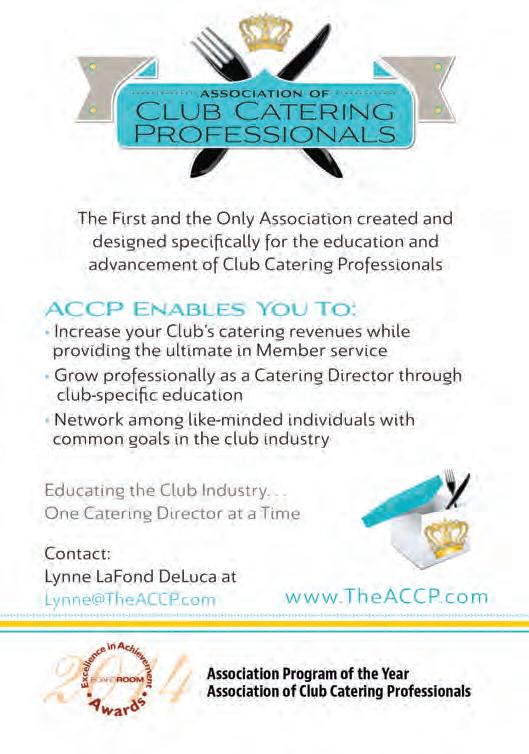
as a BoardRoom Distinguished Emerald Club of the World and the fact that I would be attending the summit.
Our members had a renewed sense of pride at the designation and thrilled to know I would be participating with managers of other distinguished clubs.
This summit provided focused information and, maybe most importantly, we had the chance to ask specific questions about implementation, cost or impact. Now, if we think back to a summit idea, we can just go to that person and their presentation and get the ‘down and dirty’ on how the idea worked for them.
The fact that these ideas all come from Distinguished Clubs just seems to give them a bit of credibility. Not because we don’t love stealing ideas from anybody, anywhere, anytime but that it might just make it a little easier to sell an idea to our committees and boards if it’s something presented at the Distinguished Ideas Summit.
Paul Levy, vice president PGA, general manager and CEO, Toscana Country Club, Las Vegas, Nevada Great event John, It was fun and informative!
Robert Williams, Westmoreland Club, Wilkes-Barre, PA
Thank you for an outstanding conference. Every presenter was excellent! And the networking events were absolutely superb.
Yes, our Distinguished Ideas Summit represents an additional benefit for a BoardRoom Distinguished Club…and for sure, another reason to become a BoardRoom Distinguished Club.
At least, that’s the way I see it.
And by the way, planning has already started for next year’s Distinguished Ideas Summit scheduled for September 19 and 20, 2016 at the Union League Club of Philadelphia with host general manager and COO Jeff McFadden.
It’s an outstanding Distinguished Emerald Club of the World, one of the country’s most historic, founded in 1862, and built to support the Union and policies of Abraham Lincoln.
Save the date for another outstanding BoardRoom Distinguished Ideas Summit and another great time of exchanging ideas for the betterment of your club’s member experience. BR
John G. Fornaro, publisher
If you have comments on this article or suggestions for other topics, please contact John Fornaro at (949) 376-8889 or via email: johnf@apcd.com



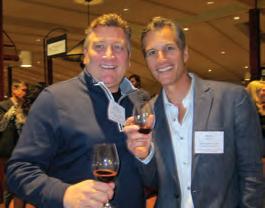
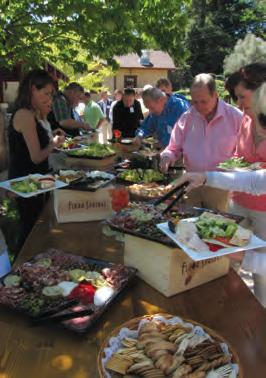
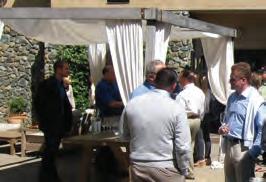
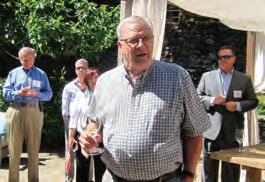
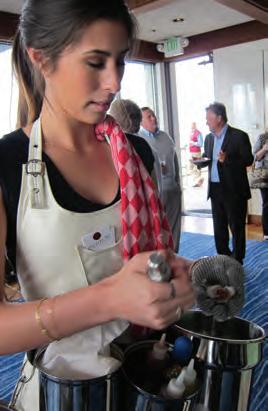
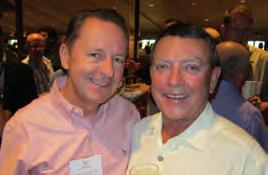


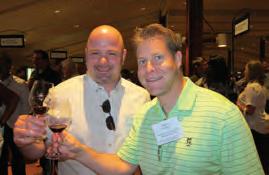
General managers attending BoardRoom’s Distinguished Ideas Summit soaked up the atmosphere at Flora Springs Winery and a “Taste of Oakville” in California’s Napa Valley and enjoyed a memorable evening of dining and entertainment at St. Francis Yacht Club.
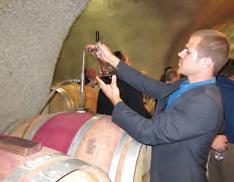



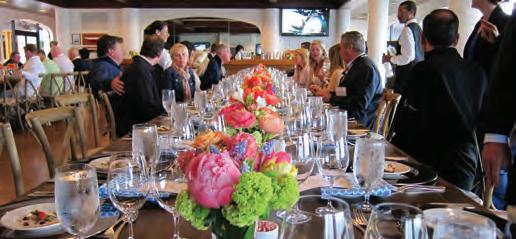

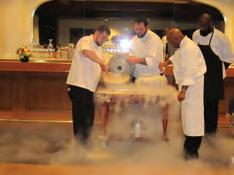
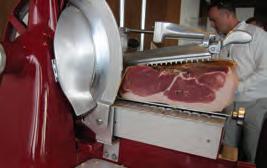
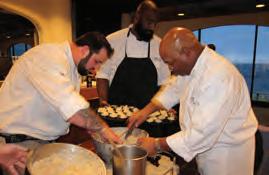
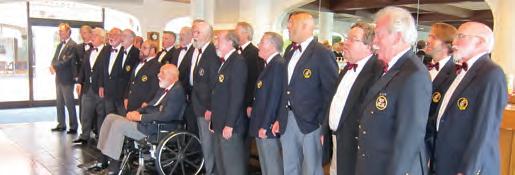

Are you a great motivator? Can you move people? Change people? Eh... maybe, maybe not?
You can’t change others! You can only set an example, help set some goals and hope to inspire those you attempt to lead.
It is never my intention to change others who I try to lead. I try to URGE and hope not to force change, but sometimes there is no time to urge and change is needed as soon as possible.
Most of the time, leading is all about urging. I’ve had the privilege to lead many different people at several places. From the east to the west coast, I’ve had some valuable experiences of how to lead and how to learn.
All of these experiences have included the need to change things. Some things I wanted to change for the betterment of the business, staff or the overall need that was present. Other times, I must admit, I tried to change where change didn’t need to happen.
The most important lessons I learned came from these experiences of failure. Failure is inevitable if you are trying to do a good job at anything. But that has always and will always be my intent - to do a good job.
The most important thing you can do for your leaders in any business is to recognize their great accomplishments. Leading people through change is personal. It is hard. It is usually full of ego and thoughts like “how will this affect me?”
Is it something that has helped the person and organization? Made a leap for the business? If so it’s best to recognize this leap instantly. Most people like to be recognized with others “in-the-know.” The academy awards are a great example of recognition of others for their great ideas and their performances. This certainly makes it clear to ALL peers and the public nationally, of their accomplishment.
Many people, though, like to be recognized quietly – one-on-one or in the small group of leaders on your team. Know who you are recognizing and how before you praise their accomplishments.
Ken Blanchard has written a good book – Gung Ho! – about this attribute. My favorite animal (he uses animals as metaphors for leadership and team styles) of the four he describes is the goose.
The goose, like the flock flying in a V formation, “honks” its team on. They cheer each other, and especially those in the front, to keep on going. The attribute of recognition and cheering each other makes for such a rewarding and enjoyable experience. Whether it’s work or play, being recognized for your hard efforts feels good.
Servant leadership is another attribute of great motivators. No one says it better when you look for explanations of servant leadership than Blanchard, who has also written great books like Raving Fans and the One Minute Manager.
Servant leadership is a “side-by-side” style of leadership. Some people automatically think servant leadership is some sort of subservient type of religion or a lower means to be abused by those they try to lead.
It’s really very easy and is made up of two parts: Leadership and the inverted triangle of leading. The leadership segment is determining the vision, direction and goals in the organization. This can be done by the leader jump-starting the process but certainly involving the toplevel team of the organization in the process.
Once these are clear, it’s really looking at the inverted triangle of leading - the boss at the bottom of the triangle, supporting the middle managers who, in turn, support those who are the line staff but who really serve your customer directly.
Southwest Airlines is a good example of how the system works. Their number one customer is their employees. They look at it simply: Get your employees excited about their work, which will get them to take care of their guests really well, which will keep the customers coming back and keep the investors happy.
Motivate with a humble heart. Servant leadership is all about that. Do your job; help people; care about their career planning. Remember, Leaders don’t think less of themselves, they just think of themselves less. Lead ON! BR
Christopher Boettcher is the GM/COO at Burlingame Country Club near San Francisco, CA and a regular contributor to BoardRoom magazine. He can be reached at chris@boettcher.com
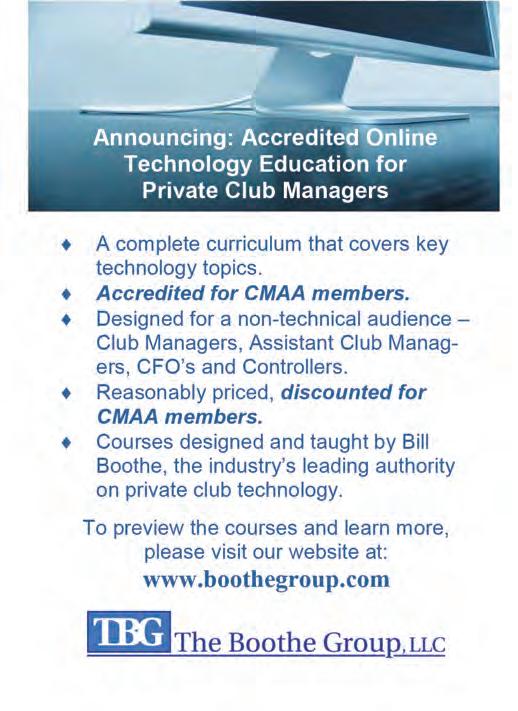
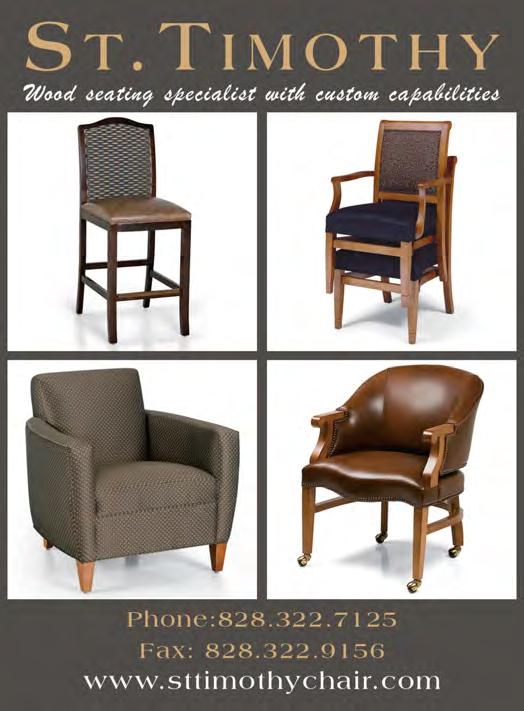


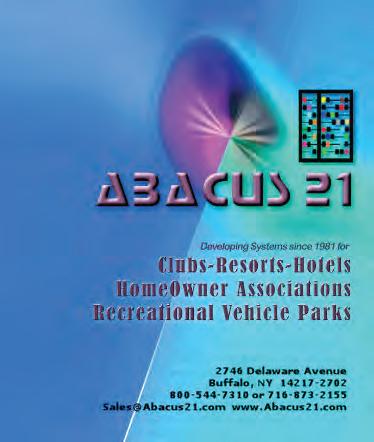



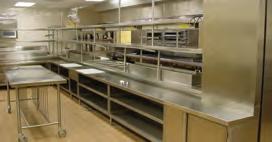

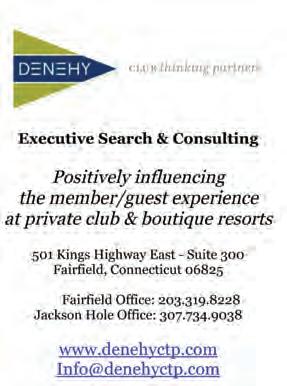
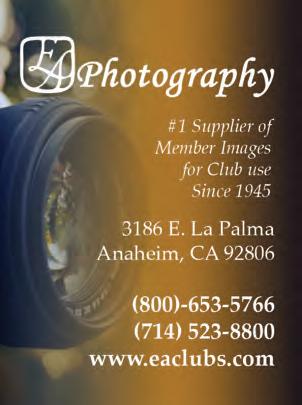











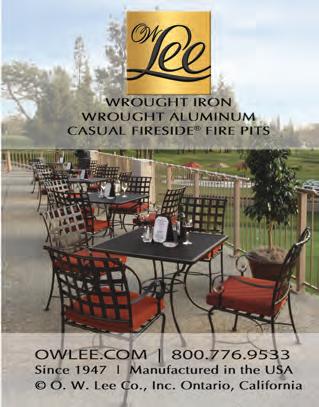
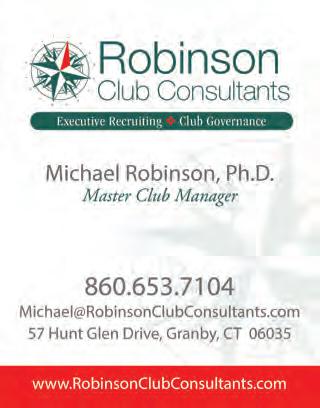





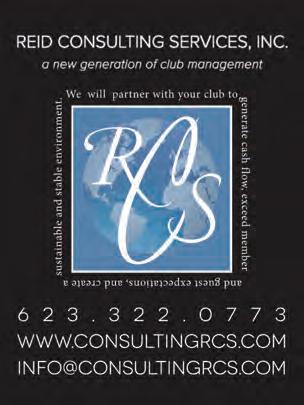




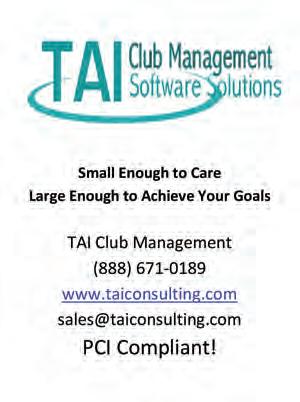

EG Communications
6750 N. Andrews Avenue
Fort Lauderdale, FL 33309
Tel: (954) 958-0338 Fax: (954) 928-2801
Website: www.eurographics.com
Email: martin@eurographics.com
Contact: Martin Marinov, president
Attorneys
Addison Law Firm
14901 Quorum Drive, Ste. 650
Dallas, TX 75254
Tel: (972) 960-8677 Fax: (972) 960-7719
Website: www.addisonlaw.com
Email: clublaw@addisonlaw.com
Contact: Randolph Addison, president
Club Advisory Services
Club Consultants LLC
5121 Castello Drive, Suite 1
Naples, FL 34103
Tel: (239) 643-7800 Fax: (239) 643-7803
Website: www.clubconsultants.com
Contact: Bill Wernersback, sr. mng. dir.
Club Neckties, Scarves, Emblems
Stratton-Crooke Enterprises Inc.
P. O. Box 215-H
Scarsdale, NY 10583
Tel: (800) 732-9719 Fax: (914) 725-5196
Website: www.strattoncrooke.com
Email: StrattonCrooke@aol.com
Contact: Nancy & Jim Crooke
Club Services
HFTP
11709 Boulder Lane, STE 110
Austin, TX 78726-1832
Tel: (512) 249-5333 Fax: (512) 249-1533
Website: www.hftp.org
Email: Laura.Huffman@hftp.org
Contact: Laura Huffman
Clubhouse Design
Chambers
100 Decker Drive, Suite 140
Irving, TX 75062
Tel: (972) 253-3583 Fax: (972) 259-9664
Website: cciclubdesign.com
Chambers 1800 Washington Blvd., Suite 111
Baltimore, MD 21230
Tel: (410) 727-4535 Fax: (410) 727-6982
Website: www.chambersusa.com
Email: jsnellinger@chambersusa.com
Contact: John R. Snellinger
Peacock + Lewis Architects
11770 US Hwy One, Ste. 402
North Palm Beach, FL 33408
Tel: (561) 626-9704 Fax: (561) 626-9719
Website: www.peacocklewis.com
Email: Brian@peacocklewis.com
Contact: Brian Idle
Clubhouse Architect
Judd Brown Designs
700 School Street
Pawtucket, RI (401) 721-0977
Contact: Peter Cafaro
H. Anne Blakely Sciarrone Architecture
P.O. Box 357
Decatur, GA 30031
(678) 632-2663
Contact: Anne Sciarrone
Clubhouse Furniture
Eustis Chair
P.O. Box 842
Ashburnham, MA 01430
Tel: (978) 827-3103 Fax: (978) 827-3040
Web site: www.eustischair.com
E-Mail: fred@eustischair.com
Contact: Fred Eustis
Gasser Chairs
4136 Logan Way
Youngstown, OH 44505
Tel: (330) 759-2234 Fax: (330) 759-9844
Web site: www.gasserchair.com
Email: ksmith@gasserchair.com
Contact: Kevin Smith
Global Allies
625 DuBois Street, #A
San Rafael, CA 94901
Tel: (877) 208-7185 Fax: (415) 453-6042
Web site: www.globalallies.com
Contact: David Cline
Construction
Parkway Construction
1000 Civic Circle
Lewisville, TX 75067
(972) 221-1979
Website: www.parkwayconstruction.com
Course Architects
George Golf Design, Inc.
609 Twin Ridge Lane
Richmond, VA 23235
Tel: (804) 272-4700 Fax: (804) 272-4771
Website: www.georgegolfdesign.com
Contact: Lester George, course architect
Consulting
Clubwise Consulting
3507 Dunlin Shore Court Norcross, GA 30092 (770) 248-1047
Contact: Jerry McCoy
Email: Cmaamcm@msn.com
Denehy Club Thinking Partners
501 Kings Highway East 06825 (203) 319 8228
Website: www.denehyctp.com
Contact: Dan Denehy
McMahon Group
670 Mason Ridge Center Drive , Suite 220
St. Louis, MO 63141
Tel: (800) 365-2498
Website: www.mcmahongroup.com
E-Mail: info@mcmahongroup.com
Course Maintenance
International Golf Maintenance, Inc. (IGM) 8390 Champions Gate Blvd #200 Champions Gate, FL 33896
Tel: (800) 413-5500 FAX: (407)589-7223
Website: www.igminc.net
Email: gregp@igminc.net
Contact: Greg A. Plotner CGCS, EVP
The Toro ® Company
8111 Lyndale Ave S Bloomington, MN 55343
Tel: (800) 803-8676 Fax: (952) 887-8693
Website: www.toro.com
Email: Turfequipment@toro.com
Executive Search Firms
GSI Executive Search, Inc.
Tampa Bay Office
P.O. Box 55877
St. Petersburg, FL 33732
Tel: (727) 525-6562 Cell: (727) 366-0487
Website: www.gsiexecutivesearch.com
Email: dick@gsiexecutivesearch.com
Contact: Dick Farrell, Principal
GSI Executive Search, Inc.
Northest Office
Rochester, NY
Tel: (518) 852-0986
Website: www.gsiexecutivesearch.com
Email: dan@gsiexecutivesearch.com
Contact: Dan Farrell, Senior Associate
GSI Executive Search, Inc. Midwest Office
231 S. Bemiston Ave. Suite 800 St.Louis, MO 63105
Tel: (314) 854-1321 Cell: (314) 452-8848
Website: www.gsiexecutivesearch.com
Email: scott@gsiexecutivesearch.com
Contact: Scott McNett, Principal Kopplin & Kuebler
Southwest Office
7349 Via Paseo Del Sur, Ste. 202 Scottsdale, AZ 85258
Tel: (480) 443-9102 Fax: (480) 443-9642
Website: www.kopplinandkuebler.com
Email: dick@kopplinandkuebler.com
Contact: Dick Kopplin, partner
Kopplin & Kuebler
East Coast Office
132 Tulip Tree Jupiter, FL 33458
Tel/Fax: (561) 747-5213
Cell: (407) 864-6798
Website: www.kopplinandkuebler.com
Email: kurt@kopplinandkuebler.com
Contact: Kurt Kubler, CCM, partner
Financial Services
Reserve Advisors, Inc.
205 E. Wisconsin Ave. Milwaukee, WI 53202
Phone: (414) 272-2002 Fax: (414) 272-3663
Website: www.reserveadvisors.com
Contact: Nik Clark
Food & Beverage Software
Culinary Software Services
1900 Folsom Street #210 Boulder, CO 80302
(303) 447-3334
FOOD-TRAK®/System Concepts, Inc. 15900 N. 78th Street
Scottsdale, AZ 85260
Tel: (480) 951-8011 x 8026
Fax: 480-951-2807
Email: nancys@foodtrak.com
Website: www.foodtrak.com
Contact: Nancy Shina, director of marketing
Ferry, Hayes & Allen Designers, Inc.
1100 Spring Street, Suite 600
Atlanta, GA 30309
Tel: (404) 874-4411 Fax: (404) 874-1099
Website: www.fhadesigners.com
Email: jbarret@fhadesigners.com
Contact: Jeff Barrett, executive vice president
HINT | Harris Interiors
49B Lenox Pointe
Atlanta, GA 30324
Tel: (404) 403-2931
Website: www.hintatlanta.com
Email: kelley@hintatlanta.com
Image Design, Inc.
3330 Cumberland Blvd.
Atlanta, GA 30339
Tel: (770) 952-7171 Fax: (770) 933-9093
Website: www.imagedesign.com
Email: mfleming@imagedesign.com
C2 Limited Design Associates
95 Reef Road
Fairfield, Connecticut 06824
Tel: (203) 259-2555 Fax: (203) 259-2565
Website: www.c2limited.com
Email: studio@c2limited.com
Contact: Craig J. Smith
Internet Domain
.CLUB Domain
100 SE 3rd Avenue
Fort Lauderdale, FL 33394
Tel: (877) 833-0000
Website: www.nic.club
E-Mail: info@nic.club
Insurance
GAB Robins
3300 W. Lake Mary Blvd, Suite 350 Lake Mary, FL 32746
Tel: (800) 248-3376
Website: www.gabvalue.com
E-Mail: service@gabvalue.com
Kitchen & Banquet
Spring USA
127 Ambassador Drive #147
Naperville, IL 60540 (630) 527-8600
Website: www.springusa.com
Locker Room Suppliers
Sports Solutions, Inc.
2536 Manana Drive
Dallas, TX 75220
Tel: (800) 969-8008 Fax: (214) 351-2609
Website: www.sportssolutionsinc.com
Email: sales@sportssolutionsinc.com
Contact: Laurie Schmidt
Planglow
899 Montreal Circle
Saint Paul, MN 55102
Tel: (800) 774-0536 #1
Website: www.Planglow-usa.com
E-Mail: jason@planglow-usa.com
Lockers
Salsbury Industries - Lockers.com
1010 East 62nd Street
Los Angeles, CA 90001
Tel: (800) LOCKERS Fax: (800) 562-5399
Website: www.Lockers.com
Email: Salsbury@Lockers.com
Outdoor Furniture
Bambrella
6464 East Rogers Circle
Boca Raton, FL 33487
Tel: (561) 288-8655
Website: www.Bambrella.com
E-Mail: info@Bambrella.com
Xhibtz Contract Furnishing
11071 Indian Lake Circle
Boynton Beach, FL 33437
Tel: (954) 614-1505
Fax: (888) 880-9124
Website: www.xhibtz.com
Email: xhibtz1@bellsouth.net
Purchasing Group
Essensa
555 West 57th St., 12th Floor
New York, NY 10019
Tel: (866) 430-5330
Website: www.Essensa.org
E-Mail: essensainfo@essensa.org
Club Benchmarking PO Box 2082
New Castle, NH 03854 (603) 553-8958
Signera
20140 Scholar Drive, Suite 314
Hagerstown, MD 21742
Tel: 877-998-7446 ext. 10
Fax: 301-850-3353
Website: www.signera.net
Contact: Michael Sparks
Culinary Software Services
1900 Folsom Street #210 Boulder, CO 80302 (303) 447-3334
Spa
Luxury Spa Sales 6601 Lyons Road, Suite D8
Coconut Creek, FL 33073
Tel: (800) 220-8646
Website: www.LuxurySpaSales.com
E-Mail: Spa@LuxurySpaSales.com
Technology
FOOD-TRAK®/System Concepts, Inc.
15900 N. 78th Street
Scottsdale, AZ 85260
Tel: (480) 951-8011 x 8026
Fax: 480-951-2807
Email: nancys@foodtrak.com
Website: www.foodtrak.com
Contact: Nancy Shina, director of marketing
Northstar
161 Kimball Bridge Road #200 Alpharetta, GA 30009
Website: www.globalnorthstar.com
Polar 2046 Castor Avenue
Philadelphia, PA 19134
Tel: (800) 831-7823 Fax: (215) 535-6971
Website: www.the-polar.com
Email: bradk@the-polar.com
Contact: Brad Karasik
Walco Stainless/Utica Cutlery 820 Noyes St. Utica, NY 13503
Tel: (800) 879-2526 Fax: (315) 798-3757
Email: susan@uticacutlery.com
Website: www.uticacutlery.com
Contact: Susan Martin
High End Uniforms 5442 Gateway Plaza Drive Benicia, CA 94510 (707) 746-7011
executive golf search.
97 Ferry, hayes & Allen.
FooD-TRAk. .
gasser.
gCsAA.
41
24
3
Mcgladrey. .
51 Chambers.
Club benchmarking.
Club Design Associates.
ClubTec.
Clubwise Consulting.
CMAA
Creative golf Marketing
Dei kitchen.
Denehy.
eustis Chair.
53
5
63
28-29
41
27
15
77
64
51
BOARDROOM MAGAZINE COUNTRY
griggs brothers.
6 high end uniforms.
61 hilda Allen.
75 hinT interiors. .
James g. Rogers.
Jonas.
Judd brown Designs.
13
69
8
61 kempersports.
45 kinon.
43 kopplin & kuebler.
31 MAi.
Paul M.g. Astbury, ocean Reef Club and the ocean Reef Foundation, key largo, Fl
Ron banaszak, gM/Coo, st. Francis yacht Club, san Francisco, CA
Phil bayne, fitness director, Delaire Country Club, Delray beach, Fl
Chris boettcher, gM/Coo, burlingame Country Club near san Francisco, CA
Michael block, PgA head Professional, Arroyo Trabuco golf Club, Mission viejo, CA
harald elisson, gM, black Mountain golf Club, hua hin, Thailand
Michael Froese, gM, The university Club of seattle, WA gregory kopan, president, inverness Club, Toledo, oh
Pete kujawski, president, sarasota yacht Club, sarasota, Florida
John Crean, general manager, broken sound Club, boca Raton, Fl.
barrett eiselman, general manager/Coo of silver Creek valley Country Club
Darrell elfeldt, president, Desert highlands golf Club,, north scottsdale, AZ
stephania Feltz, member relations director, sarasota yacht Club, sarasota, Fl
Judge Darcy goodman, president, Desert highlands golf Club, north scottsdale, AZ
Joanne hruska, president, The glencoe golf and Country Club, Calgary, Ab, Canada
David W. lacey, former board member, Philadelphia Cricket Club, Philadelphia, PA
Michael g. leemhuis, president, ocean Reef Club, key largo, Fl
55
nancy levenberg, member, spring lake Country Club, spring lake, Mi
William h. lichtenberger, president, harbour Ridge yacht and Country Club, Palm City, Fl
Doug Mair, President, The glencoe Club, Calgary, Ab, Canada
eben Molloy, gM, Woodfield Country Club, boca Raton, Fl
MacDonald niven, gM, la Rinconada Country Club, los gatos, CA
Thomas J. noyes, gM, spring island Club, okatie, sC
Dr. bonnie knutson, the Country Club of lansing and the Michigan Athletic Club
Paul levy, vice president PgA, gM and Ceo, Toscana Country Club, las vegas, nv
gregg Patterson, gM, The beach Club of santa Monica, CA
Daniel somogyi, general manager/Coo, Montclair golf Club, West orange, nJ Robert Williams, Westmoreland Club, Wilkes-barre, PA
Jim smith, Jr. PgA director of golf, Philadelphia Cricket Club
stone Mountain golf Club, stone Mountain, georgia
Penelope Wong, executive chef, glenmoor Country Club in Cherry hills village, Co
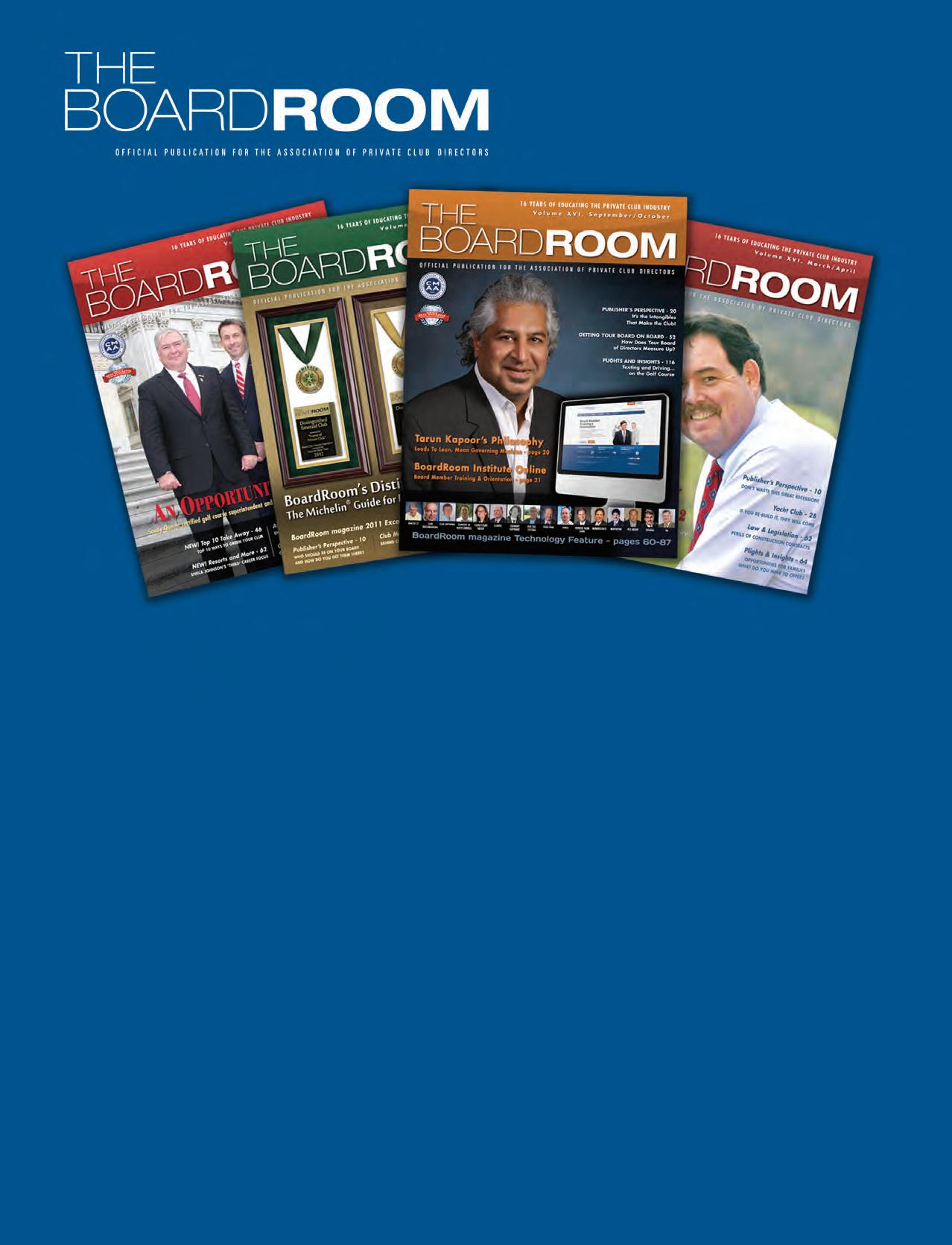
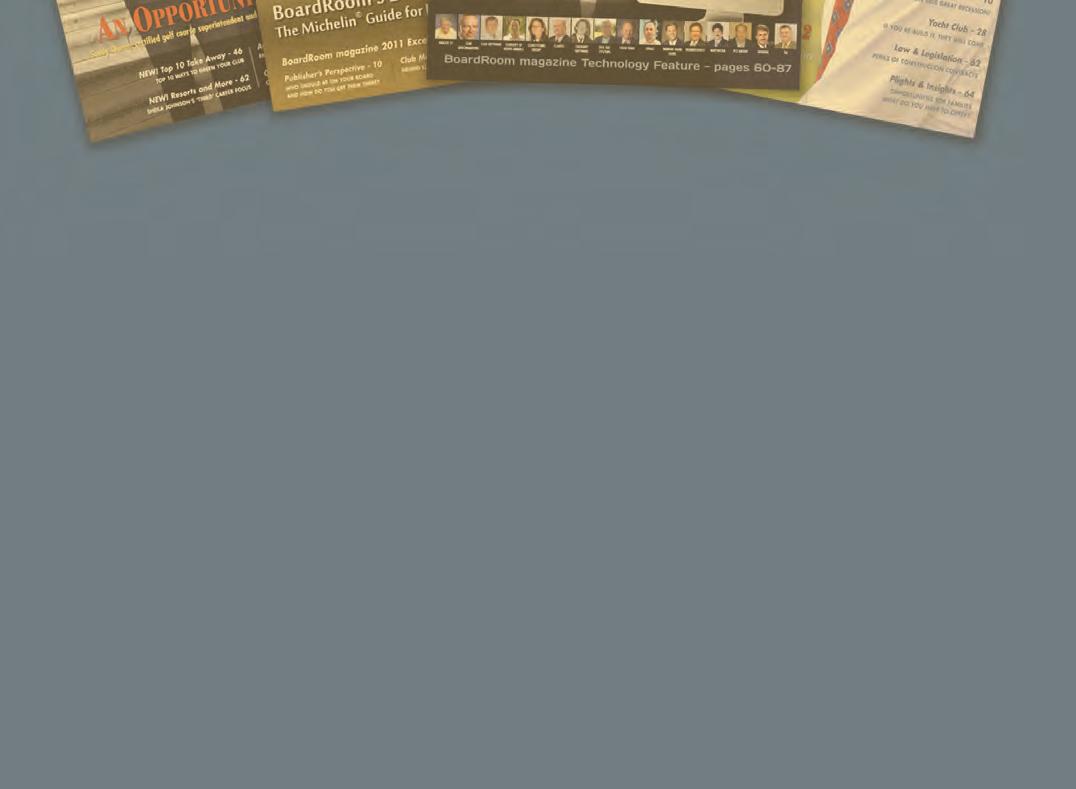
SINGLE SUBSCRIPTION @ $6900* (U.S.)
One (1) annual subscription to The BoardRoom magazine.
EXECUTIVE TRI - PAK @ $14700* (U.S.)
Three (3) annual subscriptions to The BoardRoom magazine for the general manager, board president and treasurer. Additional copies______@ $39 each BOARDROOM - PAK @ $29500* (U.S.)
Ten (10) annual subscriptions to The BoardRoom magazine for each of your board members. Additional copies______@ $29 each
